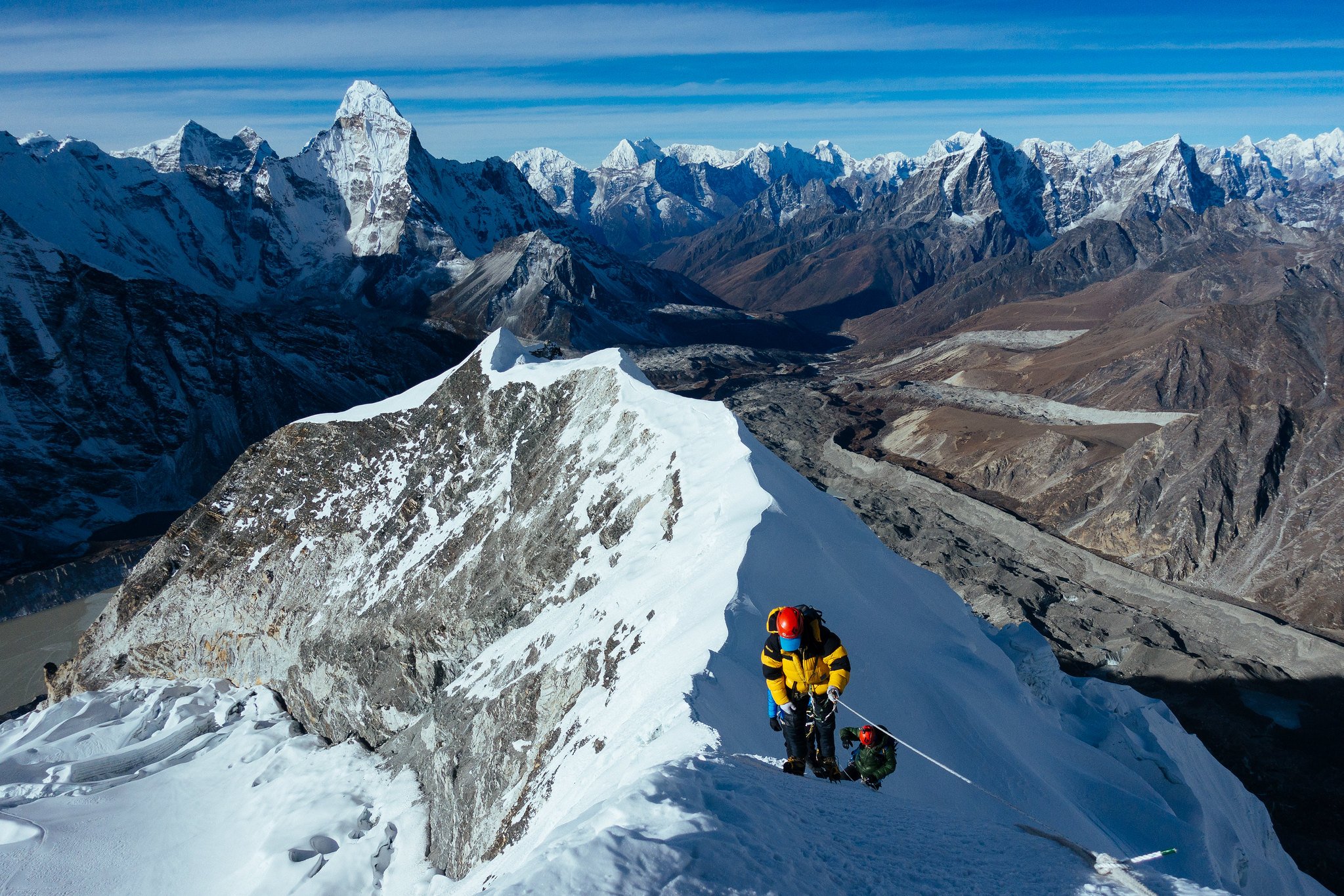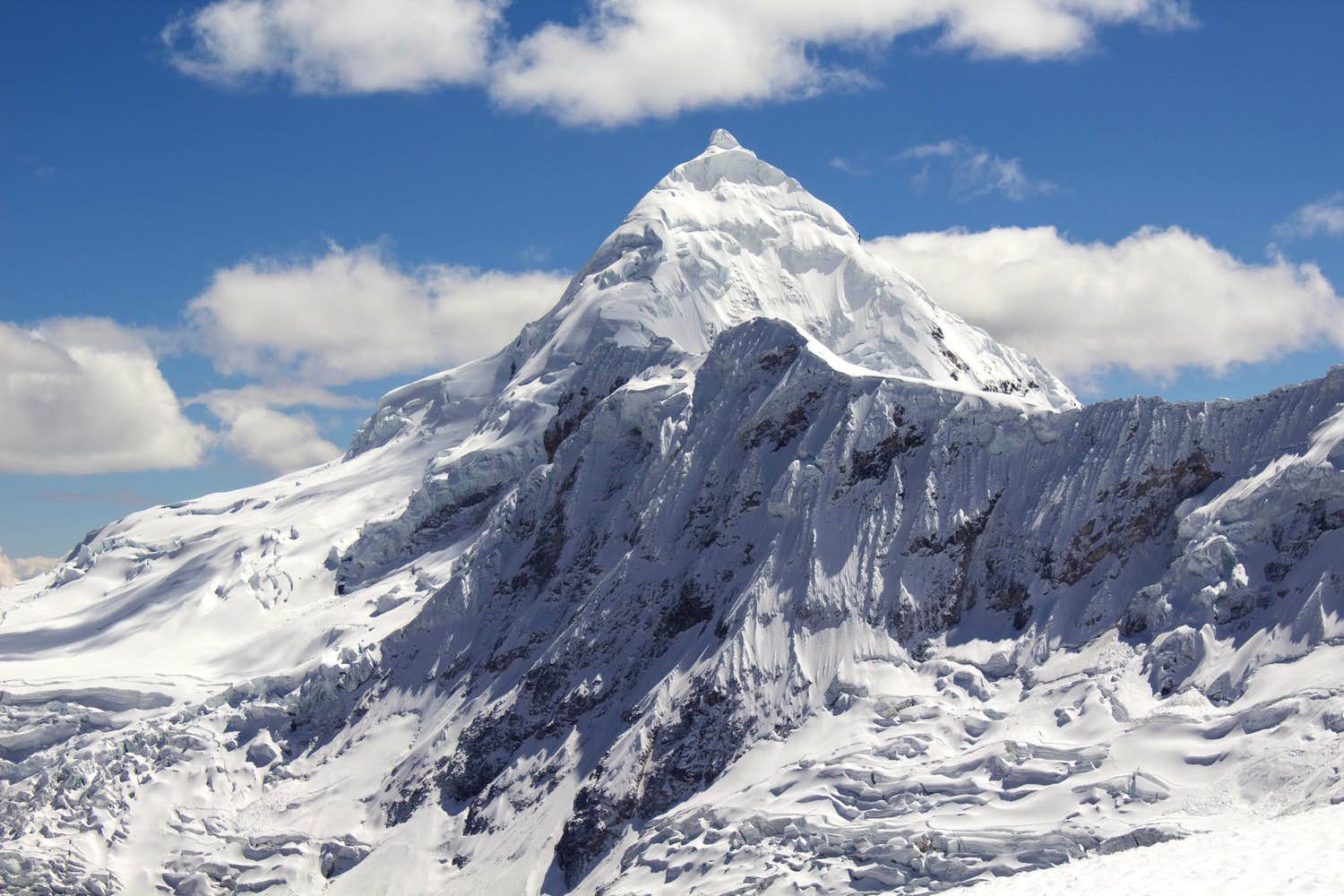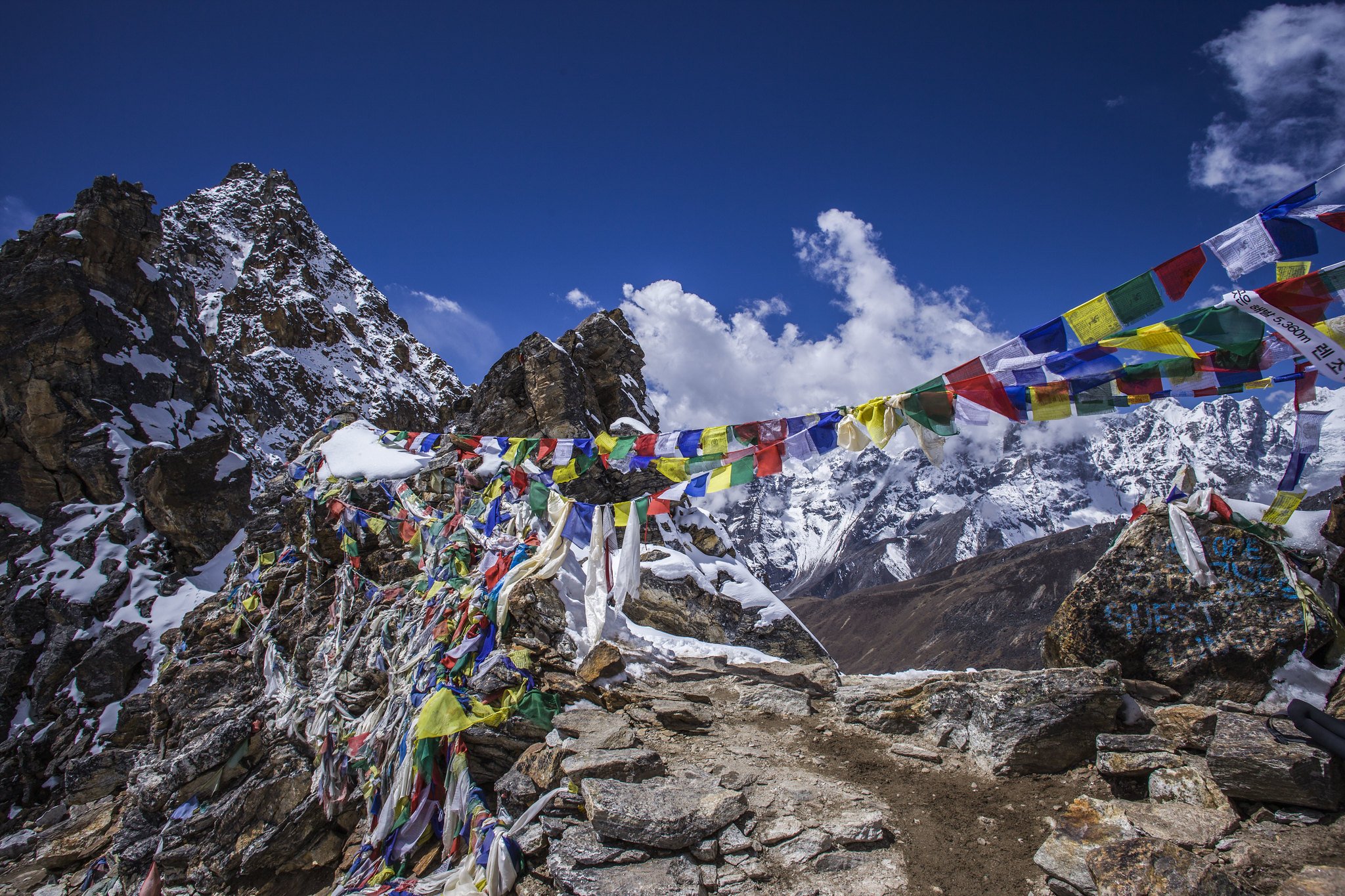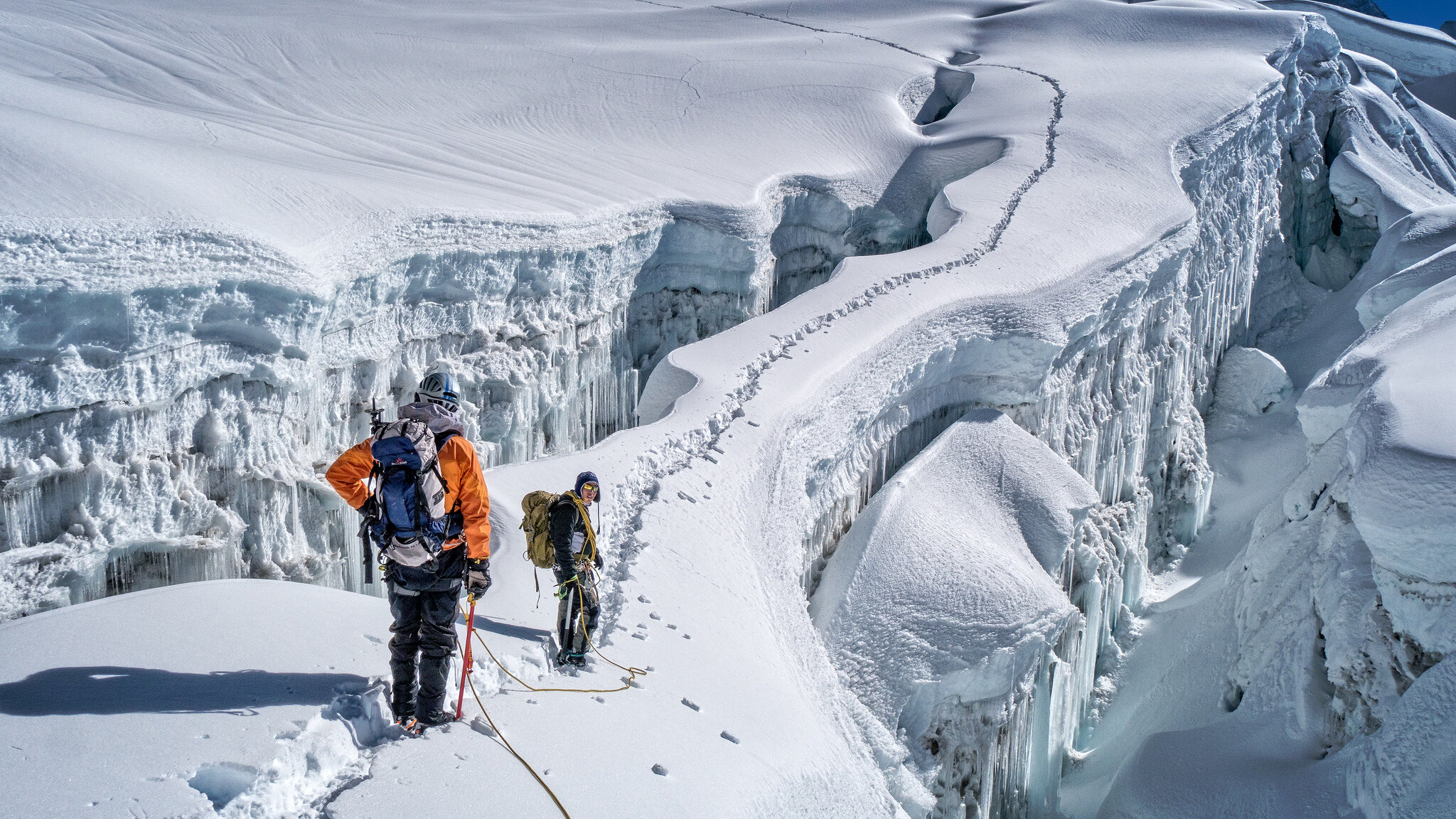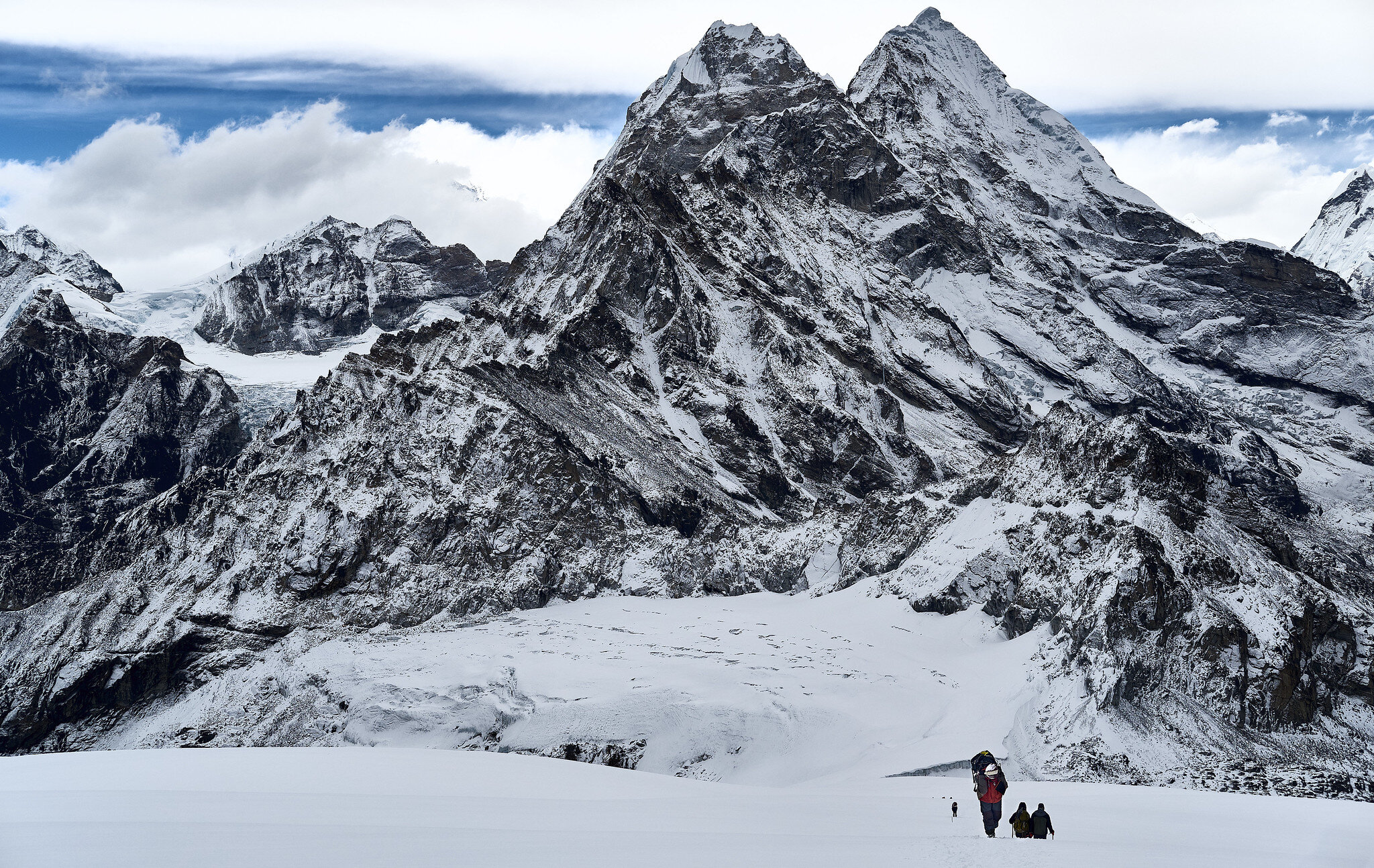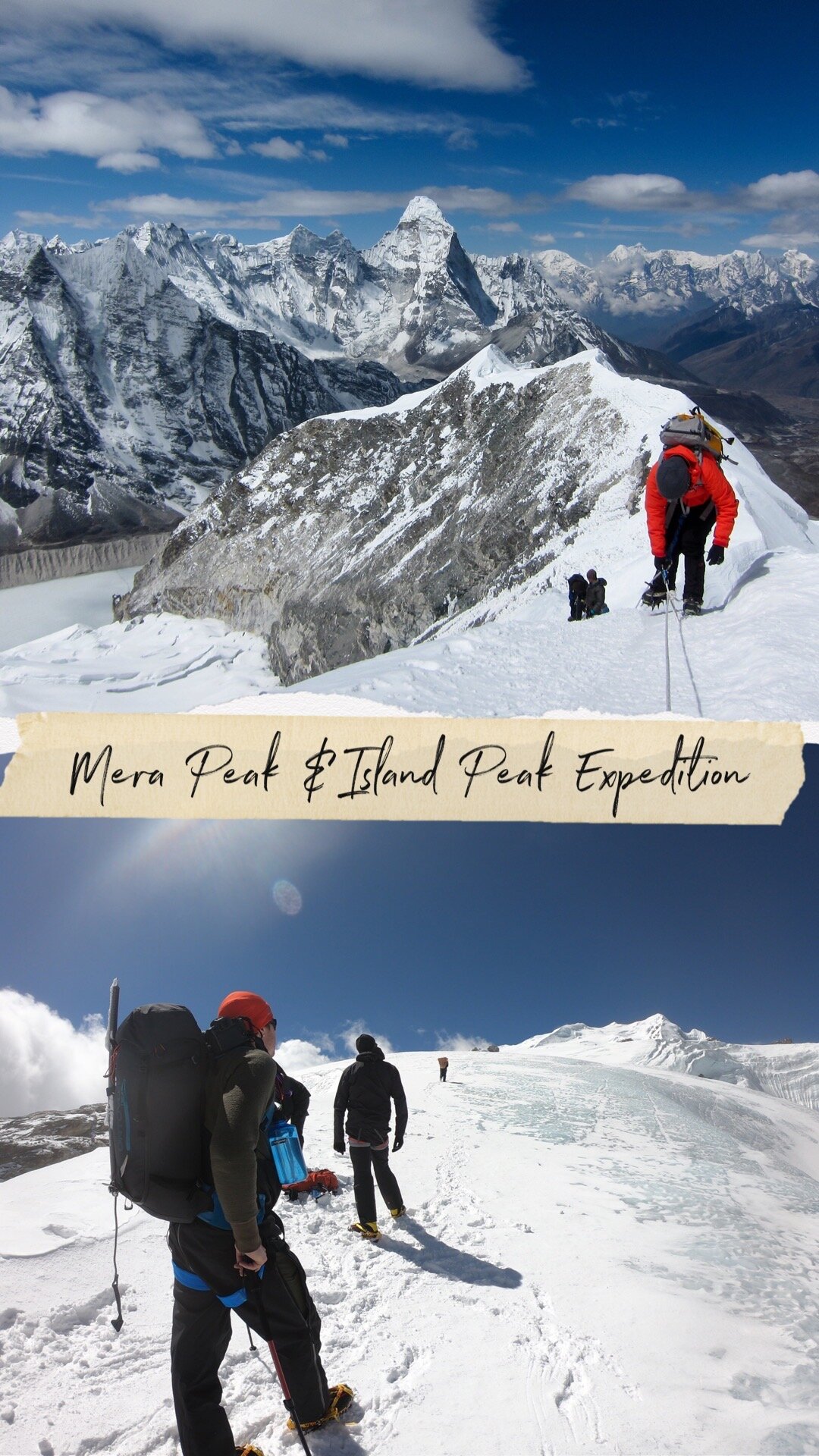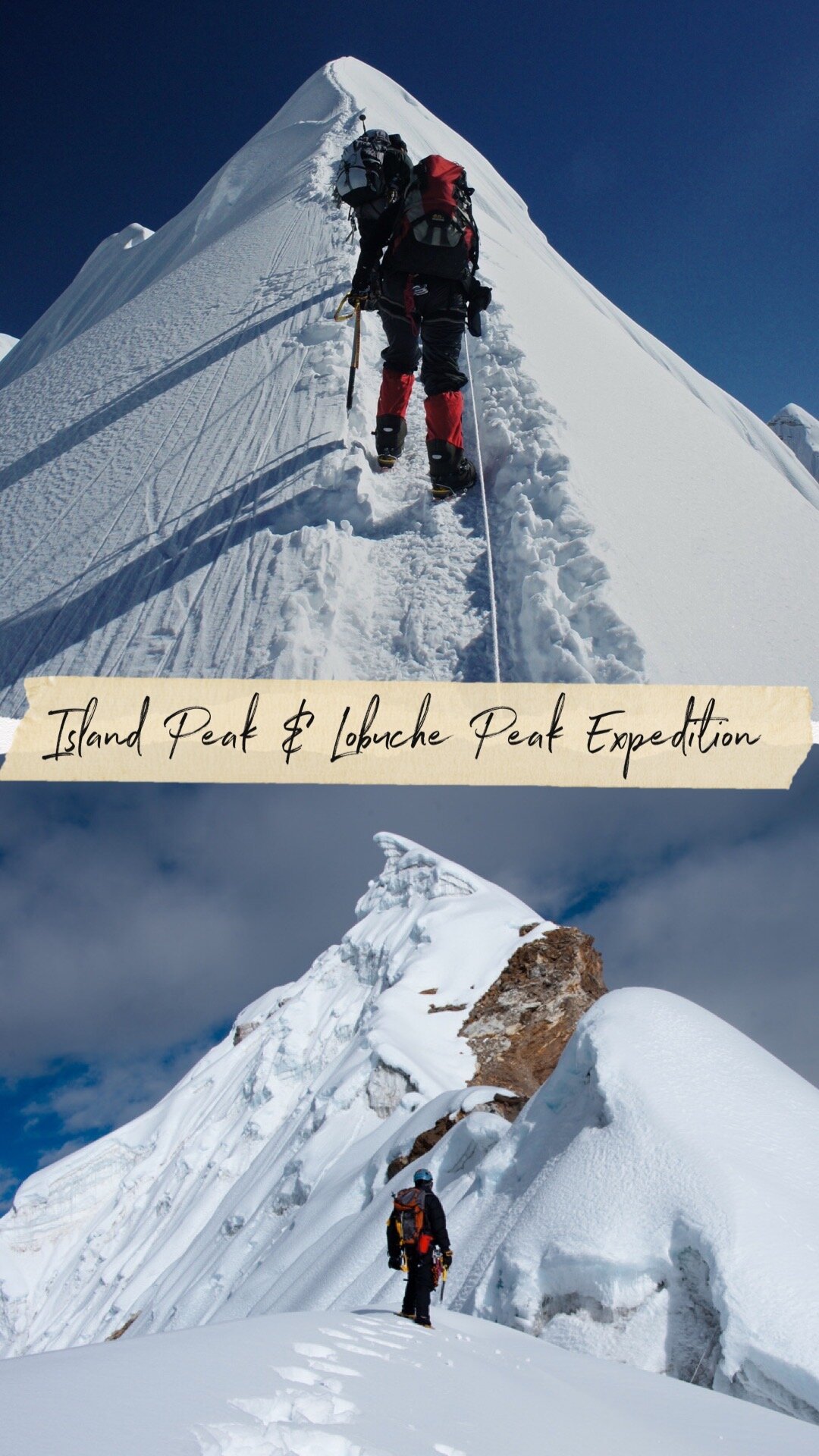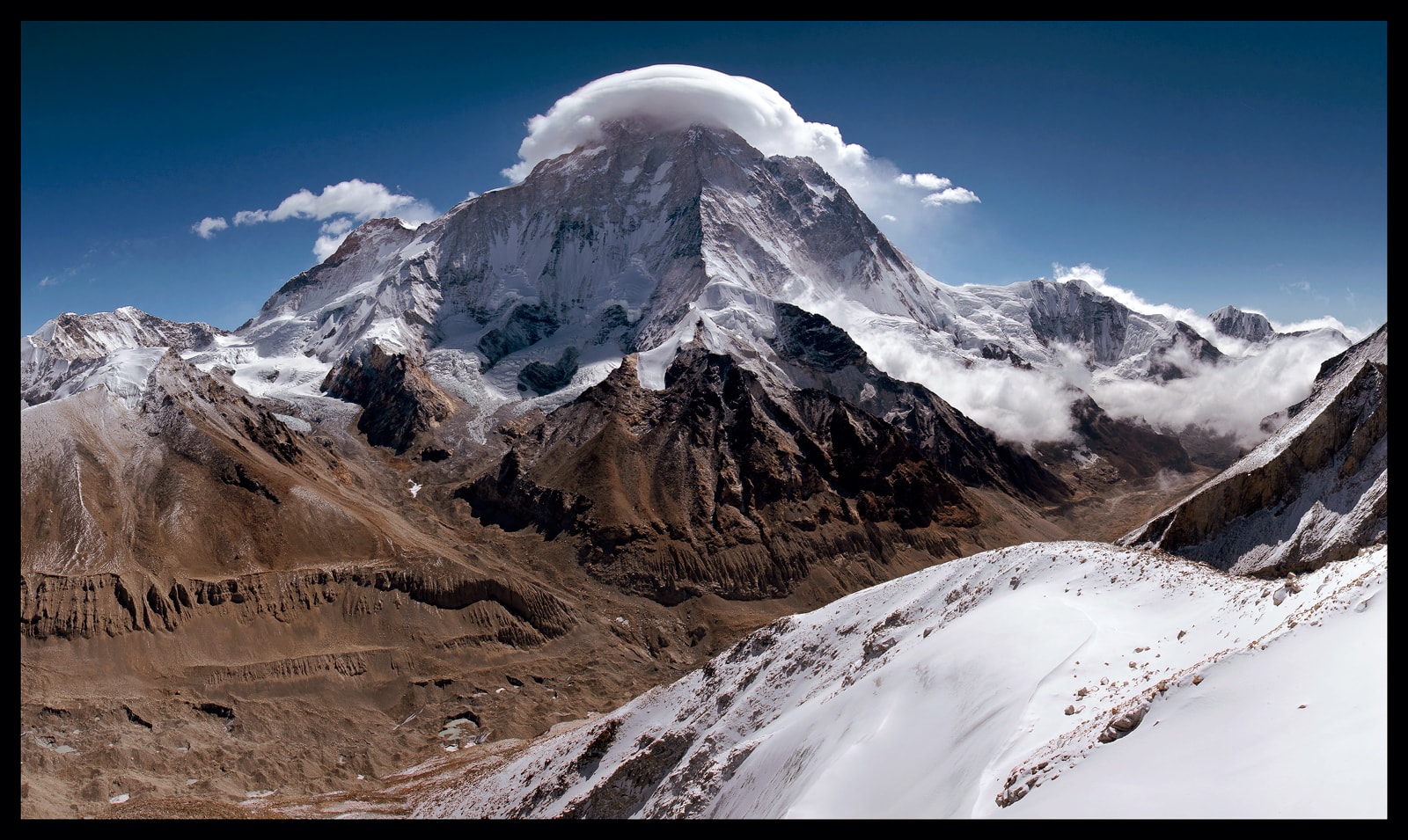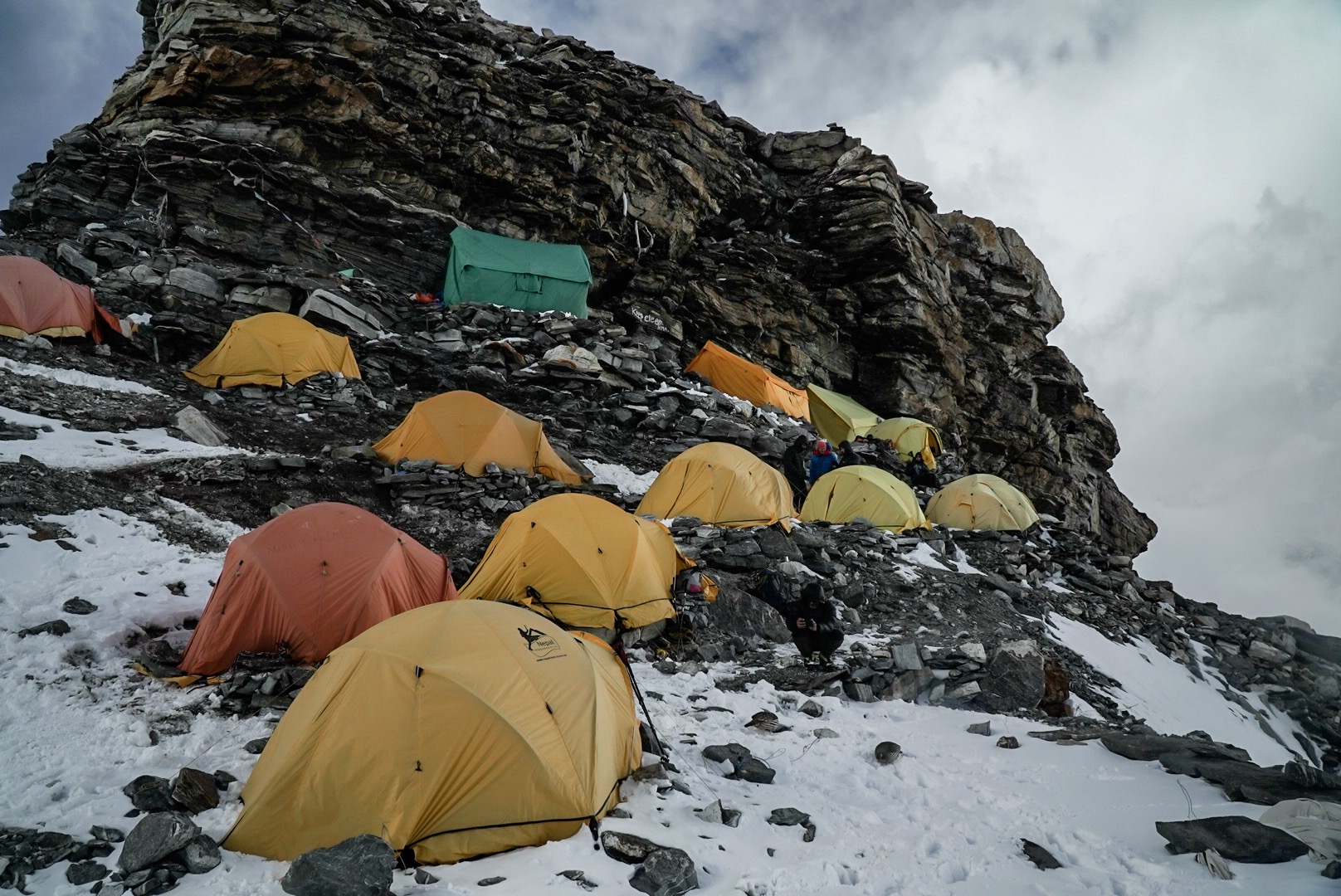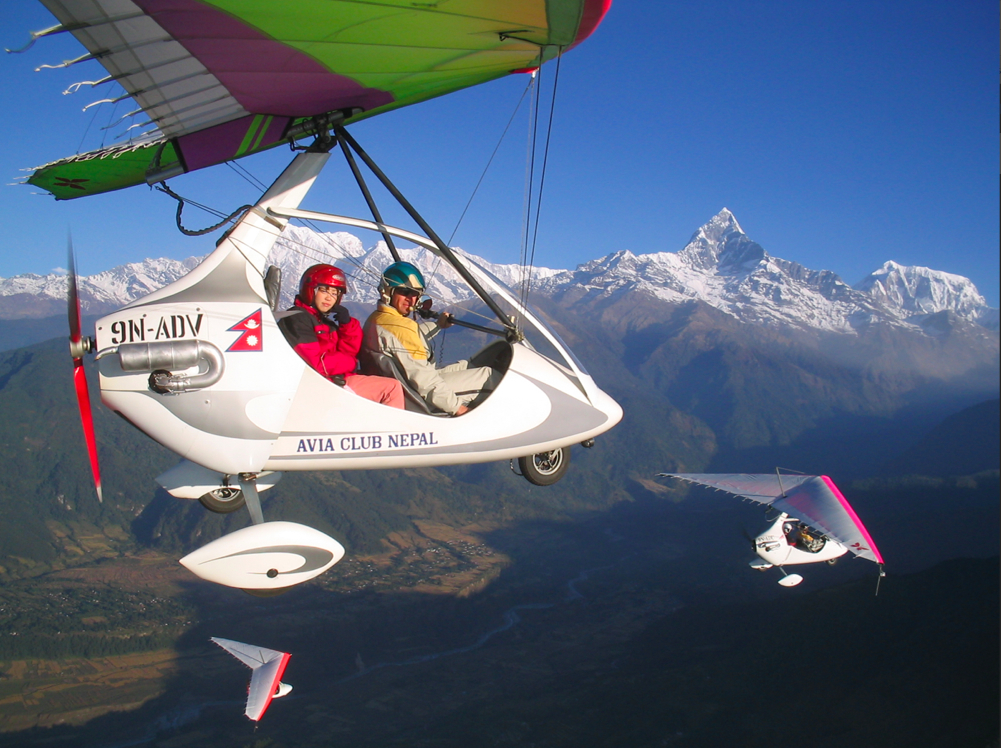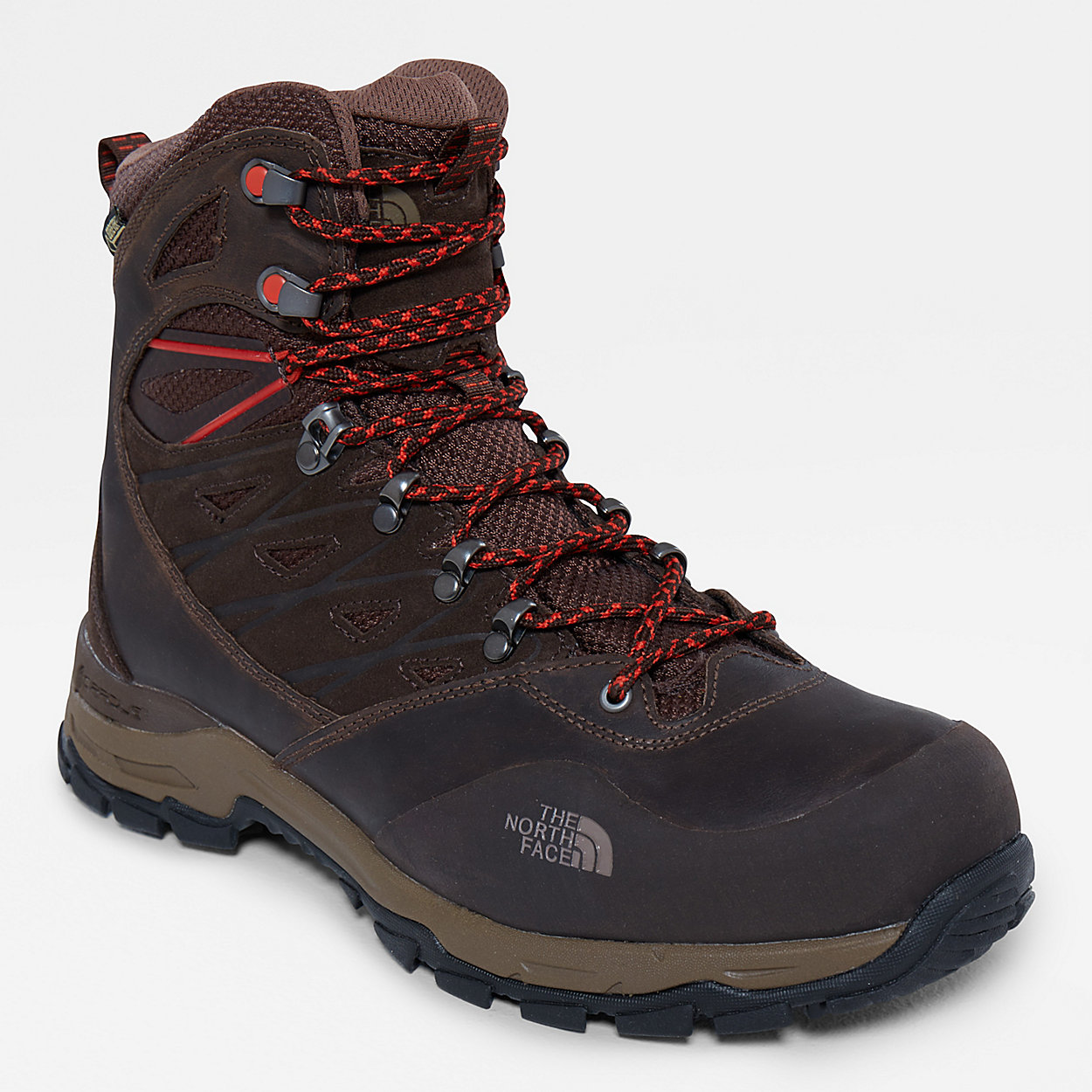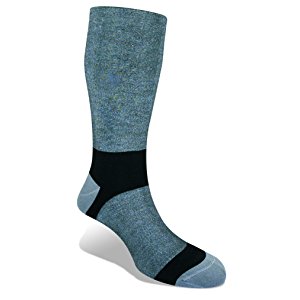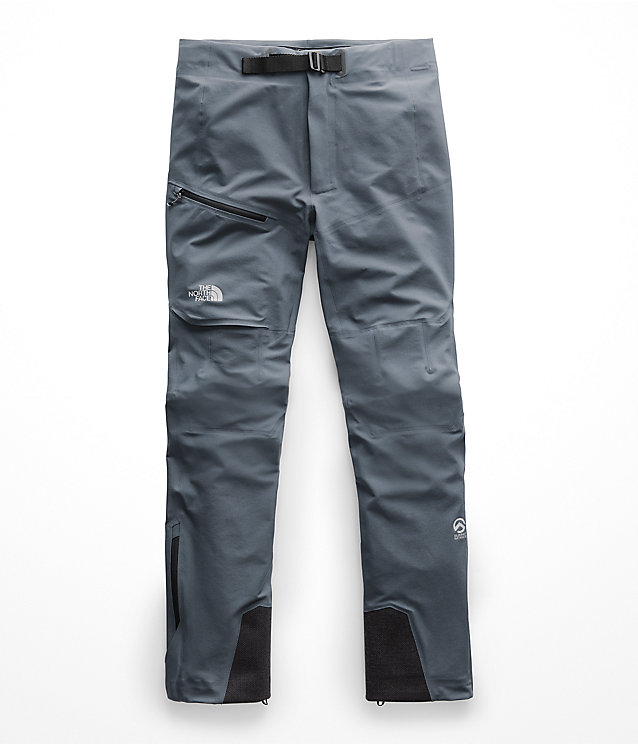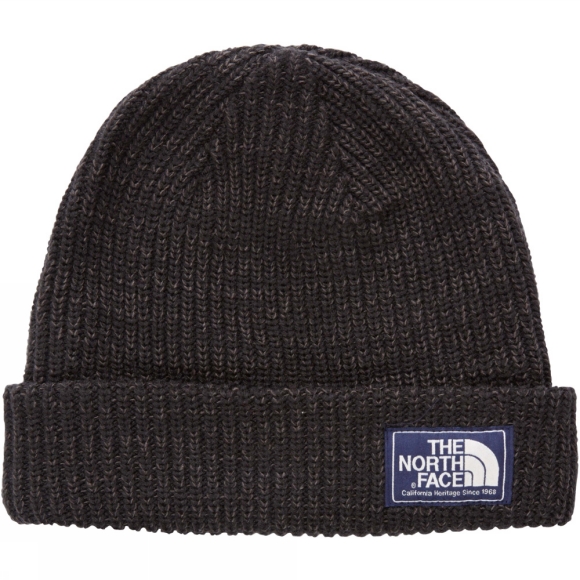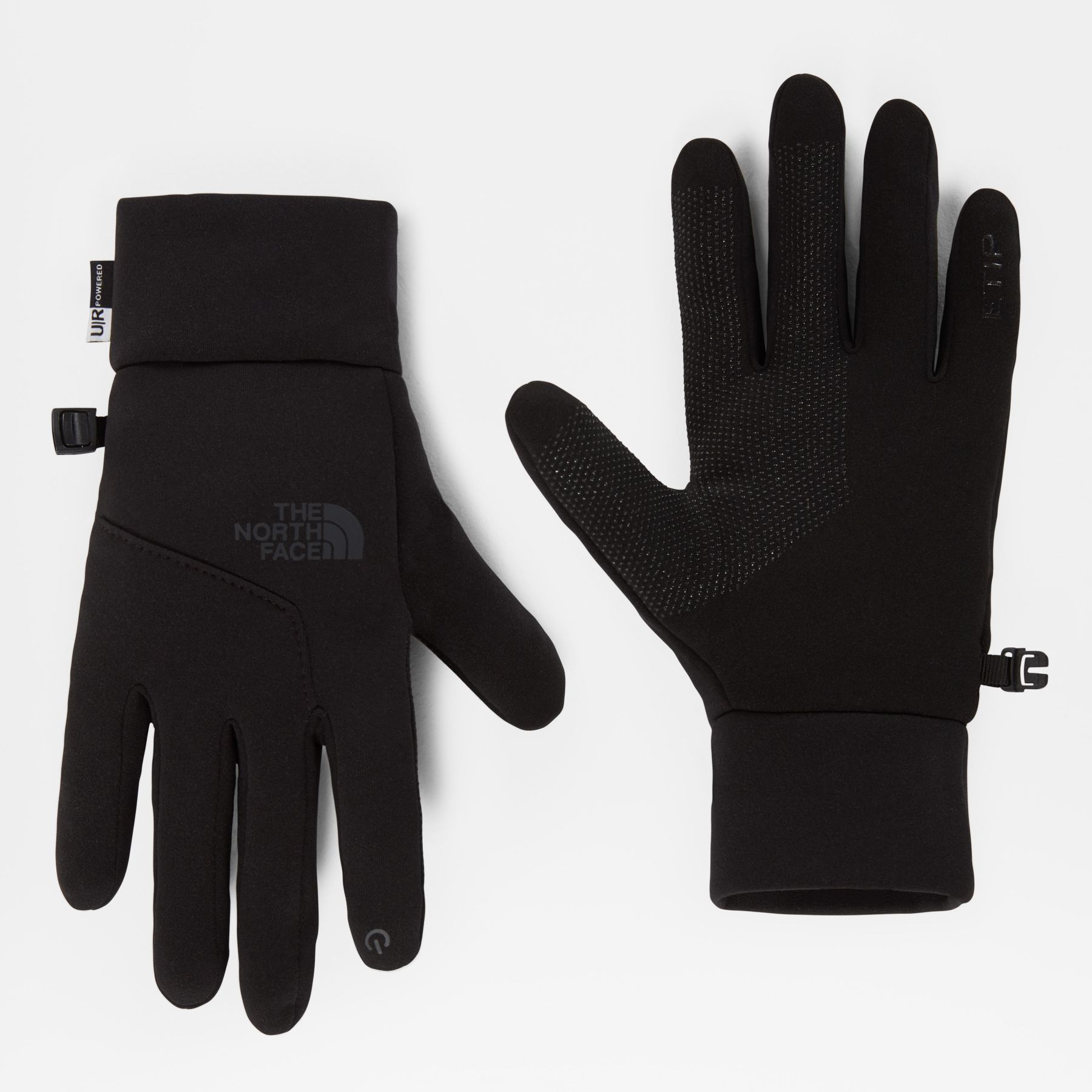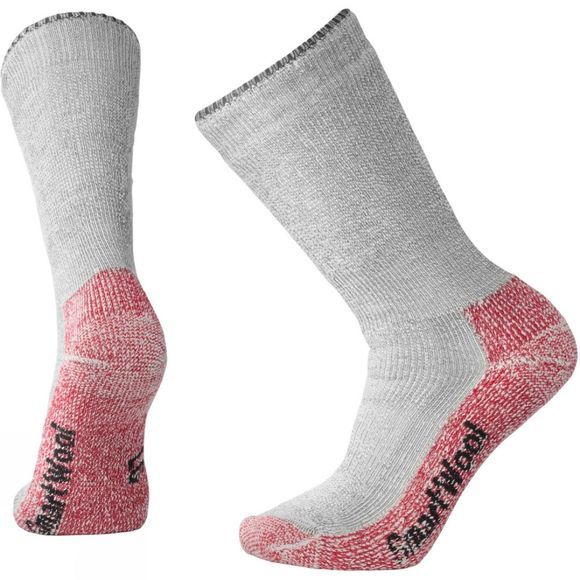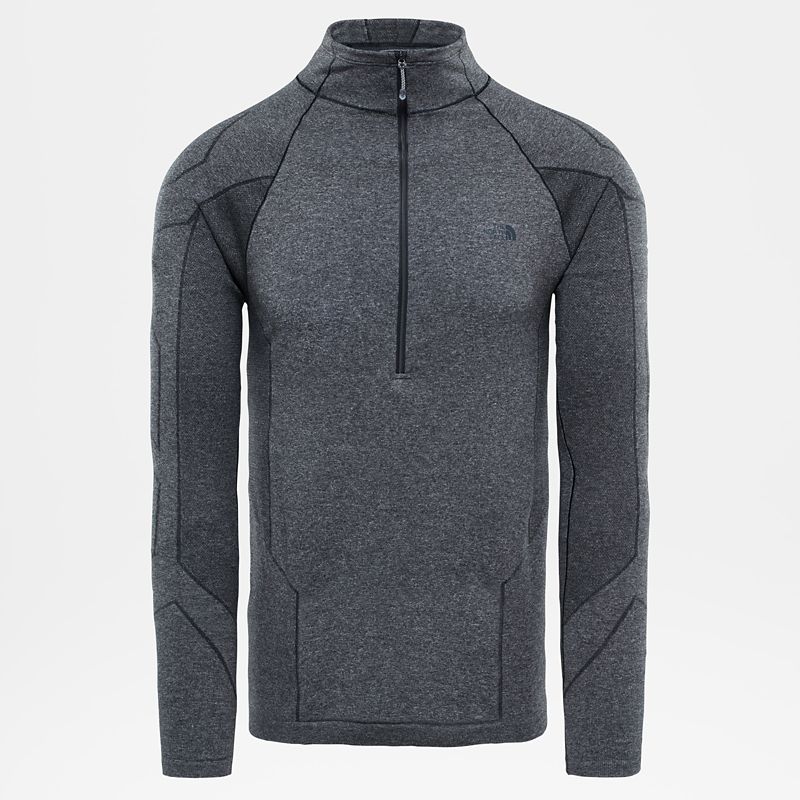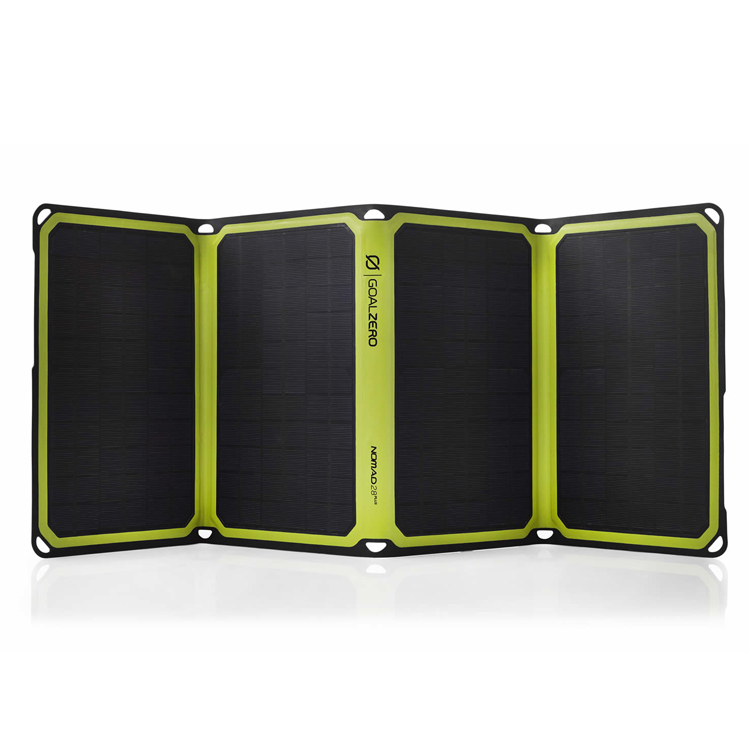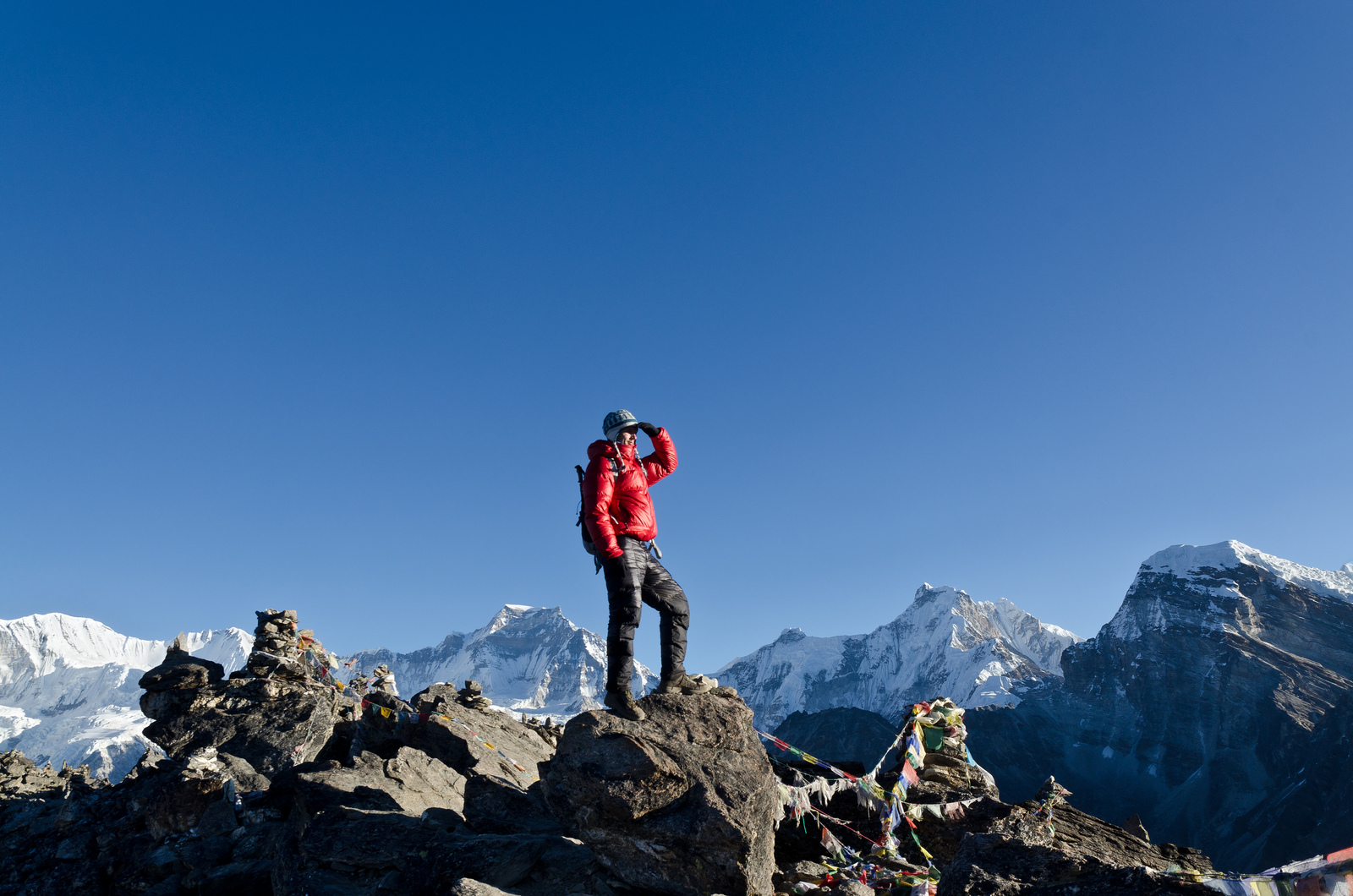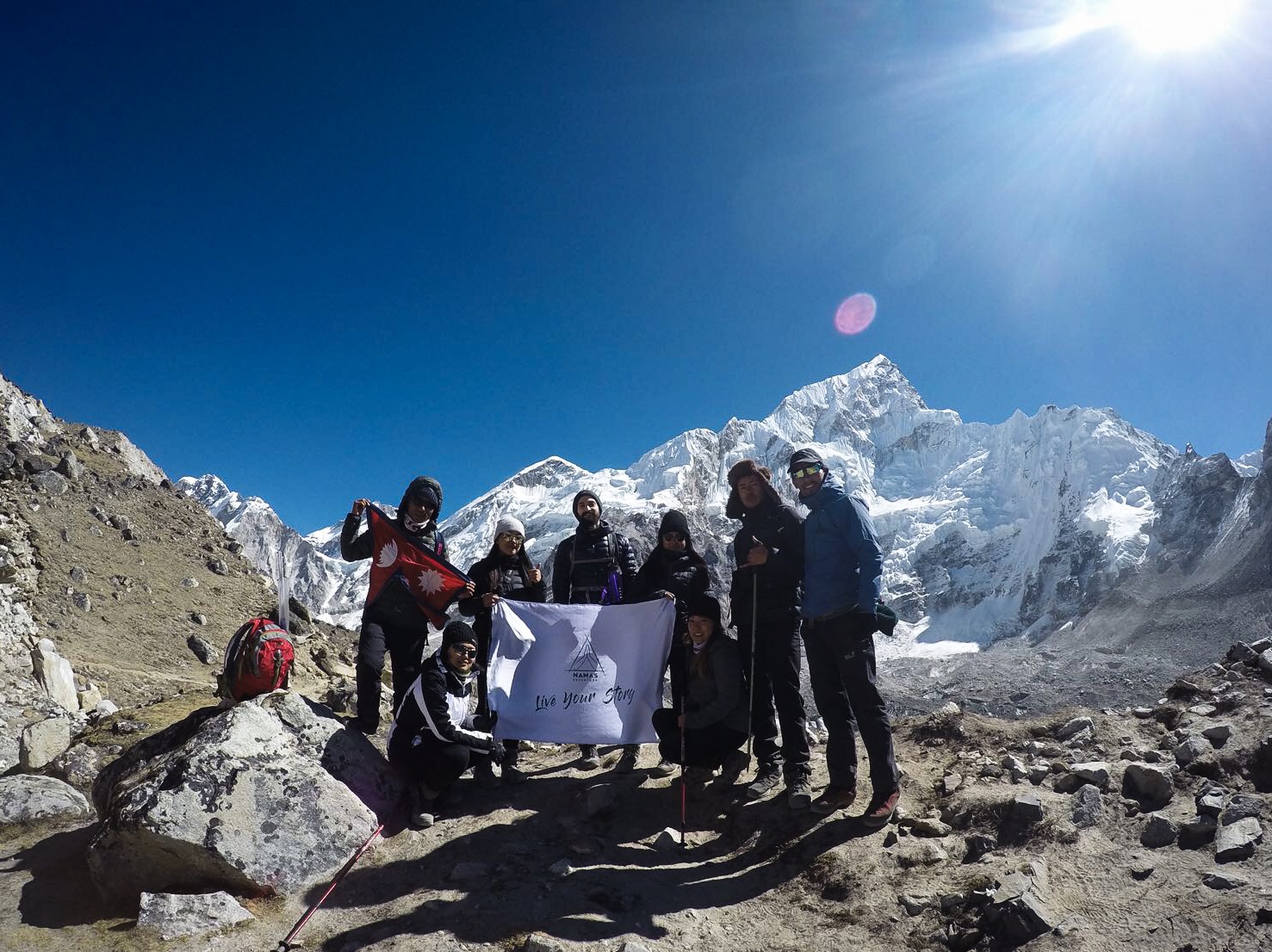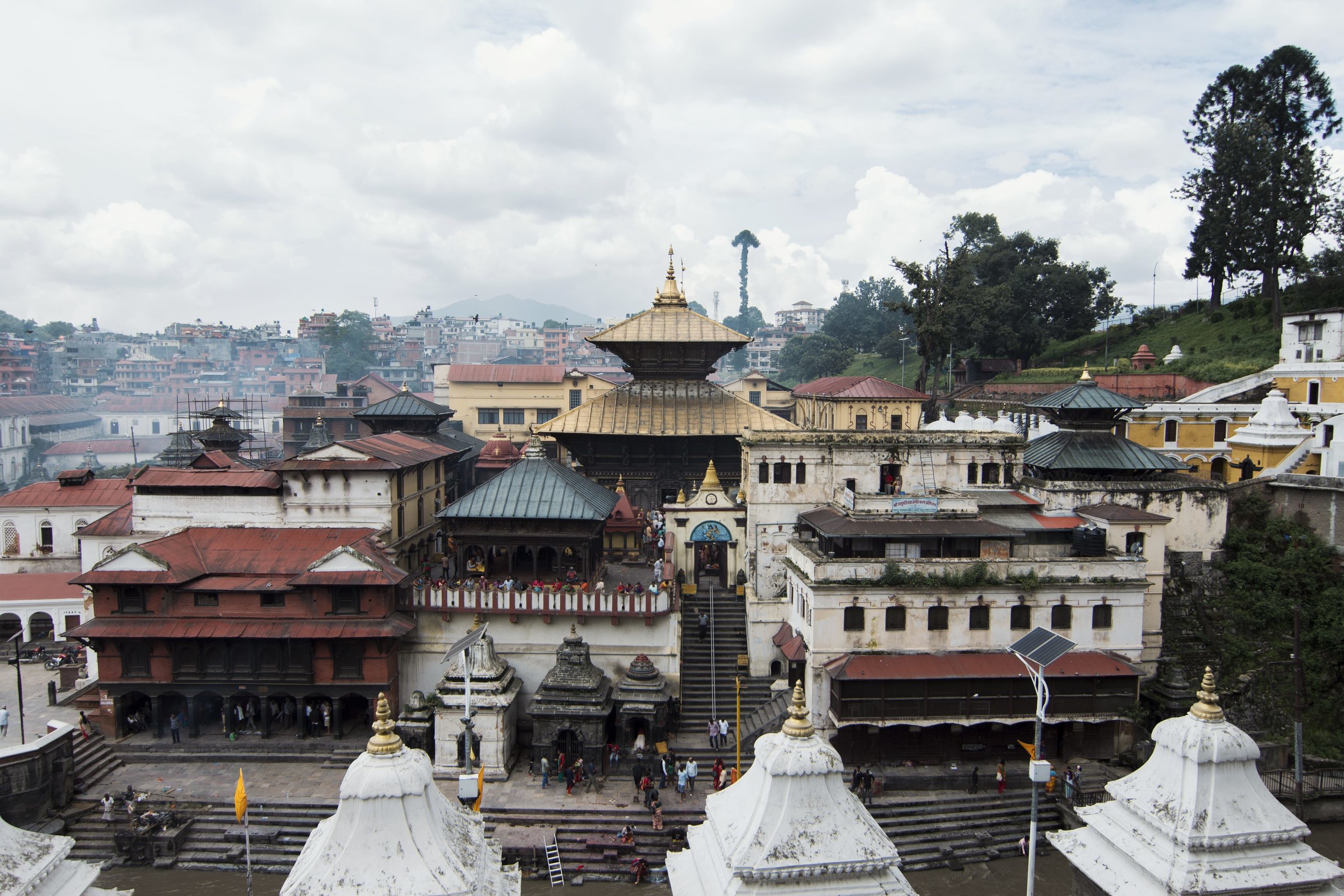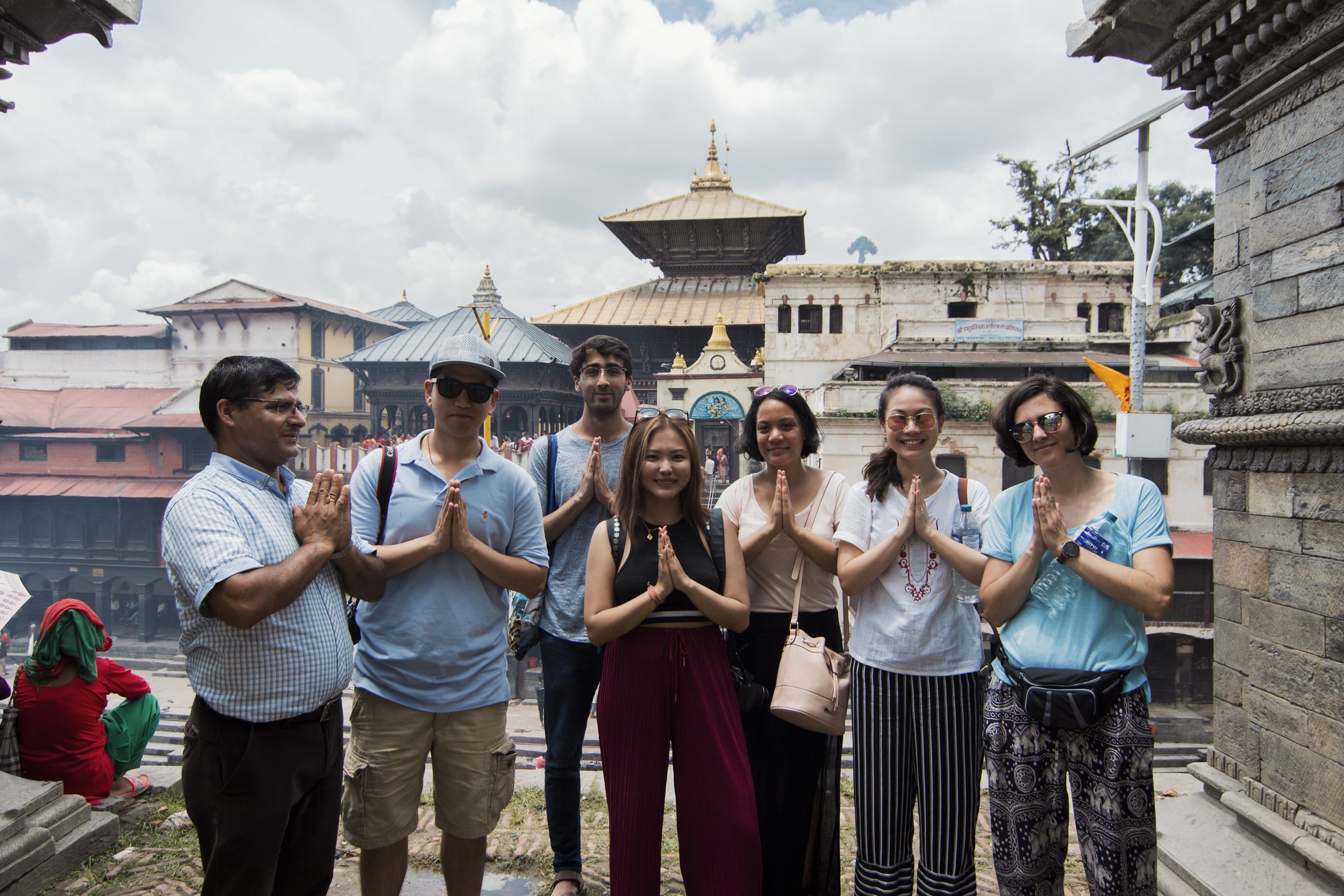Solo Trekking No Longer Permitted in Nepal, Except in Popular Everest Trekking Routes - Namas Adventure
According to a recent announcement by the Nepal Tourism Board, starting April 1, 2023, tourists visiting Nepal will be required to hire a licensed guide or porter before trekking through the country's wilderness. The move has been made to ensure the safety of tourists, as solo trekkers often face insecurities and are at risk of getting lost. This new regulation is expected to have a significant impact on Nepal's adventure tourism industry, particularly on popular trekking routes such as Annapurna Base Camp, Ghorepani-Poon Hill, and Langtang Valley, which are frequently visited by solo hikers.
Nepal Tourism Board FAQs - Link (Click here)
However, the Everest region seems to be an exception to this new rule. Technically, trekkers require a Trekkers Information Management System (TIMS) card for trekking or climbing in the Everest region. The local municipality has rejected this requirement and instead charges its own fee, which is then invested directly in the region. It remains uncertain whether the Sagarmatha National Park office will impose restrictions on solo trekkers in the future.
Official statement from Khumbu Municipality
In our opinion, this decision has its advantages and disadvantages. While famous trekking destinations with lower risk should be exempt from this rule, popular and less risky trek destinations, such as Poon Hill, Annapurna Base Camp, Mardi Himal, and Everest Base Camp, where the trails are clearly marked and have the presence of other trekkers, should be safe for solo trekkers. On the other hand, trekking destinations that pose higher risks, particularly in terms of altitude and are remote with few trekkers or local settlements, should require the presence of a guide. Examples of such trekking destinations include Manaslu Circuit Trek, Annapurna Circuit, Dolpo Circuit Trek, Upper Mustang, and Kanchenjunga Trek.
What are your thoughts on the New rules? Please comment below
Three Peak adventure challenge - Namas Adventure
For anyone seeking the ultimate challenges and an adventure of a lifetime, the three peak adventure challenges are the adventure trip go on. Not only are the climbs amazingly beautiful and exhilarating but is also a test of your will, character, and endurance. These adventures are not the biggest or the most technically difficult peaks to climb but the fitness it demands and how you push yourself to overcome the challenges is second to none.
We have two amazing itineraries in two different countries and a bonus three-pass challenge for the no-climbers who seek hiking challenges. These expeditions are for the ones who want to stay away from the busyness of the daily world and just enjoy their climb, seek challenges, test their will, go into the remote corners just to be one with nature, adventure and themselves.
Khumbu Three Peak Expedition
If you want to explore the best of the Khumbu region that covers the vast array of gem destinations, overseeing all the giant peaks that we have all been inspired throughout then the Khumbu three-peak expedition challenge is your ultimate adventure. Not only will you be climbing all the peaks over 6000M (Lobuche East 6119M, Island Peak 6189M, and Mera Peak 6476M) this expedition but also crossing over 5 high passes above 5000M+ throughout your itinerary. This expedition is suited for beginner or intermediate-level mountain climbers. But you will need to be in your top shape. There is no way around this if you want to enjoy and accomplish this amazing adventure challenge.
Summiting 3 amazing peaks is one accomplishment but exploring the cultures, hospitality, and warmth of Nepalese people leaves a lifelong mark. Other landmarks highlighted along this expedition are Lukla airport, Namche Bazaar, Gokyo lake, Everest three high passes, Everest base camp, Amphu Lhbatsa pass, Chetra La pass.
Want to take on this 30-day climbing challenge in Nepal? We organize private or group expeditions every year. Find out more on the expedition link below
For anyone seeking raw and remote climbing challenges in the South America, climbing in Peru is one of the best destinations. With just 16 days of expedition, our three-peak challenge in Peru allows you to climb three amazing peaks in the Cordillera Blanca region.
This is another amazing itinerary for anyone seeking climbing adventure challenges during summer. Our itinerary takes you through 2X5000M peaks and 1X6000M peaks where the difficulty increases gradually with each peak. Tocllaraju 6032 is the most difficult and long climb. Tocllaraju is the toughest and is quite a nutcracker. This final climb will test your adventure and fitness, making you dig deeper and push further. We climb in the remote region of Cordillera Blanca soaking in the beauty of the region and exploring the remote parts of the country.
Join us at Peru every year summer for this amazing three-peak expedition challenge.
This one is one of the holy grail treks of the Everest region. While the Everest base camp trekking route is the busiest trail, this itinerary avoids the crowds and explores the hidden gems of the amazing Everest/Khumbu region. This 22 days trekking adventure is for anyone who does not want to climb peaks but rather enjoys the uphill hike and challenges themselves on high altitude passes.
A perfect way to spend long days in the mountainous terrains of the Everest region, explore local cultures, traditions, amazing beauty, and take on the challenges. Trekkers will have to be fit to take on this particular challenging trek. The main highlights are Lukla airport, Namche Bazaar, Gokyo lake 4700M, Renjo-la pass 5370M, Cho-la pass 5420M, Kongma-la pass 5545M, Kalapatthar 5644M, and Everest base camp 5346M.
If you want a non-technical, high altitude, non-mountain climbing adventure challenge in the Everest region then this expedition is the one for you. Join us in Nepal every year spring and summer for this amazing Everest three-pass trekking challenge.
Everything you need to know about Island Peak climbing - Namas Adventure
Everything you need to know about
Island Peak 6189M climb
Planning on climbing Island Peak 6189M?
Here is everything you need to know about climbing this most popular 6000M+ peak in Nepal. Since 2016 we have been leading climbing groups to Island Peak and with our suggestions, our clients have been successfully able to enjoy while achieving their summit success.
Photo by - Brad
1) When is the best time to climb Island Peak?
For most climbers, Island Peak is best suited to climb during Spring (March-May) or Autumn (Mid-September - October) on any given year. The weather during these times in the Himalayan region and most of the places in Nepal remains stable, which is perfect for adventure activities. Spring season is chosen for most of the 8000+M expeditions in the Everest region, so you can expect trekkers’ crowd on the trails. However, once you reach your Island peak camping site, you can see the numbers dropping down drastically as the majority of the people on the trails are there for trekking.
Winter climbing is still possible, but we recommend this for individuals with a vast amount of mountaineering experiences, almost at the pro athletes’ level. Temperature is very low and weather conditions are harsh. It can be down to -25/-30 C and winds can pick up to 60mph+.
2) Are guides necessary for Island Peak?
Without the help of Sherpa guiding leaders, we do not recommend climbing in the Himalayas, unless you are a mountain guide yourself. You will have to walk through support ladders with crampons on while crossing the crevasse openings. The final climb to the summit is a 90-degree vertical climb where you will have to use ascenders to climb all the way up to the summit. Climbing a peak is not just about reaching the summit. You also need to consider the effort on descending back safely which can be equally exhausting as this requires your full focus as well. You will have to use atc or figure 8 gears to descend below from the peak.
We do collect mandatory pre-tour tips, which include summit bonus, tips to all the staff members involved in your climbing, porters, assistant guides, airport pickup/drop off drivers, and hotel helpers/securities. We fairly distribute these tips based on the type and amount of work each member has performed. Additionally, if our guests want to make extra personal tips, then they are more than welcome to do so.
3) What is the best acclimatisation itinerary for Island Peak climb?
When we want to commit to climbing adventure at a high altitude, slow and steady is the right way. Our itineraries have been refined and designed by our guides with years of climbing and guiding experiences. What we have found in general is that our bodies need an adequate acclimatization period to adapt to the environment after gaining a certain elevation.
On Island Peak climbing particularly, we highly suggest taking 2 days of acclimatization at Namche Bazar and an additional 2 Days stop at Dingboche. We then make sure your itinerary has both Island Peak base camp and Island Peak high camp afterward. Your body needs these adaptation periods when you are above 5000M. This way you can experience alpine camping, enjoy the Himalayas all around you, and had gained enough strength to make your final climb.
4) What training is required to climb Island Peak? Can you suggest me a training plan?
Island Peak is by no means an easy climb although we grade it as a beginner’s climb. Mountains are graded based on its technical and physical difficulties. For your training, it is very hard to mimic walking on ladders like the ones you will come across when crossing the crevasse. We highly recommend focusing on endurance and strength training. Any type of aerobic exercise, like long-distance running (10-15km) 3 to 4 times a week, cycling (1 hour - 2 hours), hiking gaining elevation with 10-15kgs weights on are some of the suggested training. More on our training mountain expedition blog.
Courses like beginner mountaineering classes are also a helpful tools. You will learn technical skills like climbing with a rope on 5/6 anchor points using ascenders, how to walk with crampons on ice, snow, and rock, and to be efficient with abseiling and overall gear safety checks awareness. Beginner Ice climbing alone is another course that will help you with all the required skills.
Photo by jemappelleguillaume(flickr)
5) How hard is Island Peak climb?
Island peak is graded at 2B in difficulty. (Alpine grading link).
If you are physically fit, then the final 2 days of your climb are the most difficult sections. Breathing is hard but with proper acclimatization done ahead of time and by staying well hydrated and consuming enough nutrition, you should be able to cope with the altitude. When you finally come across the vertical wall, this will be your final challenge. On top of that, you will be walking for 4-5 hours by the time you reach at this point. All your previous training of endurance and strength training should have prepared your body to face those challenges.
6) What are the clothing and gears - boots required for Island Peak climb (trekking and mountaineering)? Can I rent gears for Island Peak climb?
Choosing the right gear is very important. We advise climbers not to make compromises on the quality of gears and clothing, and to pay attention to layer up comfortably as well. You will depend highly on your clothes to keep you warm enough for the dropping temperatures at nighttime which can go down to -10/-15. Please check our equipment blog for recommended clothing and gear.
Renting your gears in Nepal? The simple answer is NO. This is one of the most frequently asked questions mainly by beginner climbers. We have tested and tried several gears in Nepal and frankly, we do not recommend hiring here. We know it might seem like a huge amount of expenses to buy all the gears, but they are well worth it. You can even hire from the city you live in. Make sure they are the original products from well-known adventure gear companies. (North face, Mountain hardware, Kailas, etc.)
Boots (trekking and mountaineering) for Island Peak
With better technologies, climbing shoes have improved every year. We highly recommend double-layered boots like La Sport G2Sm or Scarpa phantom. It is wise to spend on good mountaineering boots, as so with all the gears that we have mentioned in this post above.
7) What types of foods are available during Island Peak climb? Is clean water available and how much water intake is recommended?
We suggest all our clients drink 4-6 l of water every day. Staying hydrated will also help you with acclimatizing properly. It’s best to take hydration tablets or filtration bottles with you.
Most of the foods are prepared in the tea houses and during your climbing days, kitchen tents are set up by our Sherpa teams. You do not need to worry about food but remember to eat enough. In the high altitudes, although the weather is extremely cold, your body will naturally want to reject food or avoid using energy on anything, which includes eating too. You might have to force yourself with the first few couples of bites and then eventually your body will start accepting the food. We also provide packed dried meals, so that clients have other options should they not want to eat what’s being cooked in the tents.
Remember to avoid smoking and any alcohol intake. You might see our guiding leaders smoking or drinking but remember they are professionals and they have adapted very well to these environments compared to the climbers who go there just for adventure holidays.
8. How long do climbers hike or climb every day?
On usual trekking days, you will be walking for 5 - 6 hours a day covering 10km - 14 km. But on the summit day, your climb could last up to 8 - 9 hours since it is advised to go as slow as possible, using the right amount of energy for the long duration and inhaling as much air as possible.
9. Everest base camp tips
Island Peak itinerary falls right in the middle of the Everest base camp trek. That’s why we have chosen to have it on our itinerary so that climbers can visit this iconic Everest base camp and see the great Khumbu icefall, the doorway to Everest climbing. See more on our blogs about Everest base camp tips.
10. What trip insurance will I need for Island Peak climb? Do I need helicopter evacuation to be included in my insurance cover?
No matter how prepared you are, you never know when or how things might go wrong. You might be sick suddenly or not that we wish but there might be some incident, you might suffer from altitude sickness or anything we can’t imagine yet. So, for these reasons, it is always good to have insurance cover. Our recommended Insurance companies (link)
Photo by - fwarrenphinney
Helicopter evacuation is our final emergency option and we do recommend you have one in your insurance, as it is the only means of transport in the Everest region. Our guides will assess your condition and examine if it is a major issue. If not, they will use their experience to motivate and push you through your trip. However, in case of emergency, helicopter evacuation will be called upon.
There is a procedure to follow when calling for emergency evacuation. We will call the insurance company hotline, get approval with your insurance, and only then helicopters are sent to the distress call location. You will have to pay for the evacuation in Nepal from your own pocket but once you are back home you can claim your money back. Make sure you collect helicopter evacuation receipts, certified doctor’s approval letter. The insurance company will ask for this evidence to back up your claim. There was a huge helicopter scam in Nepal in 2018, so insurance companies are taking extra measures to stop this from happening. Our guides and staff members in Kathmandu will also remind you of this process during briefings.
11. Which other high-altitude peak climbing can I aim for after Island Peak climb? Can I combine other 6000M+ peaks with Island Peak climb?
If you want to extend your trip and combine other 6000 M peaks along with Island peak, then we would like to recommend the following two other itineraries.
This itinerary takes you through the highest trekking Peak Mera 6476 M and then down to cross Amphu Lapsta pass. The route takes you down towards Barun valley where Baruntse Peak 7129 M peaks stand tall and towards Mera Peak, the highest trekking Peak in Nepal.
Island Peak with Lobuche Peak climbing
Lobuche Peak is another 6100+ M peak that is often used by Everest summit climbers as acclimatization peaks. The peak is just two camps away from Island Peak and is a great combination should you want to take upon two peaks at once.
This expedition program is the holy grail and the best possible introduction to Himalayan climbing - we ascend three beautiful 20,000 foot (6000+ meter) peaks which is one of the most spectacular settings in the world. Join this trip for great trekking, a rewarding cultural experience with the Sherpa people, and a challenging feat on climbing on Mera Peak (6,476M), Island Peak (6189M), Lobuche East (6119M).
If you want to aim higher after Island Peak towards 7000M+ peaks then Baruntse 7129 M, Himlung Himal 7126 M are some of the peaks climbing we would recommend. Just climbing Island peak won’t be enough, we suggest you climb more different technical and non-technical peaks in Europe around the alps if possible. Amadablam Expedition is another super technical and tough mountain we would like to recommend but you will have to be extremely great with your mixed climbing skills and be fit both mentally and physically.
If you are planning to climb Island Peak in any given year, we run climbing trips every year during Spring and Autumn.
Please click the link to be directed to Island Peak Expedition page.
If you do have any more questions, please ask us below in the comment section or you can email us at bookings@namasadventure.com and our team will get back to you as soon as they can.
Stay well. Challenge yourself. Dare great things and live your story.
Namas Adventure team
5 Things to know about Mera Peak climb - Namas Adventure
Descending down Mera Peak Summit
5 things to know about Mera Peak climbing
When is the best time to trek/climb Mera Peak?
March-May ( Spring ) and September - November (Autumn) is the best time to trek/climb Mera Peak.
Is Mera Peak suitable for beginner climbers and what kind of fitness do I need?
Yes, Mera Peak is a non-technical high-altitude trekking peak. To reach summit 6476M you do not need any special climbing skills with ropes, gears, and use of an ice axe. Mera Peak is a very popular destination for clients with little or no mountaineering experience. The mountain has fewer to non-technical challenges, there are 3-4 small opening crevasses during the climb but apart from that, the climb is straightforward. All climbers are recommended to partake in preparative fitness and altitude training before attempting an ascent. You should be able to carry 5-8 kgs of your bag pack, walk up and downhill every day for 15/16 days and be able to push yourself during the summit climb.
Physically for beginners, Mera Peak can be demanding. We highly suggest you train yourself well over 6 - 4 months before your trip. You will need good endurance and body strength. Aerobic exercises mixing with overall body strength-building routines should help you prepare physically for your trip.
Can I see Mt. Everest from Mera Peak?
From the summit, five 8,000m peaks are visible: Mount Everest, Lhotse, Cho Oyu, Makalu, and Kangchenjunga, as well as many other Himalayan peaks. The standard route from the north involves high-altitude glacier walking. The west and south faces of the peak offer more difficult technical routes.
How hard is it to climb to the summit of Mera Peak?
Mera Peak is classed as 1B alpine grade. When it comes to an expedition the more fitter and stronger you are, the better your chances of successfully climbing to the summit and most of all enjoying the expedition. Summiting Mera Peak mostly depends on the weather condition and your fitness level. The climb normally starts around 3/4 am in the morning and it is about 3-4 hours climb to the summit. For any climbers it is a technically straightforward ascent, the main hurdle being proper acclimatization to the high altitude.
Which Mountain can I aim for after Mera Peak that’s above 6500M?
If you have got time and you are feeling extra adventurous then you can either Mix Mera Peak with Island Peak, which takes you through a beautiful and challenging Amphu Lapsta pass. On the way, you will also come across Baruntse 7129M and Makalu 8481M. Or you can simply take on our challenge of three 6000M+ Peak expeditions. (Mera, Island and Lobuche East) Peaks (Click for expedition Link)
Our main suggestion is to take it one step at a time. The lure of Everest is there but taking small steps, gaining the right experience, and understanding your physiology is very crucial for climbing higher mountains. Amadablam 6810M, Baruntse Peak 7129M, Manaslu 8163M, Tilicho Peak 7134M are some of the 7000M+ - 8000M+ Peak expedition we operate and organize at Namas adventure.
If you do have any more questions, please ask us below in the comment section or you can email us at bookings@namasadventure.com and our team will get back to you as soon as they can.
Stay well. Challenge yourself. Dare great things and live your story.
Nutrition for Mountain climbing - Namas Adventure
NUTRITION FOR MOUNTAIN CLIMBING
Image- Namas Adventure, Mera Peak summit
Climbing high altitude mountains for both sports and recreational purposes is an immense physical challenge. Altitudes above 4000M to 5000 M are considered high altitudes and 5000M above are considered extreme altitudes. You have to be physically, psychologically, and mentally prepared. Preparing yourself by exercising and practicing techniques, getting the right gears are important parts of mountain climbing. However, to be able to make yourself stronger during training and climbing days getting the right nutrition is very important. Did you know that taking the right diet can improve your effort ability by 20% overall? It is easier said than done but when it comes to mountains and high altitude you might want to dedicate yourself to this regime of the right amount of exercise to make you physically fit and eating well. The right nutrition is another factor in your performance.
“ Did you know that taking the right diet can improve your effort ability by 20% overall”
Image by - Brad
Research has shown that when climbing high altitude mountains climbers can burn anywhere from 6000 - 10,000 calories per day. Losing weight is very normal and you will have to gain your strength back quickly. Your digestive system won’t work the same way as it does at a lower altitude. Your system will want to reject food as it does not want to put in much effort and forcing yourself to eat is necessary. Carbohydrate (carbs) is your best friend when it comes to nutritional value but also do not forget the proteins and fats. You will have to snack a lot with easy-to-absorb carbs, hydrate often, during your climbing hours, and when you rest during dinner at your camps more carbs and proteins. Fill up that glucose in your body as it stores fats in your body which your body will use when needed or during the hard push.
“60% - 70% of your meal nutrition should be carbs, 20-30% proteins and 5% - 10% fats”
Recommendations
High carbohydrate foods - Rice or whole grain products, bread, pasta, fruits rich in natural sugar ( banana, oranges, blueberries, grapefruit, apple) sweet potatoes, potatoes, milk, Quinoa, kidney beans & chick peaks.
You can also pack dried frozen dried meals that are easily packable, 90% lighter, preserve the natural taste, gives you nutritional value. Easy to prepare, just pour boiling water, stir and wait about 10 minutes, and feast on it. This is highly practical as it makes logistical planning much easier. We recommend (LYO FOODS) they have some great options, especially for mountaineering.
Proteins sources mile & cheese, meats, tofu, eggs, lentils and seeds, and nuts.
Fats source dried meats, butter or ghee, chocolate, olives.
Keeping yourself hydrated throughout is very very important. You will sweat a lot, we recommend you to intake anywhere from 4l- 6l of water every day. Just drinking normal water is not enough. It is necessary to add hydrating tables with electrolytes in your water. Products recommended ( SIS hydration tablets, Nunu Hydration tablets )
Mini brunches when hiking/climbing for 6- 10+ hours is very crucial. Your body quickly burns all the nutrition within 2-3 hours and you will need to often replenish those nutrients. You will need foods that don’t have to be cooked, easily packable, and rich in nutrition. Bananas, chocolate, nuts& seeds, jerky or dried meat, hydration tablets, energy gels, and bars are highly recommended. Every night prepare it in a sealed bag or an area of your backpack where you can store and reach them easily. These superfoods will give you that much-needed energy, thus, you’ll feel active for a longer time.
I hope this article was helpful. It is very important that you pay attention to your diet nutrition especially during your climbing days. Remember to take in a lot of carbs during your trekking/expedition lunch or dinner time. Snack a lot, almost like a mini brunch every 2-3 hours, to give your body a constant flow of energy and stay hydrated (add hydrating tables) every time. I personally have suffered during my climbing days for not eating well or not staying properly hydrated. So I hope you can follow the suggestion and enjoy your climbing. During your trekking/expedition on all our itineraries, meals with these nutritional values are served at the lodges we rest or during camping. Extra food is always helpful. Please ask our team how much you will need to personally pack.
One more thing, do not intake any alcohol, especially during your climbing days. You will see Sherpas or porters who have always been climbing drink but you need to remember that their bodies have always been through this every year in and out. So comparing it won’t help, instead, save it for the last and enjoy your beer after your climbing is finished when you return to base camp or the nearest lodging area.
Also, please carry your waste with you all the time and dump them on your next village or lodging spot. Encourage your team not to litter the mountains as the waste might never be removed from these remote and pristine areas.
Keep exploring, eat well take on that challenge. Mountains are calling. Go live your story.
References -
https://lyofood.com/blogs/lyofood-blog/nutrition-at-high-altitude?welcome
https://www.healthline.com/nutrition/12-healthy-high-carb-foods
Written by - Bisesh
Alternative routes to Everest Base Camp - Nepal
Alternative routes to Everest Base Camp - Nepal
EBC tour 2019
When it comes to Everest trails, the Everest base camp route is the one with the most adventurers from around the globe. In 2018 the region welcomed 57,000 travelers, which is only set to grow more and more in coming years. This is my third time visiting Everest base camp with my group and I can clearly see the trails getting busier every year. I get it, it is a bucket list for a lot of us, that is why we want to go there. Which I clearly admire and just seeing the mountains and taking up the challenge can be an inspiring adventure. But when it comes to the trails the busyness and the crowd is something you won’t be expecting, believe me especially if it is your first time. The great news is that there are alternative routes to go to Everest base camp apart from just the normal trekking route. The only trade-off is 4-6 additional trekking days in your itinerary but it will be totally worth it. You can avoid 70% of the crowd, will be more challenging than just Everest Base camp but more adventure for yourself.
(Click on image for more tour infos)
Gokyo with Everest Base Camp - 20 days
My first recommendation is the Gokyo trail with Everest base camp. Once we visit Everest base camp we break away from the rest of the group trails from Lobuche (Day 12). Taking you through Cho-la pass and then on to Gokyo valley. This trip sums up all the mesmerizing beauty of the Everest region. The Gokyo Lakes region at the head of the Dudh Koshi Valley provides a great alternative to the popular Everest Base Camp trek. It is a more tranquil trek through the Sherpa heartland that affords ample time for acclimatization with opportunities to savor mountain panoramas from our private permanent campsites. The highlight of the trek is our ascent of Gokyo Ri. From the summit, at over 5000m we gain superb views of Everest as well as the 8000m peaks of Lhotse, Makalu, and Cho Oyu in Tibet. Many trekkers will argue that this is one of the finest views in the Himalaya, with the awesome bulk of Everest dominating the skyline.
Three Passes Trek - 22 Days
Renjo la pass ( 5345M), Photo by- Tomislav Gracan
If you are up for a bit of a challenge crossing 3 passes in the Everest region, visiting the emerald Gokyo lake, and then finally arriving in Everest base camp then three passes are the right option for you.
The Three Passes Trek to Everest Base Camp is arguably one of the most challenging treks in the Everest region. The trek covers a lot of variation making a traverse between the three high passes, that is how it’s named – Renjo La, Cho La, and Kongma La – each over 5,000m. The trek begins at the famous Lukla and then heading towards the famous Namche Bazaar. Here, the route splits from the main trek and heads up the Dudh Koshi valley, where you will encounter the first of the Three Passes – Renjo La (5,370m). After reaching the high point, the trail descends to the turquoise Gokyo Lakes and further on to the village of Gokyo.
I hope this article helps you in making an informed choice about visiting the Everest region and you can make alternate plans when visiting the Everest base camp. There is no way to escape the crowd during the trekking season but the alternatives routes take you on a different trail that exposes you to other gems of Everest trekking tails, which 80% of the crowd visiting won’t be attempting.
If you do have any more questions, please ask us below in the comment section or you can email us at bookings@namasadventure.com and our team will get back to you as soon as they can.
Stay well. Challenge yourself. Dare great things and live your story.
7 remote trekking destination in Nepal - Namas Adventure
7 REMOTE TREKKING DESTINATION IN NEPAL
Photo by - Jackson Ho
Everest base camp and Annapurna region treks have rightly become one of the most popular trekking choices for travelers visiting Nepal. Why wouldn't it be? Firstly it's the charm of the world's greatest Himalayan ranges and secondly, it is easier to access these areas via flights to Lukla for all Everest trails and from Pokhara for all Annapurna trails. The momentum has only been building with rising adventure travelers coming to Nepal. 2018 was a great year for Nepal with the highest arrival to date of 1.2M travelers.
Visit Nepal 2020 is just around the corner and Nepal is seeking to welcome 2 million travelers which will be the first time in the history of Nepal's inbound tourism. With, Everest and Annapurna being the charm for most travelers we expect to see a significant rise of trekkers particularly in these trekking areas. I would say Everest base camp will be the most overcrowded and then following up to Annapurna base camp. In 2018, the Everest region saw 57,000 trekkers and the Annapurna region welcomed 1,73,000 trekkers, bearing in mind that the Annapurna region holds 5 major trekking trails. Annapurna circuit issued 28,060 permits in 2018. Annapurna base camp and Poonhill trek are the popular choices for most travelers.
So, it is only self-evident that the trajectory will rise and If I had to choose a trek in the Annapurna region then I would choose the Annapurna circuit. There are still fewer travelers compared to Annapurna base camp or Poon hill even with the rise in numbers in 2018. The traveler ratio is still half that of Everest trails. The landscapes are vast and the trail host beautiful diverse landscapes, challenging routes with the world's highest pass and the highest lake, culturally rich, and very welcoming people. If you are one for varieties in nature then this definitely is the one. Having said that if you really opt for a trek that is remote and with fewer people and you want the whole of nature to yourself then, we recommend the five remote, with no queue or even no people for several days. Just amazing nature all around you.
(Click on the images to find more about the tour info)
Manaslu Circuit trek - 17 days
2017 travelers: 6600 | 2018 travelers: 7300
The Manaslu Circuit sees fewer trekkers compared to the established trekking routes in the Annapurna region. The circuit is a stunning trek with spectacular views of Mount Manaslu (8163 m) and the Ganesh Himal Range, among others. Along the trail, you encounter an interesting mix of authentic Hindu and Tibetan-style Buddhist villages. The trail follows the spectacular Budhi Gandaki River all the way from Arugath to its source just below the Larkya Pass (5125 m). As you start low, at around 700 m, the landscapes are incredibly varied ranging from the green countryside and lush forests to spectacular high altitude landscapes skirting huge glaciers.
Upper Dolpo region and Phoksundo - 12-30 days
2017 travelers: 1500 | 2018 travelers: 1800
Trekking the Dolpa Circuit is an experience you'll never forget. You'll have the opportunity to experience life in the remote highlands. The trail passes through a variety of landscapes ranging from green pastures (in some ways resemblant of the European Alps) to barren rocks that extend into the Tibetan plateau. The Phoksundo Lake is of incomparable beauty, with its deep blue and emerald colors surrounded by steep bold rocks. On the way, you'll encounter small authentic villages steeped in Tibetan culture and tradition. Buddhism and Bonpo are very important for the people living in these villages and interwoven in everyday life.
Makalu BC trek - 21 Days
2017 travelers: 1550 | 2018 travelers: 1250
Makalu Barun National Park offers some of the most spectacular scenery in the Himalayas. The rewards of trekking here are fantastic but hard-won - this is remote wilderness trekking for the experienced. The trail to Makalu Base Camp takes you deep into the high Himalayas with the giant of Makalu, The Great Black, looming above you and Everest, Lhotse, and Baruntse in view. The verdant Arun and Barun river valleys lead to Makalu Base Camp.
Upper Mustang - 17 Days
2017 travelers: 4250 | 2018 travelers: 4,100
Website link: (Upper Mustang, click here)
The Upper Mustang trek brings you into the hidden world of the old Buddhist kingdom of Mustang, also called Lo. Lo used to be part of the Tibetan empire and is therefore closely tied to Tibet in culture, language and geography.
The region’s isolation from the outside world has contributed to a highly preserved Tibetan culture and unspoiled nature. Mustang lies in the rain shadow of the Dhaulagiri massif creating a ruggedly arid land surrounded by rocks in all kinds of colors and impressive formations. This barren landscape is dotted with settlements of whitewashed houses, barley fields, and Chorten festooned with prayer flags which add a splash of color to the landscape.
Langtang trekking - 11 Days
2017 travelers: 8500 | 2018 travelers: 10,650
Langtang trekking takes us through a dense deciduous forest of oak, maple, spruce, fir, and blue pine and bamboo havens, the agricultural lands of the Sherpa and Tamang-Tibetan people until we reach the spectacular panoramic view of Dorje Larpa (6990m.), Langtang Ri (6370m.), Langtang Lirung (7245m.). Here, in the cusp, lies the resurrected village of Langtang, a beautiful sight for sore eyes, especially when under the veil of the night and its starry skies.
Kanchenjunga Trek - 22 Days
2017 travelers: 470 | 2018 travelers: 970
Image by- Craig cassover
Please email us at namas@namasadventure.com for Kanchenjunga details
Trekking in Kanchenjunga offers the most beautiful Himalayan scenery. You will see the best views of Mt. Kanchenjunga, Mt. Makalu, and Jahnu Himal. You will also see towering heights of Mt. Rothang and Kabru above a moraine on the Nepal-Sikkim border.
TSUM Valley Trek - 19 Days
2017 travelers: 1690 | 2018 travelers: 2050
Please email us at namas@namasadventure.com for Tsum Valley trek details
Tsum Valley was a restricted area until it was opened for trekking in 2008. The Tsum Valley is a sacred Himalayan pilgrimage valley situated in northern Gorkha, Nepal. Literally “Tsum” means vivid. Against the majestic backdrop of the Ganesh Himal and Sringi Himal, and Boudha ranges, this serene Himalayan valley is rich in ancient art, culture, and religion. The local people are mostly of Tibetan origin and speak unique dialects. Trails are strewn with artistic Chortens and lined with mani walls made of thousands of stone slabs carved with drawings of deities and inscribed with prayers. The famous Kyimu Lung, a pilgrimage circuit in the central Trans-Himalaya, is well known for its center of learning and meditation. This circuit traverses the Tsum Valley the Manaslu area in Nepal, and southern parts of Tibet.
If you are the kind of traveler who is seeking a more remote pristine adventure, want to stay off the grid, and just enjoy the pure joy of silence, amazing landscapes, and pristine wilder trek then these are definitely the choices for you. Nepal holds so much more beauty and the focus has been on the Everest region mostly, so if you want to travel away from the crowd, visiting these destinations won’t disappoint you. We at Namas Adventure can organize these trekking tours for you, please email us if you want to travel to these amazing pristine beautiful destinations.
If you do have any more questions, please ask us below in the comment section or you can email us at bookings@namasadventure.com and our team will get back to you as soon as they can.
Stay well. Challenge yourself. Dare great things and live your story.
Reference:
Nepal tourism data - http://www.tourism.gov.np/
Annapurna circuit - https://thehimalayantimes.com/nepal/annapurna-circuit-witnesses-highest-number-of-tourists-in-2018/
Mera Peak a treat of panoramic Himalayan vista - Namas Adventure
MERA PEAK A TREAT OF PANORAMIC HIMALAYAN VISTA
Now, I am not exaggerating by that headline for Mera Peak. In this blog post, I am trying to share the visual journey of the Mera Peak trek/climb. First let me admit, although Mera Peak is classed as a beginners peak, I was dead tired (exhausted) by the time I got back from Summit to high camp. To me, that climb did not feel like a beginner’s climb or maybe I just was not fit enough (gotta train harder). Every Sherpa leader that I met there was like yes, this is the easiest one and the only peak with a very wide 360 views of all the Himalayas. I could feel my whole body burning with tiredness and at the same time, I was ecstatic as well because I was back safely from the summit. It was not that I had doubts about making it to the summit but I wasn’t expecting the degree of fitness I needed to have to make that climb. I have so much respect for all the Sherpa leaders that can just march up these peaks like it’s a walk in the park and I could only imagine the level of fitness everyone has when they guide the guest to 7000 - 8000 M peaks. I have realized that I need to upgrade my level of fitness by some fold and have more experiences under my belt to climb higher mountains. Next stop Baruntse Peak 7129, Tilicho peak 7134, Amadablam (climbers consider this tougher than Everest) the tough one 6810 technically challenging, Manaslu 8156 in the next 2 years.
So first all the technical details about Mera peak. The peak stands tall at 6476 M tall in Makalu valley. The mountaineering association in Nepal considers Mera as a trekking peak rather than an expedition peak which is just about right.
Beginners/ Intermediate trekking peak. No mountain climbing experience is required for this trip. Although previous trekking experiences do help.
18 Days total climb. But can be shortened 12/13 days, Mera Peak express ( Taking helicopter from Lukla to Kothe or Khare to Lukla. Additional charges apply)
Fitness level required. Endurance and strength training suggested.
Pro tip: To better your chance of making it to the Summit, make sure your itinerary has Base camp 5200M and high camp day 5800M. Both are tented camping.
Gears rentals can be done in Khare but I would highly recommend getting your own gears. I rented their equipment ( sleeping bag ) for the sake of trying and I would not recommend it at all. You will need all the mountain climbing gear for this trek. Even the boots are made of plastic ones which do not provide enough protection from the cold.
Best time to visit. March-May ( less traffic ) September - November ( high traffic )
Next goal Baruntse or Tilicho Peak ( 7000+M) mountain.
360-degree views of the Himalayas from high camp all the way to the Summit. Mt. Everest, Lhotse, Cho Oyu, Nuptse, Makalu, Kanchenjunga, and hundreds of small peaks are visible. On a clear day expect yourself to be completely blown away by the never-ending view of Himalayan vistas.
Mera peak trip was a job as well as an adventure. So the trekking trail separates from Lukla going south in the other direction than the Everest trail. That helps us avoid all the huge traffic that goes to the iconic base camp trail. The trek up to Nimgsa is pretty much walking one hilly trail, passing through small villages. But after that, the trail gets tougher and the snow made the trails even harder at some point. Mera isn’t a popular choice as Everest trails so the trails are not as well taken care of or are built like most on Everest base camp trails. On some part, we literally had to use our hands and feet to just climb the steep stairs and the trail wasn’t a gradual one. One minute it goes straight up and the other minute it’s a steep downhill but after Kothe camp, it was gradual uphill which was good.
The Himalayas are only fully visible after we left the Kothe camp. As we were gradually going higher the mountain tops with different shapes slowly appear and the next thing you know it’s on your right/left and slowly the Mera range appears right above on the right corner. We made a pit stop at a nearby glacier lake, which was 90% frozen. Kothe was our final tea house camp place. By the time we get to Kothe, we are now pretty much walking by the mountains. I could see this frozen sharp ice on the cliffs of the mountains. Finally, upon arrival in Kothe, we could see Mera peak and the other range just above. Our guide (Lopsang Sherpa) pointed to us the glacier we were to walk on before reaching high camp. To my surprise, the tea house in Kothe was the best one out of all during the entire trek.
So we acclimatized and rested in Kothe for a day then we set about for Mera Peak base camp. Now, this is the most tricky bit in Mera. Mera base camp is only built upon request and many will say oh! why did you have to have Mera base camp or it is not necessary or you can make your way to high camp directly. A lot of the operators choose not to do this because it adds an extra day to the itinerary or is only 3 hours walk from Khare camp. But when it comes to mountain and you want to better your odds of making it to the summit and completing your trek/ expedition rather than rushing and not acclimatizing properly. So, as a company, we choose to have Mera la Base camp in our Itinerary so that our clients and group has a better chance of successfully completing the journey. Then once we rested at base camp and moved on to High camp that’s when the real test began. From this day onwards we are on our harness, ropes, crampons, and mountain climbing shoes. Perfect practice for the next day’s summit climb. From the base camp, the terrains is completely different. We started off with a steep 80 degree walk up the snowy hill and then to the blue ice glacier climbing 4 - 5 hills to Mera high camp. You are walking slowly on those ice paths all the way to the Summit. Still, a tiring walk but the place they chose for a high camp has such a great view. It looks crazily dangerous as the campsite is just on the flat base side of the cliff and a 500-600 m drop after that, somehow it’s safe to station the camp there. So, the group arrived there and we rested in our camp waiting for the big day tomorrow. We briefed our team the next day as we had to start our climb to the summit at 4 am in morning.
The next day we were all set and ready to go at 4 am. We started in the dark and sunshine was scheduled around 4:30 am-ish, so as we were making our climb on the snowy slopes we could slowly see the sun rising just behind the Himalayan ranges. What a sight, to see the colors change and the white snow slowly light up making the whole climb shinier and brighter. Shades on and we started to move up to the summit. The walk to the top was a killer one. So on the high altitudes, anyone climbing is not supposed to stay out exposed out in the cold/ wind for long. Every break we took was a quick 30s to 1 min and then off we go again. I can’t remember the number of breaks we took but I am pretty sure we take a handful of one. It took us around 4 hours to get to the summit. Just when we were to reach the summit the final climb was a 90-degree vertical ice block and at that moment in my head, I was like how am I to climb this and then our climbing leader just took us a sideways walk from and slowly side-stepping we climbed the to the summit. I was exhausted, tired but joy overfilled me with what we had achieved. The whole group was at the summit and we spoke on the radio with our team at Kothe camp. There were congratulation, hugs, laughter, and tears. This was one of the hardest things that I had done but definitely worth it. This was it all the month’s worth of planning and preparation was for this climb. All the clients were at the top which was another achievement for all the Namas adventure team.
This was definitely a great experience for me because as a founder of Namas Adventure I want to understand as much as I can of work that goes during our tour operations which gives me the perspective of how our staff is doing while on tours and expeditions, as well as understanding in what ways we can improve in our services, having a great time with people with the same interest and enjoying my passion of climbing mountains, inspiring through our work and seeking for greater adventures.
This is the story I chose and it has been an amazing learning and developing so far. The story continues ahead and our message as a company leads with inspiring human individuals to choose to live their story.
Live Your Story.
See you in future adventures and good luck with many adventures ahead. The upcoming expedition that I will be joining Baruntse Expedition, Manaslu Expedition, and Amadablam Expedition.
If you do have any more questions, please ask us below in the comment section or you can email us at bookings@namasadventure.com and our team will get back to you as soon as they can.
Stay well. Challenge yourself. Dare great things and live your story.
Things to do In Pokhara
Heaven on Earth, City of Pokhara
Pokhara is a remarkable place of natural beauty. Situated at an altitude of 827m from the sea level and 200km west of Kathmandu valley, the city is known as a center of adventure. This enchanting city has several beautiful lakes and offers stunning panaromic views of Himalayan peaks. The serenity of lakes and the magnificence of the Himalayas rising behind them create an ambience of peace and magic. So today the city has not only become the starting point for most popular trekking and rafting destinations but also a place to relax and enjoy the beauty of nature.
Pokhara is part of a once vibrant trade route extending between India and Tibet. To this day, mule trains can be seen camped on the outskirts of the town, bringing goods to trade from remote regions of the Himalaya. This is the land of Gurungs and Magars, hardworking farmers and valorous warriors who have earned worldwide fame as Gurkha soldiers. The Thakalis, another important ethnic group here, are known for their entrepreneurship.
Getting here
Domestic Flights - 30 - 45 Min flight time from Kathmandu domestic airport.
Ground Transport - 6 hours of scenic ride by passing smaller busy towns. There’s a good chance you might be stuck at a traffic in Thankot just before passing the hills of Kathmandu. It might be 4-5 hours our waiting time.
Phewa lake
Phewa lake, the second largest lake in the kingdom, roughly measuring 1.5 km by 4 km, is the center of all attractions in Pokhara. The enchanting lake is an idyllic playground. Brightly painted wooden boats and sailboats can be rented on reasonable cost around lakeside.
The lake is neither deep (roughly 47 meters at most) nor particulary clean, but the water is warm and swimming is pleasant if you don't think about the probable pollution.
The eastern shoreline of the lake, popularly known as Lakeside or Baidam, consists of seemingly endless strip of lodges, restaurants, bookshops and souvenir shops. One of the fascinating parts of lakeside is the splendid view of the mountains, especially when the still water reflects the peaks, creating a double image.
Paragliding, Zip wire and Bungee Jumping
Several paragliding operators can be found in Lakeside. The rates is USD 120 maximum for foreigner, USD 90 maximum for Indian national and USD 70 maximum for Nepalese during the season time. During off season it could go down to 60 USD for foreigners.
Highground adventure operates zipwire and bungee. Combo price $120.
Avia Ultra Flights
It is a unique type of mountain flight experience only found in Pokhara. Prices are details can be found in the Avia club’s website. More infos in: https://aviaclubnepal.com/
Hot air Balloon ride
Hot air balloon services resumed again from 2018 with sole operator Balloon Nepal currently in Pokhara only. Price rates ranges from USD $90 thetered flights, free flight for 30 minutes USD $120 and Magical Voyage experience, 1 hour flight USD $160.
NightLife and Entertainment
Lakeside is famous for its tourist lifestyle. Pokhara is very welcoming to touristic lifestyle and live band performances are usually open until late 2 - 3 am in the night especially for tourist. Great food and great people. Lakeside holds range of hotels, restaurants, bars, music live band venues and clubs. Places recommended Busy bee, Altitude restaurant, Irish Bar and many more can be found on the street of Lakeside.
Food and Culture
Pokhara shares distinctly different food than Kathmandu. Pokharalies as the local define themselves have almost similar yet different food and culture than the capital. Which makes it unique on its own way. Pokhara offers various types of foods. Wester, Asian, and Nepalese.
Short Trek trips to Near villages from Pokhara City
Most of the Annapurna region trek begins from Pokhara but if you would like 2-3 tailored trips we can recommend various trip packages. i.e. Mardi Himal trek and Poon Hill trek is the most famous taking you closer to the mountains and other 1 day treks such as Dhampus or Lwang 1 day trek.
Other attraction in Pokhara - David's fall, Bat Cave, Villages, Power House, Pokhara Museum, Sarangkot for Pokhara View and World Peace Pagoda and many more.
15 Important things to know about Everest Base Camp
15 IMPORTANT THINGS TO KNOW ABOUT
EVEREST BASE CAMP
Everest Base Camp 5340M
Climbing Everest Base Camp has been an iconic destination for many adventure travelers. I have had the luxury of traveling to Everest base camp since it was on my dream adventure list before heading into higher mountains. Through my experience of trekking solo and other times guiding with fellow Sherpa leaders, I want to share some valuable tips that will make your trip easier.
Tips are in no particular order, they are just written down as I learned them through my experience.
1. Bring cash USD and Rupees
If you have booked your tour with a travel/tour agencies then all your necessary expenses are covered. But you would want to bring in extra cash just in case you want to buy anything that is not included in your package (ie alcohol, chocolate, or energy bars). If you are traveling solo then Nepalese rupees is a must, I would recommend around (Rs 1 Lakh 50 thousand or $1500). You want to make sure you have enough cash to tip your guides and porters and for any unplanned events.
2. Get insurance
Buying normal travel insurance and travel insurance for Everest base camp is hugely different. You will be standing at 5,644.5 m (18,519 ft) above sea level and on top of that, you are traveling to one of the most remote and rugged regions on Earth. There is no vehicle roads there so the only option is helicopter evacuation or the other option is a painful Dzo/mule ride down the terrains. High altitude-related illness, accidents, diarrhea, cough, and natural disasters like avalanches and rockfalls, are expected while trekking in Everest Base Camp. My best suggestion is to get the travel insurance that covers helicopter evacuation, repatriation, and independent trekking (if you are going solo) up to 6000 m (18,510 ft) and higher if you are doing side trips to Mt Lobuche, Mera, or Island Peak. It is very important to spend some time going over terms and conditions that could ease the process should you need to claim it back.
3. Flight to Lukla and buffer days ( Very important )
Weather conditions in the Himalayas can change rapidly and aviation schedules are not as reliable as you might expect. The flight between Kathmandu and Lukla where the Everest Base Camp trek starts is frequently delayed and maybe canceled for the day or several days in succession. In the event your flight is canceled you will need to either rebook your flight for the following day or attempt to get you on a chartered helicopter. You are responsible for the extra costs of helicopter flights which might be $250 - $400 per person or more. If you end up taking a helicopter instead of your flight you can ask for a refund of $150 of the flight fare. A similar case applies when you want to return from Lukla to Kathmandu. If you have booked your trip with travel/tour agencies like ours then the reps from the company should give you these options and take care of the refund amounts.
This happened to me when I was at Lukla, waiting for my flights back to Kathmandu. Flights were canceled due to poor weather. Some people were stuck in Lukla for 2 days waiting with no way out. If they had to fly the next day home, they would have missed their flight. So we chartered the helicopter to get back to Kathmandu.
Best seat - Sit at either the front or back of the plane on the left-hand side when flying to Lukla for best views. The Himalayas are on the left and the front and back are not obscured by the wings of the plane. Sit here for your first glimpse of Mount Everest before your trek. It will help to build excitement and the view is awe-inspiring.
4. Buy the right gear. ( Do not compromise on quality gears)
I highly suggest you buy the right clothing and gear before coming to Nepal. But even if you forget or wish you do not want to carry all those loads all the way then everything you could possibly need to climb to Everest Base Camp is available in Nepal. If you need it or forgot it, you can get it in Kathmandu. Check out our gear checklist blog.
5. Filtered water bottle
I cannot stress enough the importance of a filtered water bottle when coming to Nepal. You do not want to be buying plastic water bottles every time so instead, use bottles like (Life-straw or similar brands) which I find it is a lifesaver where ever I go in Nepal. Save the environment by not using plastic bottles and save money by using water from natural sources.
6. Pack a map and books to read
You will want to reference regularly, check altitude symptoms, illnesses, your route, and what to expect. Trekking to base camp takes several days and it can get a little boring at times. You may only have the energy to lay in bed and read a book, so bring a good one. You can buy books in Kathmandu and at Namche Bazaar.
7. Hand-wipes and sanitizer.
Showering is really not recommended in high altitude cold temperatures. You won't be showering much. Nobody does on Everest after their fifth day of the trek or until their 11th day. Showers are not very appealing at -10 degrees Celcius and you won’t be getting proper shower facilities after Namche Bazaar. Hand wipes and hand sanitizer are lifesavers, keeps you clean and smelling fresh.
8. Give ways to Yaks and Sherpa's at all times and traffic on trails
When trekking a yak train comes, move to the mountainside to get out of the way. You don't want to be nudged off a cliff by a yak or get hit by one. Sherpa's and porters work hard on the Everest trail, they are constantly taking supplies up and down the mountain. Help make their life easier by staying out of their way.
Everest trail is one of the most famous trails in Nepal and during the peak season the region welcomes around 15 - 20 thousand travelers. So you should expect a bit of traffic and don’t be surprised by so many travelers. The busiest month is April as it is the only time for mountain expeditions so a lot of mountain climbers will be heading up the route and October is another busiest month. So, if you want to avoid traffic plan your trek around early March, September, or towards November and December.
9. Keep batteries close to your body.
Sleep with them in your sleeping bags. Charging batteries is very expensive per hour (almost $5 per hour) The cold drains batteries quickly, extends their life by keeping them warm. Charges for batteries near or below Namche Bazaar 100-150 NPR/hour – Closer to Base Camp 300 NPR/hour
10. Everest viewpoints
Mount Everest, Nuptse, Ama Dablam seen in background
Everest is only visible from a few points during the Everest Base Camp trek. On your acclimatization day at Namche make sure you take the acclimatization hike to Everest view point hotel for an amazing panoramic view of Everest and other Himalayan ranges. Tengboche is another site from where the tip of Everest will be visible and the finally the mighty walk to Kalapatthar where the long stretch of Everest and Himalayas are right in front of you. Hike early and take your photos in the early hours for your memories to last forever.
11. Rewards yourself give yourself a few days after the trek before you have to fly home.
After you have walked all that way, you might as well encourage and reward yourself. After my Everest Base Camp trek, I stayed in a beautiful, cozy Dwarikas Resort in Dhulikhel with a hot shower, super comfy bed, massage, and a moment to myself. It added a sense of fulfillment, happy energy, excitement to see more, reflect, and added encouragement to explore higher mountains. I feel it is important to encourage and motivate yourself to do the things you want to do and once you accomplish it, reward and enjoy yourself. The entire journey of the Everest base camp trail is an experience in itself. There is something to admire about every turn. The regions monasteries, cultivated fields, grazing yaks, hot momos, Dal Bhat overlooking stunning mountains, the experience of trekking the rugged terrains with giant mountains, the view from Everest Base Camp, Kala Patthar, smiles of the locals, to fellow trekkers. Slow down every now and again to look around and take in the giant mountains, gorge, river, shops, homes, and life that all happens right along the path. There is nowhere else in the world like it.
12. Respect local culture
During trekking, you are exposed to new cultures and traditions. A lot of the way of doing things won’t be your way of doing so go with an open mind. When trekking Prayer rocks, walls and flags are meant to be kept to the right at all times. Also, ask before taking any photographs, many people do not want their photos taken.
13. Back to basics
I would highly suggest not to rely on WIFI or internet connections. Firstly wifi connection is very slow after Tengboche and expensive. 500 MB costs Rs 500 ($5) which to my experience is just not worth it. The other thing to keep in mind is that charging your phone will also cost you and the prices increases, the higher you go the higher the prices. So, staying out of touch with the post of the world and just living the experiences and not worrying about anything would be the best way to enjoy the trek. You may have the urge to share everything in that moment but this is the perfect moment to be in nature and allow yourself a digital detox, which is healthy for your mind and body.
14. Physically demanding than you think.
The terrains of the Everest region is raw and rugged. Reaching the lap of Mount Everest, the highest peak on Earth, is not easy but definitely doable with the right training preparations and will. Read our blog post on training for trekking in Nepal. It isn't recommended if you have knee problems or weak ankles because of steep ascents and descents, rocky paths, a lot of rock steps, and some moraine walking. Plus, people carrying significant extra weight are likely to struggle with this trek at altitude.
15. Prepare for altitude sickness.
Make sure you take the acclimatization rest day and the acclimatization hike day. There are fewer ways to prepare yourself for high altitude, so the rest days in your itineraries are a must. Please read our blog post on altitude sickness.
I hope the pointer listed above will help you when preparing for your Everest base camp trek. You have made one of the best decisions and you will not be disappointed, that I can promise. Stay healthy and fit. Enjoy your adventure and take lots of pictures. This will be a memory for a lifetime. Who knows you might be inspired to go higher and go on other challenging adventures.
If you do have any more questions, please ask us below in the comment section or you can email us at bookings@namasadventure.com and our team will get back to you as soon as they can.
Stay well. Challenge yourself. Dare great things and live your story.
Training for trekking in Nepal
TRAINING FOR TREKKING IN NEPAL
Booked your Everest base camp tour and you have been thinking about how hard is the trek and how can I train myself for this great adventure? Trekking in Nepal can be an inspiring plan but it definitely poses a huge challenge especially for beginners who have no experience in high-altitude trekking. Preparing yourself by committing to weekly training routines is very important. Trekking up the great Himalayas requires a lot of physical, mental, and psychological toughness but it is not as bad as it sounds. More so I would say it is about putting yourself in the uncomfortable zone and pushing yourself to higher limits to what you as a person can achieve.
It’s important to have understandings of trekking in high altitudes in Nepal. Treks like Everest Base Camp, Annapurna Circuit Trek, and other base camp treks are normally a long route. On average most days you will have to trek for 5 - 8 hours climbing 200M - 300M a day slowly gaining elevation. All our itineraries are designed with acclimatization rest and hiking days. Slow and steady is the best way to safely enjoy the journey and minimize symptoms of altitude sickness.
We certainly believe anyone with the will, the right attitude, and some preparations can successfully complete the adventure. Following our suggested training exercises will make the journey even wonderful and you can stay fit and enjoy the unique culture and grand beauty of the Himalayas. So if you ask what training programs should you focus on, we have listed some key areas.
Endurance building training
When trekking up in the Himalayas, on average you will be walking for 5 - 8 hours a day and some days 10 - 12 hours just to cover up the distance, mostly during the summit days. So you need to be able to walk for long distances without stopping for longer intervals. Studies show that endurance training is one of the best ways to improve your cardiovascular fitness.
The best way to build your stamina is to do long slow-paced jogging exercises. You can start by walking if you have had longer breaks from running or any exercises. Take is slow and slowly increase your timing by 10% every week. Set a goal to run 30min to 40 min at least 2-3 times a week. Short uphill sprints will also further enhance your endurance fitness. Other recommended exercises are cycling or cross-train, swimming (try to hold your breath as long as possible), Zumba, aerobics, and spinning classes.
Medical research on higher altitude performance has suggested that you stop your endurance training 2 weeks before your adventure and focus on strength training.
Strength
As you are walking on uneven terrains, going long uphill and downhill, you will be depending a lot on your lower body strength. Medical research has shown that endurance training and strength training cannot be combined into the same routines. We suggest alternating your training routines every 3-4 weeks.
One of the ways to build your strength is through squats, lunges, and steep walking treadmills or uphills. Building lean and strong muscle is the goal here so work on smaller weights but with higher reps. Many of the most avoidable trekking injuries are due to a lack of flexibility. We recommend stretching properly before and after your workouts, as well as before and after hiking on the actual trek.
Finally, it is important to eat a quality diet while training and trekking.
Right Nutrition.
Carbohydrates are sugars and starches that fuel our bodies much like gasoline fuels a race car. Each gram of carbohydrate contains ~4 calories worth of fuel. The human body stores carbohydrates as glycogen in both our muscles and the liver. These glycogen reserves are relied upon to stabilize blood sugars and allow for optimal muscle function.
Include carbs at each meal and, if needed, in additional snacks to meet your training needs. Some easy high-carbohydrate meals include a sandwich, fruit, and yogurt at lunch, and pasta or rice, chicken, side salad, fruit, and milk at dinner.
PROTEINS provides a small amount of the energy needed for long training sessions, it is essential in supporting muscle development and recovery. Obtaining an adequate amount of protein each day is important.
FAT is an essential part of an endurance athlete’s diet because it is a primary energy source during periods of rest and low-intensity activity. Fat, in conjunction with carbohydrates, is also used as a source of energy during moderate-intensity exercise. Fat also plays an important role in proper immune function.
Water Make sure you are drinking plenty of water during your training days. It plays an essential role in every major organ and system, therefore should not be overlooked.
Trekking in Nepal should not be underestimated. The journey is a challenge in itself. It will push you out of your comfort zone and you will need to dig deeper mentally and physically. It is worth every effort and this will be your life’s greatest adventure. On a plus side, it will motivate you to lead a healthy and inspiring life. It might even motivate you to take on higher altitude challenges like Mera Peak, Island Peak, or other higher mountains.
Now you know how you have to train for trekking adventures in Nepal. Get yourself out there, enjoy your training, and stay fit and together with Namas Adventure’s team and like-minded adventurers, let’s take on your adventure into Everest Base Camp or other trekking adventures. Happy Adventure.
If you do have any more questions, please ask us below in the comment section or you can email us at bookings@namasadventure.com and our team will get back to you as soon as they can.
Stay well. Challenge yourself. Dare great things and live your story.
Written by - Bisesh Gurung
Trekking in Nepal gear list
You have plans to go trekking in Nepal and wondering what are the right gears to pack for the rugged terrains in the Himalayas. Packing the right gear is crucial to successfully completing your adventures in high altitude landscapes of Nepal. We have listed some of the necessary gears to take on any trekking you undertake in the mountains. Trekking such as Everest base camp, Upper Mustang, Annapurna circuit or even short ones like Mardi Himal trek or Poon hill trek requires the right gears.
Trekking Equipment checklist
Footwears
* Hiking shoes for the trek to base camp with ankle protection
* Gaiters
* Midweight thermal socks: 5 pairs
* Liner socks or equivalent: 2 pairs
Body Layers
* 1 merino base layers: top / bottom set
* Quick-dry sports bra (for women)
* 1 mid layer top: breathable Underwear
* Lightweight waterproof/breathable rain pants
* Convertible hiking pants
* Hooded Soft Shell jacket To be worn over other layers
* Midweight down or synthetic parka with hood
* Hooded Hard Shell: Gore Tex and breathable
* Insulated Down Jacket
* Long jones equivalent to Rab’s Polartec or equivalent: 2 pairs
Headgear and Hand wear:
* Wool hat (ski hat)
* Sunhat: To shade your face / neck from the sun on a hot day
* Buff: To protect your neck / face from the sun
* Under helmet Balaclava
* Glacier glasses: Full protection with side covers or wrap around
* Lightweight synthetic liner gloves: For wearing on a hot day; 2 pairs
* Soft shell gloves: To wear for moderate cold / wind
* Expedition Mitts for bad weather
Personal Gear:
* 20-30L Trekking Backpack: To carry on the trek to base camp. Simple and light.
* Sleeping Bag: Rated to at least -10 to -20C. Goose down or synthetic
* Compression stuff sacks: 2 large ones; for reducing volume of the sleeping bag, down parka, etc., in your pack.
* Trekking poles with snow baskets: Adjustable poles
* Head torch: 1 normal for base camp and 1 with remote battery systems for climbing at night. This will be used whilst climbing at night
* Sunscreen: SPF 50 or above
* Lip balm with sunblock
* Water bottles: 1 wide mouth bottles with 1L capacity
* Thermos: 1 litre (buy a good ones to keep your water warm for longer hours)
* Toiletry bag: Include toilet paper and hand sanitiser and small towel
* Hand warmers & toe warmers
* Pen Knife or multi tool (optional)
* Camera: bring extra batteries and memory cards
* Personal solar charging system (optional but recommended)
* Travel Clothes
Duffel bags (1) with locks
* Base Camp extra Items: Kindle, I pad, books, smart phone, etc
Cell phone in waterproof case
Cell phone charging cable
Local SIM card for cell phone (purchase in Nepal)
Portable power device (for recharging phone or other electronics)
* Snack food: Please bring a few days of your favourite climbing snack food such as bars, energy gels, nuts, beef jerky, etc. A variety of salty and sweet is recommended to give you extra energy.
* Small personal first aid kit: Include athletic tape, Band-Aid’s, Ibuprofen, blister care, personal medications, etc
Toothbrush (travel size)
Toothpaste (travel size)
Toilet paper
Personal wipes
Women’s hygiene items
Pee bottle
Hand sanitizer
Shampoo and conditioner
Biodegradable soap
Deodorant
Dental floss
Razor and shaving cream
Skin lotion
* Medications and Prescriptions: Bring antibiotics (Azithromycin, etc.), and altitude medicine such as Diamox and dexamethasone*
Companies recommended
Trekking Boots - La Sportiva, Northface, Patagonia, Mammut
Body Layers - Northface, Mountain hardware, Mammut, Patagonia, Arctyrex, Marmot, Rab
Headgear and hand wear - Northface, Mountain hardware, Patagonia, Mammut
Glasses - Julbo
Other gear companies: Exped, Garmin, Goal zero, Bio lite, MSR Gears
P.s- You can hire a lot of these items in Kathmandu (Thamel), if you do not wish to buy them.
Equipment checklist for Mountain / Peak climbing from 4000 - 7000M
EQUIPMENT CHECKLIST FOR MOUNTAIN / PEAK CLIMBING FROM 4000 - 7000M
Photo by David Ruiz Luna ( Island Peak, Nepal )
Good solid gears are an integral part of a successful peak or mountain climbing. We have listed the absolute necessities of mountain climbing gears to help you on your journey to the summit. Please consider each item carefully and be sure you understand the function of each piece of equipment before you substitute or delete items from your duffle. Keep in mind that this list has been carefully compiled by our Everest and other 6000+ expedition leaders. Don't cut corners on the quality of your gear. The listed gears below are for mountain and Himalayan peak from 4000 to 7000M. Expeditions which we operate at Namas adventure ( Mera Peak, Island peak, Mount Blanc, Aconcagua ), are the recommended essential gear for extreme conditions.
Climbing Gears
Helmet ( Black diamond, Petzel or similar brands)
Alpine Ice Axe (65-70cm)
A mountaineering harness, with adjustable leg loops.
Carabineers: 3 lockings and 6 regular
Rappel device: ATC or figure 8
Trekking Poles
Mountaineering boots
Mountaineering boots suitable for above 6000m; La Sportiva GSM2 or equivalent
Hiking shoes for the trek to base camp with ankle protection (North face, Salomon, La Sportiva, or similar mountain brands )
Gaiters
Thermal mountaineering socks or equivalent: 6 pairs
Liner socks or equivalent: 3 pairs
Flip flops / Slippers
Body Layers
2 merino base layers: top/bottom set
1 mid-layer top: breathable Underwear
Lightweight Nylon Pants: 1 pair
Hooded Soft Shell jacket To be worn over other layers
Soft Shell Guide Pants: Gore-tex and breathable
Hooded Hard Shell: Gore-tex and breathable
Hard Shell Pants: Gore-tex and breathable, big enough to wear over your guide trousers
Insulated Down Jacket with hood: North face Himalayan parka or equivalent with 600-800 down fills
Insulated synthetic Pants: Worn primarily when climbing below Camp 2
Long jones equivalent to Rab’s Polartec or equivalent: 2 pairs
Hiking Shorts
Headgear and Handwear
Wool hat (ski hat)
Sunhat: To shade your face/neck from the sun on a hot day
Buff: To protect your neck/face from the sun
Under helmet Balaclava
Glacier glasses: Full protection with side covers or wrap around
Ski goggles: To be worn on summit day in the event of high winds
Lightweight synthetic liner gloves: For wearing on a hot day; 2 pairs
Softshell gloves: To wear for moderate cold/wind
Shell glove with insulated liner: To wear for severe cold / strong wind
Expedition Mitts for bad weather
Equipment & Personal Gears
Expedition Backpack: 65L pack should be large enough.
25L - 35LTrekking Backpack: To carry on the trek to base camp. Simple and light.
Sleeping Bag: Rated to at least -20 to - 40°F. Goose down or synthetic
Compression stuff sacks: 3 large ones; for reducing the volume of the sleeping bag, down parka, etc., in your pack.
High-Quality sleeping pad (1 for base camp and 1 for high camps): Full length is preferred.
Closed-cell foam pad: To be used in conjunction with the inflating pad for warmth and comfort when sleeping.
Trekking poles with snow baskets: Adjustable poles
Cup: Plastic insulated cup for drinking
Bowl: A plastic bowl for eating dinner or breakfast
Spoon: Plastic spoon
Head torch: 1 normal for base camp and 1 with remote battery systems for climbing at night. This will be used whilst climbing at night
Multisport watch with Altimeter & GPS navigation
Sunscreen: SPF 50 or above
Lip balm with sunblock
Water bottles: 2 wide mouth bottles with 1-liter capacity
Water bottle parkas (2): fully insulated with zip opening
Thermos: 1 liter (buy good ones to keep your water warm for longer hours)
Pee bottle: 1-liter minimum bottle for convenience at night in the tent
Toiletry bag: Include toilet paper and hand sanitizer and a small towel
Hand warmers & toe warmers
Penknife or multi-tool (optional)
Camera: bring extra batteries and memory cards
Personal solar charging system (optional but recommended)
Travel Clothes
Duffel bags (2) with locks: To transport equipment
Base Camp extra Items: Kindle, I pad, smartphone, etc
Snack food: Please bring a few days of your favorite climbing snack food such as bars, energy gels, nuts, beef jerky, etc. A variety of salty and sweet is recommended to give you extra energy.
Small personal first aid kit: Include athletic tape, Band-Aid’s, Ibuprofen, blister care, personal medications, etc
Medications and Prescriptions: Bring antibiotics (Azithromycin, etc.), and altitude medicine such as Diamox and dexamethasone*
Apart from your personal clothes and shoes most of the mountain gears, sleeping bags, and mats can be rented when you are planning an expedition in Nepal, France, or Argentina.
Companies recommended
Climbing Gears - Black diamond, Petzl, Grivel
Mountaineering boots - La Sportiva, Kailas, Mammut, Scarpa
Trekking Boots - La Sportiva, Northface, Patagonia, Mammut
Body Layers - Northface, Mountain hardware, Mammut, Patagonia, Arctyrex, Marmot, Rab
Headgear and hand wear - Northface, Mountain hardware, Patagonia, Mammut
Glasses - Julbo
Other gear companies: Exped, Garmin, Goal zero, Bio lite, MSR Gears
If you do have any more questions, please ask us below in the comment section or you can email us at bookings@namasadventure.com and our team will get back to you as soon as they can.
Stay well. Challenge yourself. Dare great things and live your story.
10 Health, Mental and Physical benefits of outdoor adventure travel
10 HEALTH, MENTAL AND PHYSICAL BENEFITS OF OUTDOOR ADVENTURE TRAVEL
Photo by- Jamie Mc Guiness / Flickr
Seeing the beauty of Nepal is enough to keep you alive, your soul resuscitates and vibrates to the theme of the beauty of Nepal, think about trekking the Himalayan terrains to Paragliding in Pokhara, Yoga rafting in the Sunkoshi river, or how about enduro motocross or mountain biking in Upper Mustang. This is one of the best things that can ever happen to anyone. Life is beautiful when we know how to enjoy it. Recent studies have shown that a merry heart does more good than medicine. In the puzzle of this age, young people are finding it difficult to enjoy the true beauty of living, they are so engrossed in making a lot of money which is not bad in itself but living truly is examining the true beauty of your world.
What is outdoor adventure travel?
This is making the best moment of time by exploring new places, checking for what is not missing, and having a wonderful time digging out the true beauty of nature. For reference, we want to use Nepal as an outdoor adventure destination. I might sound bias but if you have done outdoor adventure travel somewhere else except Nepal or Peru, am sorry to say you are missing out on some of the world's greatest adventures. If you haven't visited Nepal and maybe while growing up you never had enough resources to visit astonishing places like Nepal, now that you're a young adult you should visit these amazing places. If you are around age 45 - 54, you would still have enough strength to explore.
Remember in as much as adventure travel is quite fun, it would require you to leave your comfort zone and might exercise you a little bit, but if you're fun-loving, you'd be happy you went for one. Before I go into the benefits of outdoor adventure travel, let me quickly take you by hand into the beauty of Nepal, if you stay outside Nepal and you're ever looking for a place to have your outdoor adventure travel, after reading this, I bet you'd be convinced to try Nepal.
1) Trekking in Nepal
Have you ever thought of walking on the toughest terrain before, the true beauty of Nature is seen when you walk and climb the terrains and you flex muscles like never before, feel the mild intensity of the weather and the cool breeze flowing? There is no beauty as such anywhere in the world. What better exercise can keep the brain and muscles alive, to keep them functioning in their best form.
2) Go for Paramotoring
Have you ever thought of flying like a bird, it takes away your fears and allows you to feel what it is to conquer the sky, it broadens your horizon and gives you one of the most beautiful sights of Pokhara and nearby hills.
3) Mountain Biking in Nepal
Mountain biking in Nepal will provide the golden opportunity to the visitors to enjoy the great natural view of the high hills along with the local settlements of the different places of Nepal. The mountain biking in Nepal will take the visitors to the local settlements of the Nepalese people where you learn their local culture and tradition and daily life. The cultural heritage and the traditional lifestyle of the Nepalese and Tibetan people can be observed through the microscopic view. The famous and usual mountain biking routes are Dhulikhel, Nagarkot, Chisapani or for longer rides, you can join our tours into Annapurna Circuit, Upper Mustang, and other different places of Nepal.
4) White Water Rafting in Trishuli river
There are places you go that boost your self-confidence, by default they allow you to face bold life challenges especially if you're between age 30-40 one of those places is the Trishuli river. The strength of the gushing white water, the terrific flow is enough to make you forget your fears and pains, life is truly beautiful when we know how to enjoy it.
5) Enduro Motocross in Nepal
Enduro motocross is fairly a new form of adventure service in Nepal. Although Nepal has more numbers of bikes than cars, local operators are tapping into new ways of adventure activities and motocross tours being one. Why not adventure travel and feel the thrill of off-road riding in Nepal with us.
6) Kayaking in Seti River
You would be wrong if you think kayaking is the same as canoeing, here the sitting position of the paddler is different, and also the number of blades on the paddle. Kayaking is interesting and makes the mind active and alert. Doing it in Nepal is uniquely different when as you are kayaking in one of the biggest tidal rivers of Nepal.
7) Go for Mountain Expeditions in Nepal
Are you ready for some real physical exercise, get your bag packs and ropes ready for some alpine climbing and let's get lost together climbing the great Himalayas and seeing Nature that will leave us mesmerized? And a lot more.
By now you should want to visit Nepal and have some outdoor travel adventure. You should know for certain these activities come with A lot of benefits which I will discuss now.
1) Get dirty!
In the 21st, too much emphasis has been placed on hygiene, and recent research shows that this might be leading to allergies and some other bowel diseases. Imagine going Rock Climbing on Nagarjuna and getting dirty. It simply means you'd be getting healthier in the real sense of it. Getting dirty improves your physical health.
2) Pack descriptions
Doctors are now handing over park descriptions to patients to help them fight some health problems, at times some doctors in Nepal would advise patients suffering from heart disease to obesity, and all other similar illnesses to have some kayaking and other outdoor travel adventure.
3) Stress reliever
John T.Andrew says a walk in Nature lowers pulse rate and stress levels more than walking in the city. The beauty and silence of nature are enough medicine for stress. In our world where the noise of automobiles and industries machines is on the hike, taking a walk around helps to release the tension on the muscle and make one stressless.
4) Prevention of Virus diseases
Studies are proving again and again that not only does nature give you the social and mental benefits of making you a nicer and happier person, partaking of it is physically good for you, too. A series of recent study results from Japan shows that taking a walk through the woods might protect you from the common cold and other viruses. It’s postulated that being exposed to phytoncides, aromatic oils with infection-fighting properties that certain trees emit, bestows immunity. In yet another Japanese study, it was found that participants had lower pulse rates and lower levels of the stress hormone cortisol after a short nature walk as opposed to taking a brief jaunt on a city street.
5) What If I told you outdoor travel adventure might give you a bigger brain.
Yes, it is difficult to believe but this is the magic of travel adventure, on a normal day as one grows older especially those around the age of 50, the ability to retain gets smaller due to the fact that the hippocampus gets smaller and thus leading to memory loss. But now, research was done on young adults within the age of 45-54 years, who walked 45 minutes daily for a year and it was discovered that their hippocampi grew on an average of 3%. Walking and hiking keep you mentally alert.
6) Outdoor travel adventure helps you to reflect better.
You can easily recall what you saw and how they look like this even helps your brain to stay active, this attribute is very important when you can reflect on your daily activities, it gives you an edge over others as you can know where to adapt quickly and adjust your life.
7) It dissolves your fear.
Imagine having a mountain climbing where you're are moving up the hill, naturally, your winning instincts comes alive and you would always want to try new things out, people who are happy going and always smiling tends to have a long happy life because they reached out for their dreams and aspirations.
8) Adventure travel feeds your dreams and builds your confidence.
The editor of National Geographic Traveler Magazine once suggested that the “Cycle of Travel” went like this: 1) dream, 2) plan, 3) go, 4) share. But no matter how many steps it takes to get there, the one thing that’s certain about traveling to spectacular nature spots is that it soon becomes addictive. Experiencing one wilderness just doesn’t seem to be enough; your soul quickly calls for more. And each time you go, you find yourself changing. Adventures build your confidence; and with each successive one, you challenge yourself just a little bit more. I would add a fifth step to the Travel Cycle: dream bigger.
9) Physical fitness.
Engaging in outdoor travel adventure like mountain climbing also help stay fit, your muscles rejuvenate and come alive, it is one of the most effective forms of exercise you can ever dream of. People who go for outdoor adventure activities are always physically fit.
10) Long life
Researchers at the University of Massachusetts recently found that going on vacation and doing vigorous outdoor activities while there may help extend your life. They found that vacations actually reduced the risk of untimely death and heart disease in a group of at-risk middle-aged men. What a convenient thing to tell your boss!
Waterfall rappelling, river rafting, world-class mountaineering, enduro motocross and more are waiting for you in Nepal. Now that you know the benefits Of Outdoor adventure travel, you might want to know about some more interesting places to go in Nepal.
Upper Mustang Hike trekking in Nepal.
Trekking/walking is beautiful and if you do it regularly, chances are you have a sharper memory even at your old age. The Upper Mustang trek brings you into the hidden world of the old Buddhist kingdom of Mustang, also called Lo. Lo used to be part of the Tibetan empire and is therefore closely tied to Tibet in culture, language and geography. The region’s isolation from the outside world has contributed to a highly preserved Tibetan culture and unspoiled nature. Mustang lies in the rain shadow of the Dhaulagiri massif creating a ruggedly arid land surrounded by rocks in all kinds of colors and impressive formations. This barren landscape is dotted with settlements of whitewashed houses, barley fields, and Chortens festooned with prayer flags which add a splash of color to the landscape. If you are not a native of Nepal, you would instantly wish you were born there. ( Click here for tour info)
Mera Peak Climbing in Nepal
Peak climbing in Nepal is one of the most fun and thrilling adventure activities to try in this paradise of mountains and valleys. In such adventure activities, the participants will be properly tied with the rope for their safety and the destination to the summit will be marked, every participant has to try their best to reach the summit so as to win the competition. ( Click here for Mera peak climbing infos )
Zip Flying in Nepal
If you ever come to Nepal and you didn't do zip flying your outdoor adventure travel is never complete, Nepal has dangle 600 meters in thin air while roaring forward at 140 km per hour 1.8 km long! The world's tallest and longest zipline! The zipline at Nepal now offers the rush of extreme zip lining, the first of its kind in the whole of Asia. Zip flying in Nepal is not just another zipline; it is the world’s longest, steepest and fastest zip-line to give you the ultimate adventure experience. The launchpad is situated at the peak of Sarangkot, Pokhara, offering the most spectacular views of the Annapurna mountain range and the Pokhara Valley. Zip flying has been in operation since June 2, 2012. Safety is the leading criteria, and the system by Zip-flyer TM LLC, USA is designed with the most advanced technologies and has delivered a state-of-the-art zipline. So get ready to experience the ultimate adrenaline rush!
What are you waiting for again, this activity will mentally keep you alive and keep your daring spirit soaring. Experience specialized guided adventure tour in Nepal with Namas Adventure.
Email us at namas@namasadventure.com for any tour info or if you would like us to arrange a bespoke/tailor-made adventure travel itinerary (Click here) to Nepal or Peru we are here to assist and help you achieve your dream adventure.
If you do have any more questions, please ask us below in the comment section or you can email us at bookings@namasadventure.com and our team will get back to you as soon as they can.
Stay well. Challenge yourself. Dare great things and live your story.
Written by - Shirle
Nepal under £1000 | $1500
Pic - Benjamin / everest region
Planning your Nepal adventurers this 2018 and you are wondering what can you do under £1000 in the culturally rich mountainous country? We narrow our all-inclusive and activity tours that can be done under your £1K ( $1450 or €1150 ) budget and it is not just the one type of adventure (i.e. trekking ). Nepal does not compromise the essence of adventure whether you are there for 1 week or plus. Below are some adventures listed.
Everest Base Camp (5380 M)
Price £990, 14 days
Yes it's true, Everest base camp the most well known can be experienced just at £990. When ever travelers think of Nepal, Everest base camp is the first thing which comes the mind. No, you are not climbing the mountain but rather just reaching the base camp, which is at 5380 M ( 17,600 ft) high. Yes, the most famous bucket list adventure is just got more afforadble!
We have set departures to Everest base camp, ( click here ) more infos.
Annapurna Base Camp (4310 M),
Price £720, 12 Days
The most famous trek after Everest base camp. This trek is vastly different from Everest region considering the landscapes, culture, heritage and the Himalayas. Annapurna is one of the most varied trek in Nepal from arid-desert land to hot springs. Travelers go through the villages which are mostly resided by the Gurung tribes, compared to Everest region which is mostly occupied by Sherpa tribes of Nepal.
We have set departures to Annapurna base camp, ( click here ) more infos.
Mardi Himal trekking (4500 M),
Price £750, 11 Days
Mardi Himal is one for the adventurers who seeks something new. This trek site is slowly gaining attention from adventure seekers. If you are one looking for off the beaten trek route, this is be your option until it gets will surely get the massive influx of adventurers.
To enquire about Mardi Himal trek please email us at namas@namasadventure.com ( Minimum 2 bookings required)
Poonhill trekking (3210 M)
Price £650, 8 Days
Poonhill is considered the most luxurious trekking site of Nepal. It is the shortest and quickest trek sites which takes adventurers closest to the Western Himalayas of Nepal. One highlight is the 3000 steps from Tirkhedhunga to Ulleri, and of course the final day Poonhill itself for panoramic view of western Himalayas of Nepal.
To inquire about Poonhill trek please email us at namas@namasadventure.com (Minimum 2 bookings required)
Motocross Adventure, Hills of Kathmandu.
Price £ 999, 6 Days
This one is for the riders and frankly it is also a unique introduction to the biking terrains of Nepalese hills. Motocross adventure itineraries are considered amongst the most extreme in Nepal. Nagarkot and Shivapuri still gives you the thrill of dirt bike adventure, which we recommend for beginners to moderate experienced riders. While a fairly new development for tourist adventurers, Nepalese people tend to always explore as bike riders rather than 4 wheel drivers.
To inquire about Motocross Adventure, please email us at namas@namasadventure.com (Minimum 5 bookings required)
Mountain Biking Nagarkot,
Price £ 145, 2 Days 1 Night
This Nagorkot tour is for the adventurers interested in culture, sightseeing and mountain views but also enjoy their cycling. Nagarkot is famous for is wide-ranging views of the Himalaya from Annapurna in the west to Everest it the east. From Kathmandu you ride along the flat river valley behind Thimi, through a series of back alleys and walking tracks. Once in the ancient town of Sankhu, we climb up from around 13 km on a mix of dirt road and jeep road to Nagarkot.
We have set departures to Nagarkot MTB everyday, (click here) more infos. Minimum of 2 bookings required.
Yoga Rafting
Price £ 950 | 11 Days
Yoga rafting is a new concept and the customer satisfaction has been overwhelming. Nepal being a very spiritual country, Yoga is an activity that has been integrated into trekking and now in rafting activities. Your day starts with an early sunrise yoga session that warms up the body and prepares us for a day of paddling on the beautiful river, whilst immersed in the most beautiful scenery. Practicing sun salutations with the rays of the Himalayan sun on your face will awaken your body as well as your spirit. This rafting trip is at grade II river and is beginner-friendly. This trip focuses on your body, mind and soul's health, wellbeing and awakening.
This is an exclusive tour and our teams only runs it few times in a year. For more information about the trip ( click here ) .
Rafting, Canyoning and Kayaking
Price £ 250, 3 Days
Nepal is considered to be one of the largest source in fresh water relative to the land mass base. You can guess where the waters mostly come from, of course the great Himalayas! The condition is perfect for river based adventures. Rafting and Kayaking in the rivers of Nepal has always been there, but hasn't gained its fair share of attention amongst adventurers as trekking. Maybe we are pushing it but this one is for the adventure thrill seekers.
We have set departures for Rafting, Canyoning and Kayaking everyday, (click here) more infos. Minimum of 2 bookings required.
Bungee jump, Canyoning or rafting
Price £ 210, 2 Days 1 Night
Consider the hills and the hanging bridges of Nepal and its height. All in all, Nepal has the perfect condition for the crazy adventure seekers. Currently there are only 2 bungee sites in Nepal with Last Resort being the 2nd highest in the world. This one is for the one who dares and seeks the thrill of height and jumps. Maybe it is never too late to give it a try.
To inquire about bungee, canyoning or rafting, please email us at namas@namasadventure.com . Minimum of 2 bookings required .
Ready to adventure travel Nepal this year !? Our team is here to answer all your adventure calls, lets talk adventure.
Written by - Bisesh Gurung (Founder)
Summer Adventures in Nepal
Photo by Jamie McGuinness of Phoksundo lake Dolpo.
As most of the world gears up for the June - July summer holidays, and as a traveler, if Nepal is on your travel list during these months then we have a handful of recommendations. Monsoon season usually starts from mid June/July ending during the last week of August. during these months it will rain heavily but luckily not every day. Nevetheless, there is something magical in the air at this time and the most pristine and less traveled trek sites open and accessible during monsoon season. Adventure all around Nepal resumes from September.
So, where can I go in Nepal during June - August?
Below are some of the amazing trek sites you can access during your summer holiday. ( Note * - for trekking adventures please have additional days as contingency plan on your itineraries, as travel disruptions are likely to happen with local transportation due to chances of landslides in highway connecting routes).
Trekking adventures
The best part about trekking during June - August is the small number of crowds (to no crowd) in all trekking sites. Trekking can be done in the region where it falls in the Himalayan rain shadow, meaning there is no rainfall in these areas of Nepal.
Upper-Mustang ( 17 Days )
Months during summer ( Monsoon in Nepal ) recommended: Early June and Mid August
The Upper Mustang trek brings you into the hidden world of the old Buddhist kingdom of Mustang, also called Lo. Lo used to be part of the Tibetan empire and is therefore closely tied to Tibet in culture, language and geography. The region's isolation from the outside world has contributed to a highly preserved Tibetan culture and unspoiled nature. Mustang lies in the rain shadow of the Dhaulagiri massif creating a ruggedly arid land surrounded by rocks in all kind of colours and impressive formations. This barren landscape is dotted with settlements of whitewashed houses, barley fields and chortens festooned with prayer flags which add a splash of colour to the landscape.
The trail follows the ancient salt caravan route through which the people of Mustang traded Tibetan salt for grain from the lowlands. The goal of the Upper Mustang trek is the capital of Upper Mustang, Lo Manthang. From the pass Lo La (3950 m) you can see the walled medieval capital in the distance, the white-washed 6-meter tall wall sticking out in sharp contrast to the barren landscape. Upper Mustang is one of the driest region in Nepal and this is the only time of the year where the floras and faunas bloom which occurs due to light rain sprinkles brought by the escaped monsoon clouds from the Himalayas.
If you would like to travel to Upper Mustang region, we have fixed departure dates announced. ( Click here ) for detailed trekking adventure information.
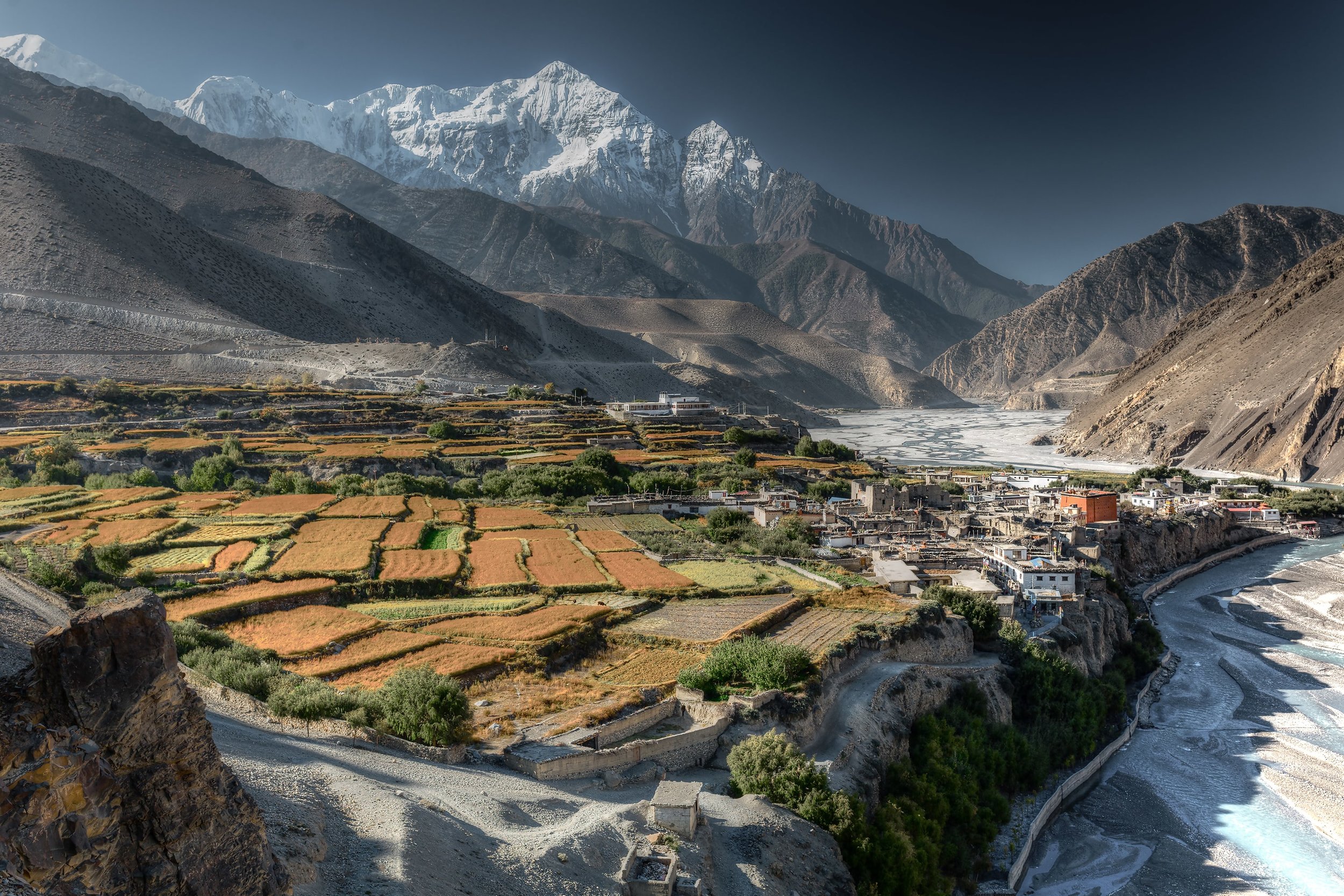
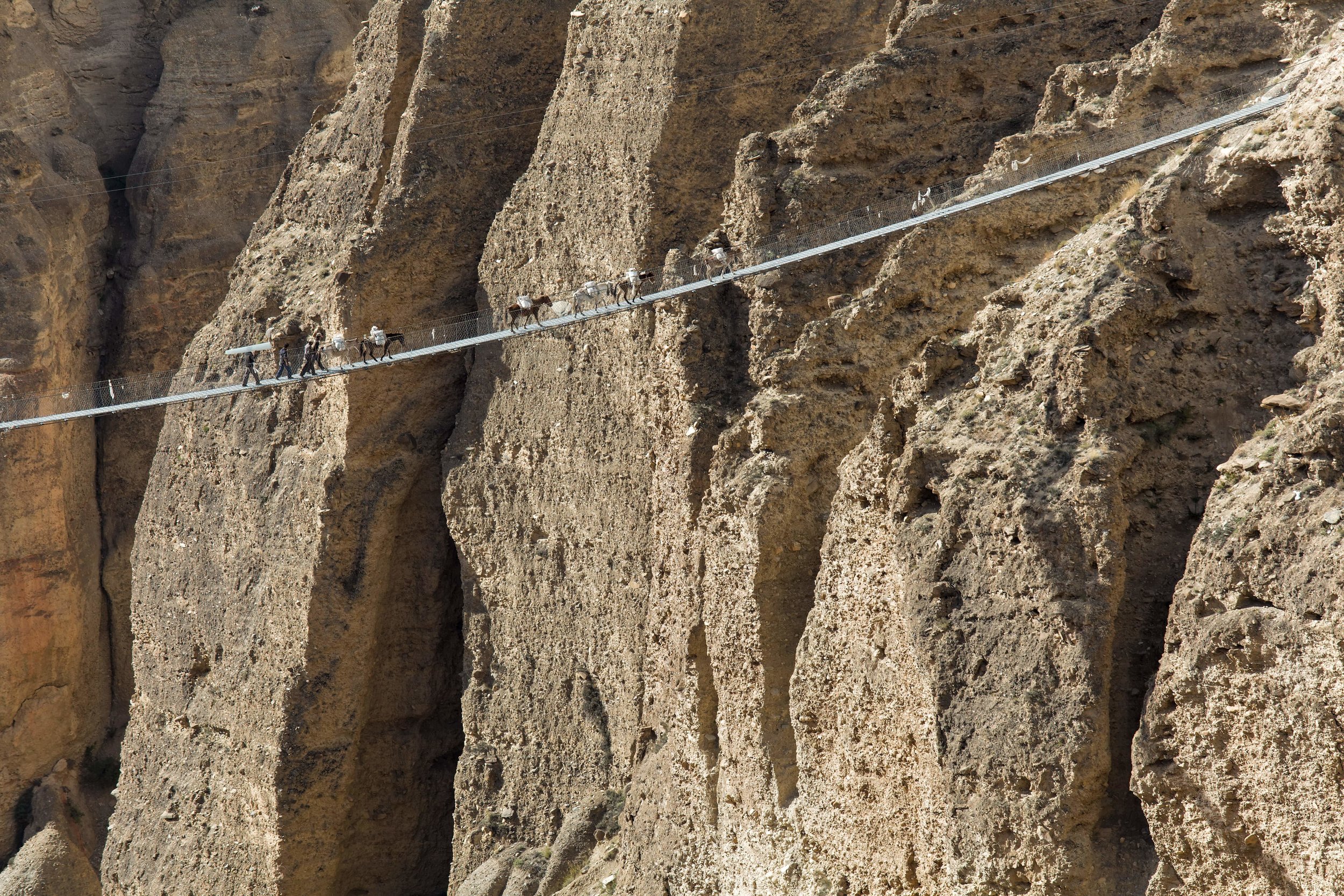
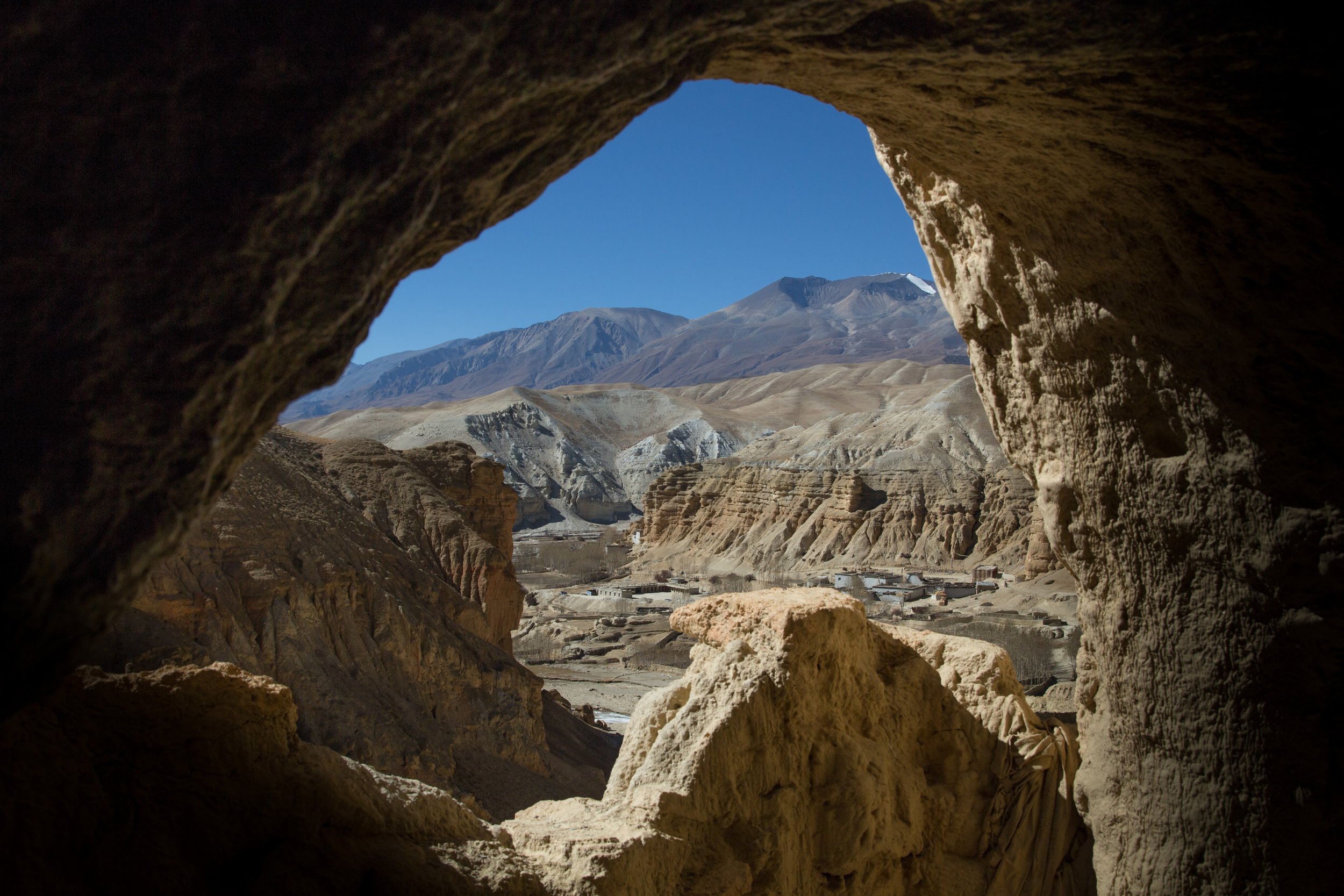
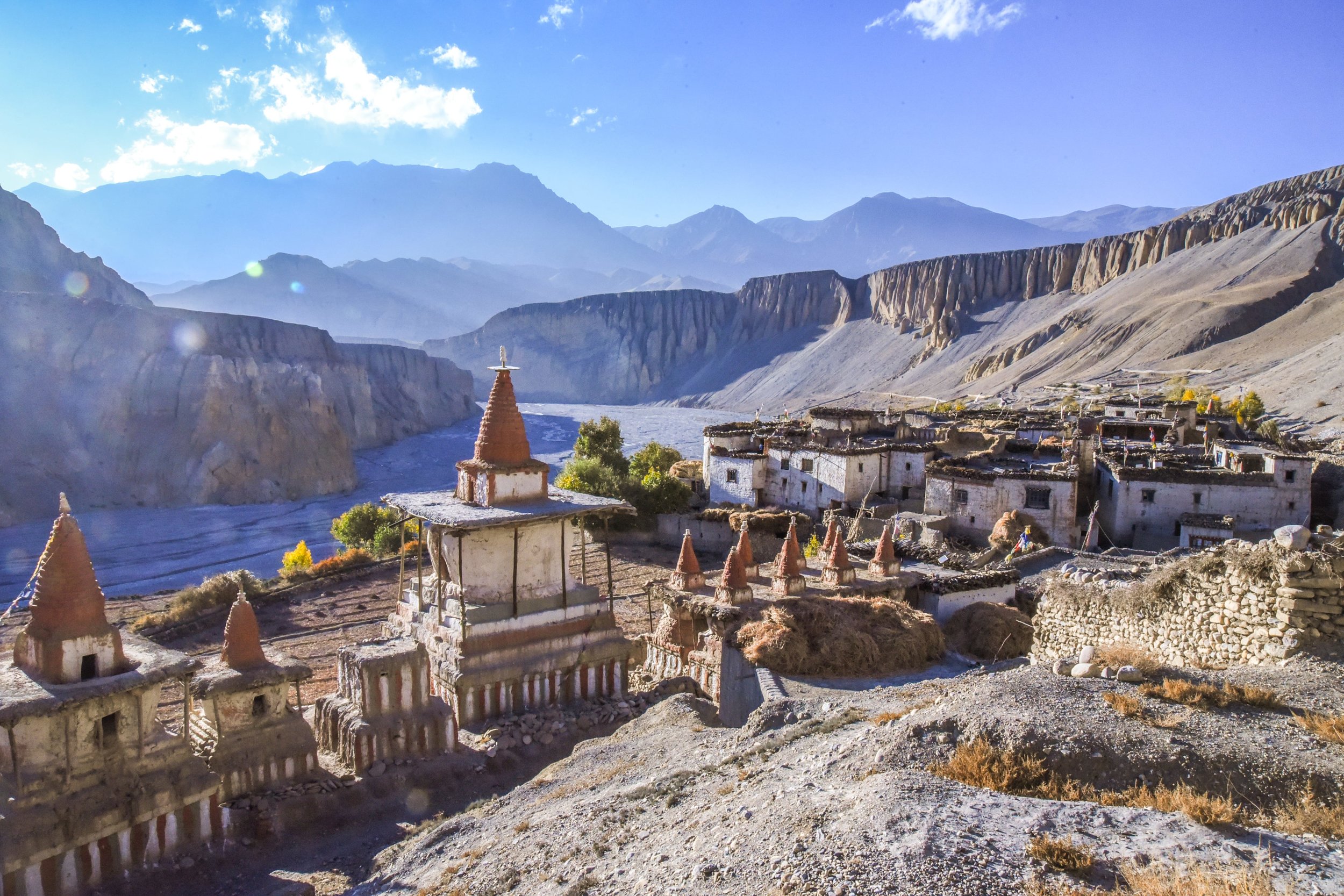

Annapurna Circuit ( 17 Days )
Months during summer ( Monsoon in Nepal ) recommended: Early June and Mid August
The Annapurna Circuit - appropriately known as Nepal's classic trek - offers more variety than any other equivalent length trek, and will take you through virtually every type of scenery that Nepal has to offer. You will witness superb views of the Annapurna and the Dhaulagiri mountain ranges and an amazing variety of landscapes varying from sub-tropical through alpine peaks to an arid semi-desert akin to Tibet. The climax of the trekking involves crossing the iconic Thorong La Pass (5416m). The majority of the trip will be based in tea-houses throughout the route where you will also get time to spend in villages inhabited by many of Nepal's different peoples, both Buddhist and Hindu. Like Mustang region, this is the only time of the year where the floras and faunas bloom which occurs due to light rain sprinkles brought by the escaped monsoon clouds from the Himalayas.
If you would like to travel to Annapurna circuit, we have fixed departure dates announced. ( Click here ) for detailed trekking adventure information.
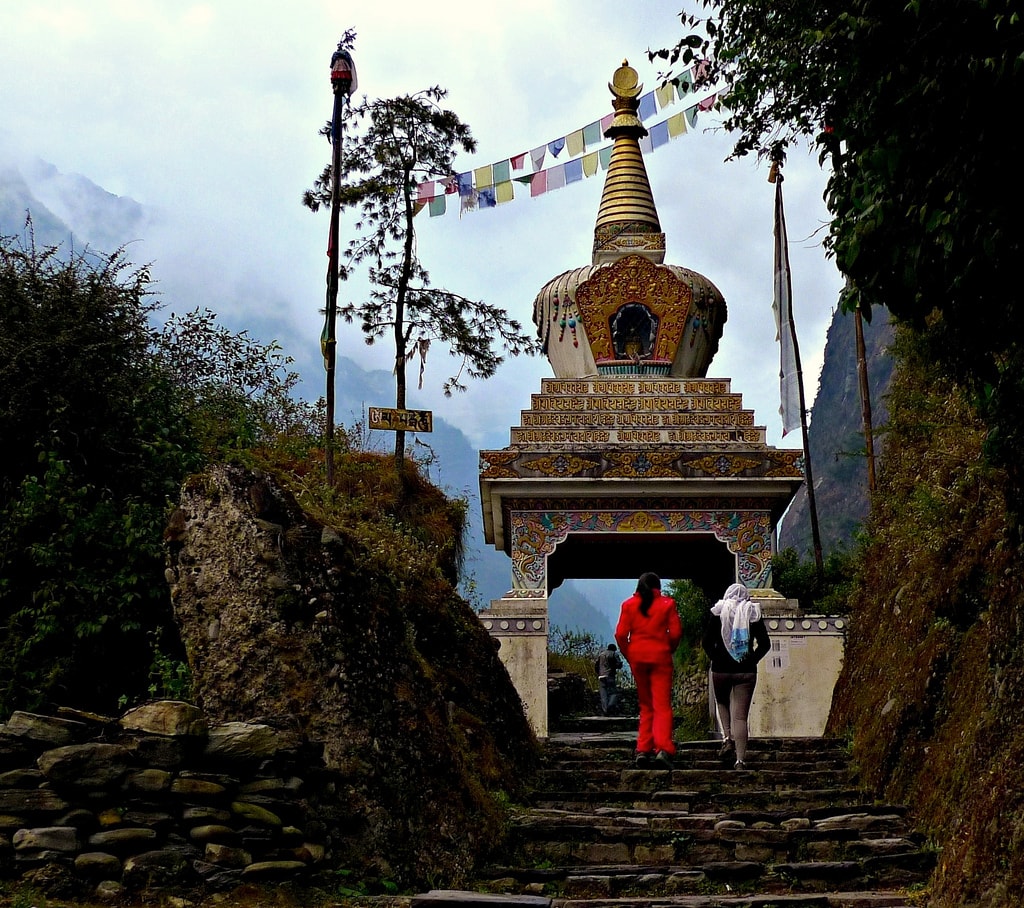
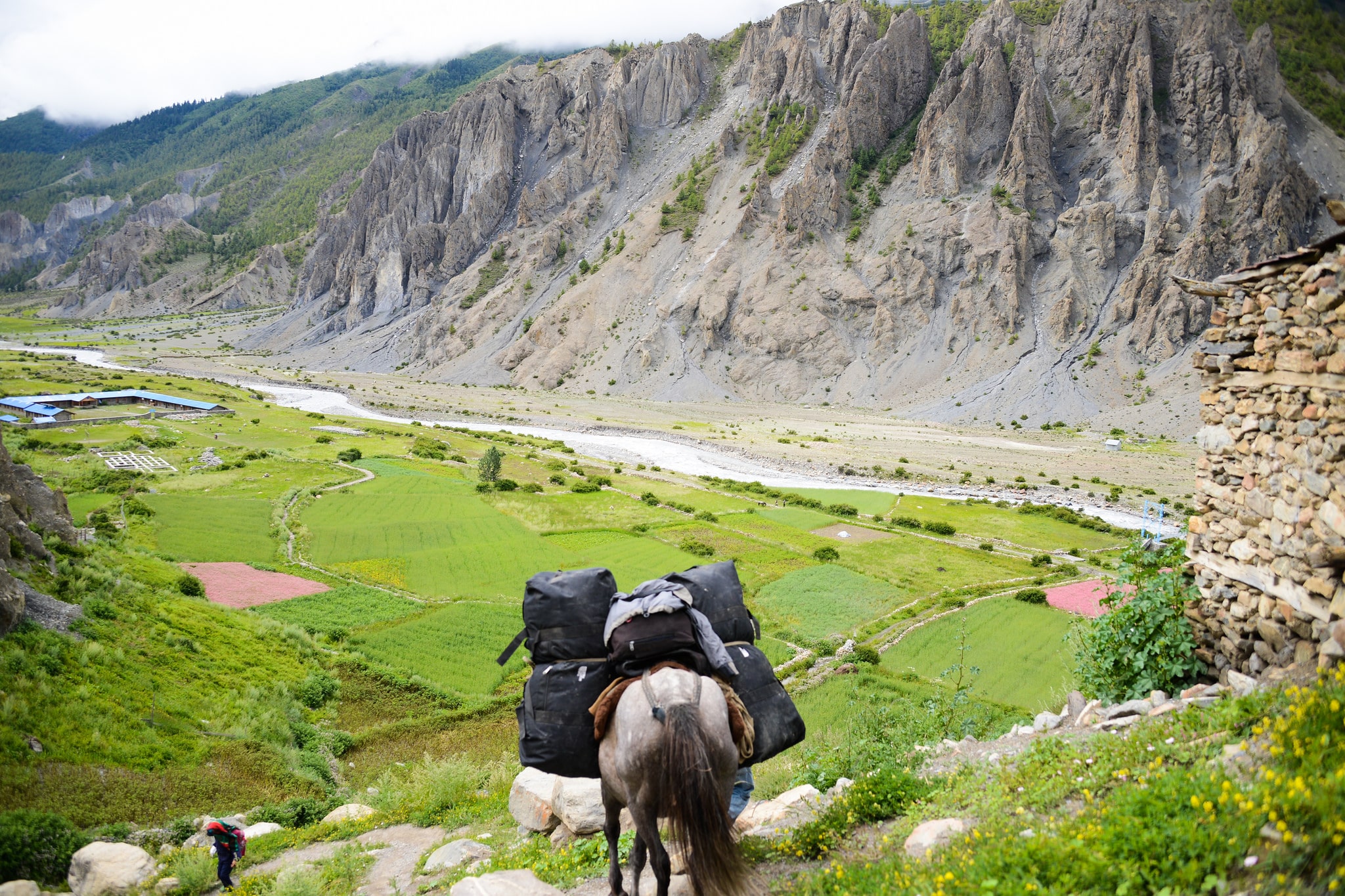
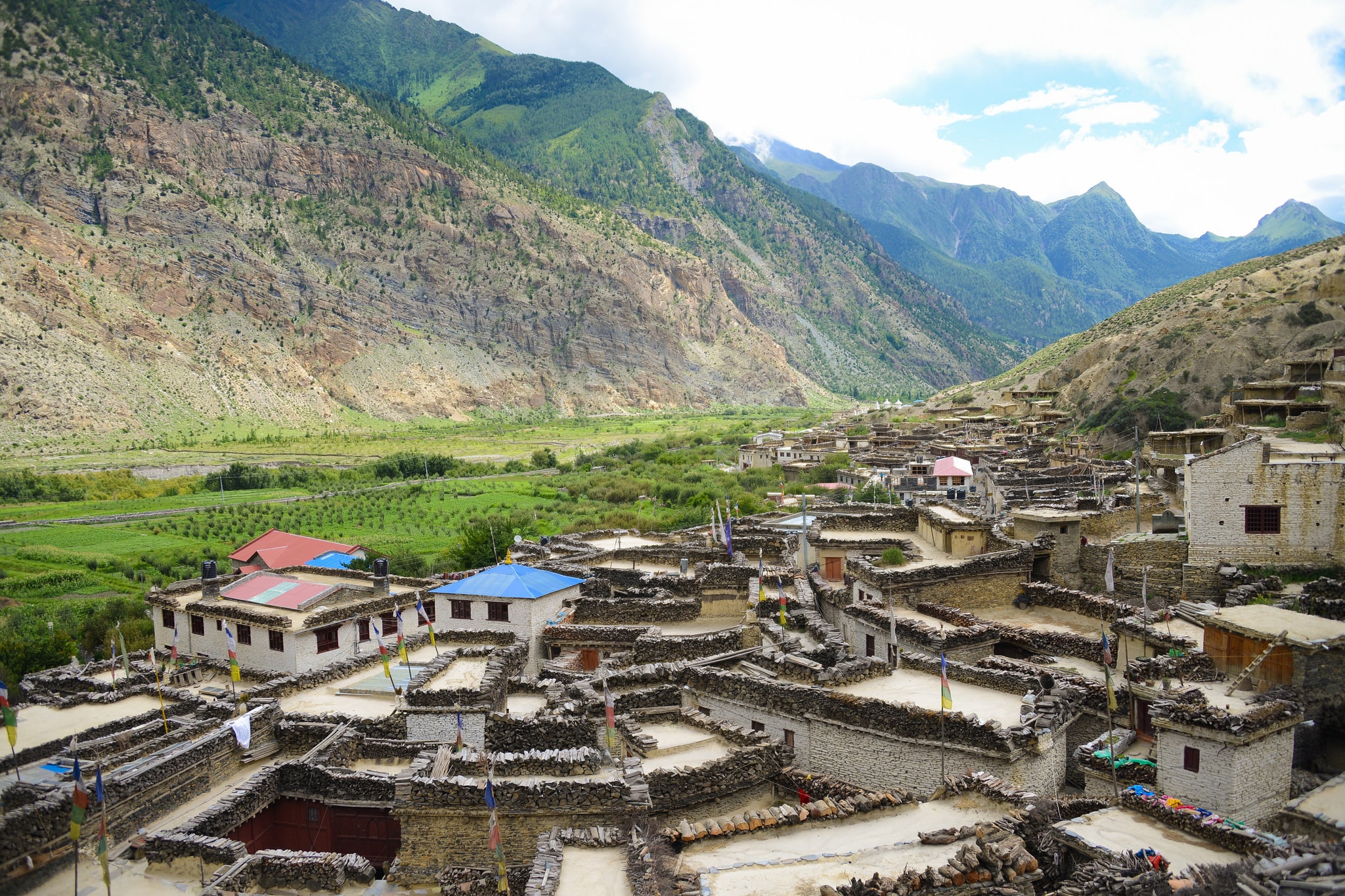

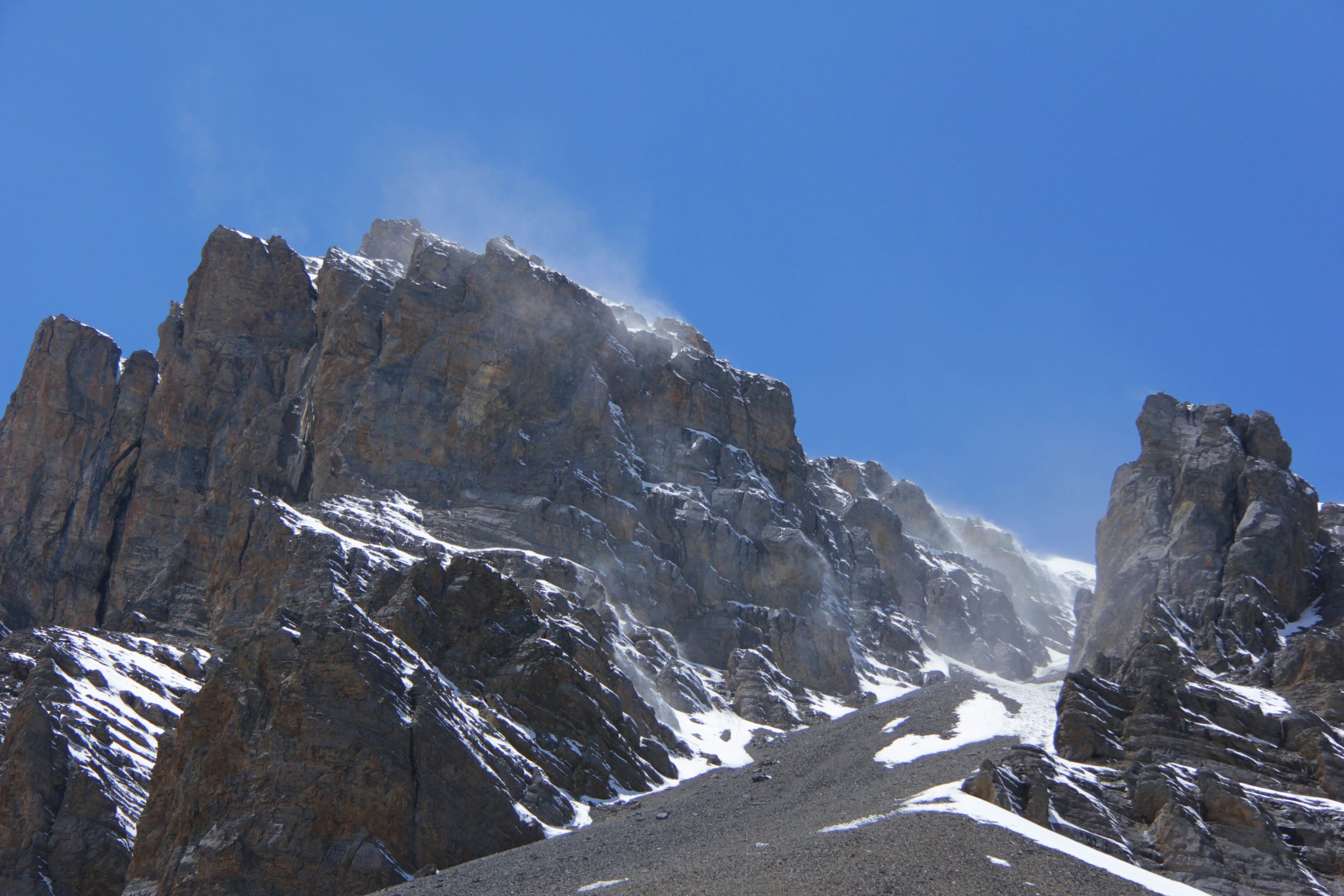
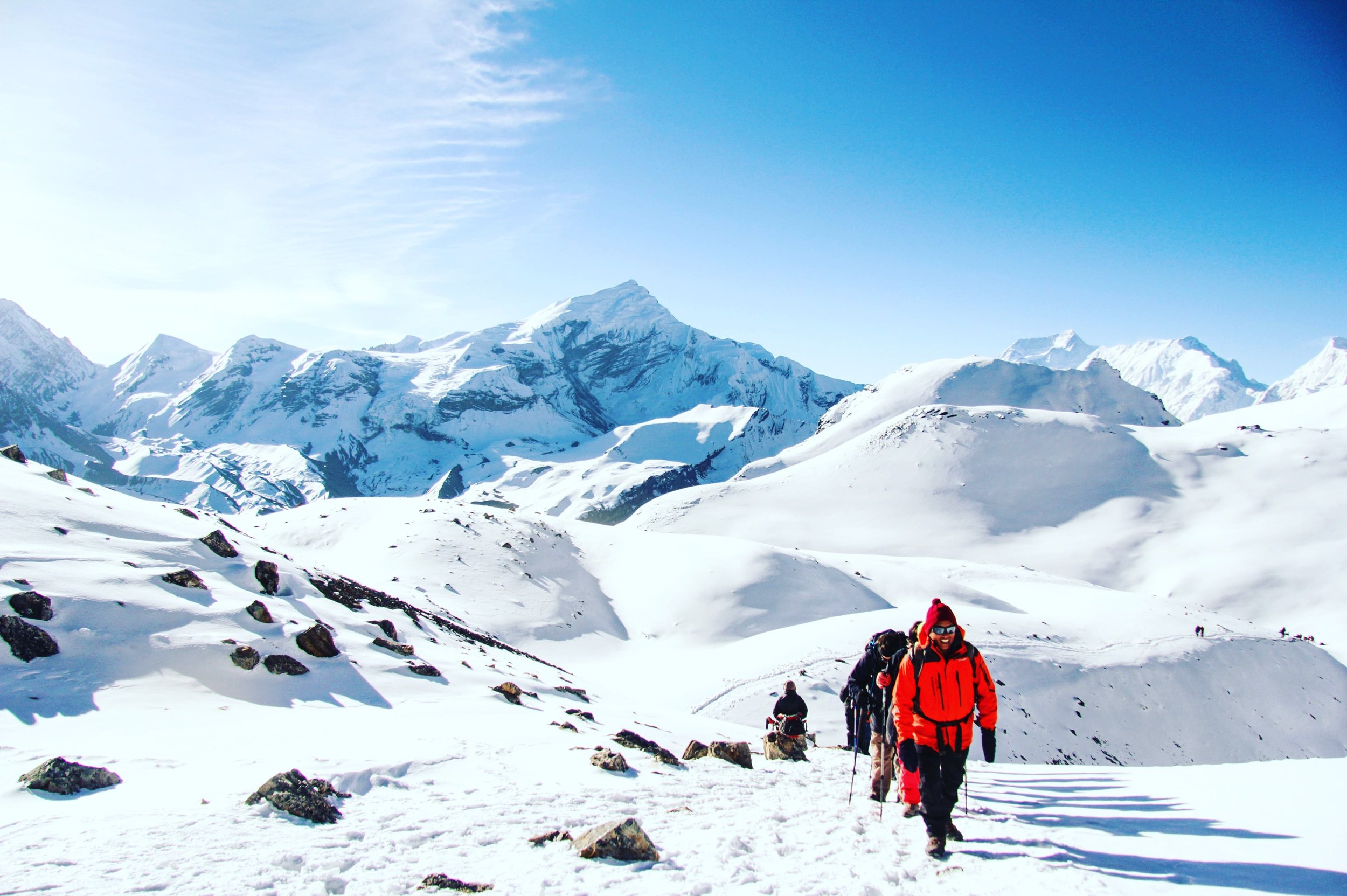
Dolpo and Phoksundo ( 30 days )
Months during summer ( Monsoon in Nepal ) recommended: Early June and Mid August
Trekking the Dolpa Circuit is an experience you’ll never forget. You’ll have the opportunity to experience life in the remote highlands. The trail passes through a variety of landscapes ranging from green pastures (in some ways resemblant of the European Alps), to barren rocks that extend into the Tibetan plateau. The Phoksundo Lake is of an incomparable beauty, with its deep blue and emerald colors surrounded by steep bold rocks. On the way, you’ll encounter small authentic villages steeped in Tibetan culture and tradition. Buddhism and Bonpo are very important for the people living in these villages and interwoven in everyday life. Bonpo religion is the oldest spiritual tradition of Tibet. It is very closely related to Buddhism but has more shamanistic and animistic influences contributing much to the region’s mythical appeal. Due to its remote location, Dolpa is still an “off the beaten track destination”. Tourists are few and far between, especially in the summer months. The Dolpa Circuit is a quite strenuous trekking with some steep climbs. The trail ascends to two high passes, Numa La (5318 m) and Baga La (5190 m). These crossings involve long climbs and long descents. That being said, the scenery on the way, the views from the passes and the encounters you will have with the Dolpa people will make it all worth it. Camping is recommended for this trek. There are basic guesthouses in Juphal, Dunai, Lingdo, Dho Tarap, Ringmo, close to Sanduwa (next to the Amchi Hospital), Chhepka and Kageni. At the other places, you will have to camp.
If you would like to travel to Dolpo region, we have fixed departure dates announced. ( Click here ) for detailed trekking adventure information.
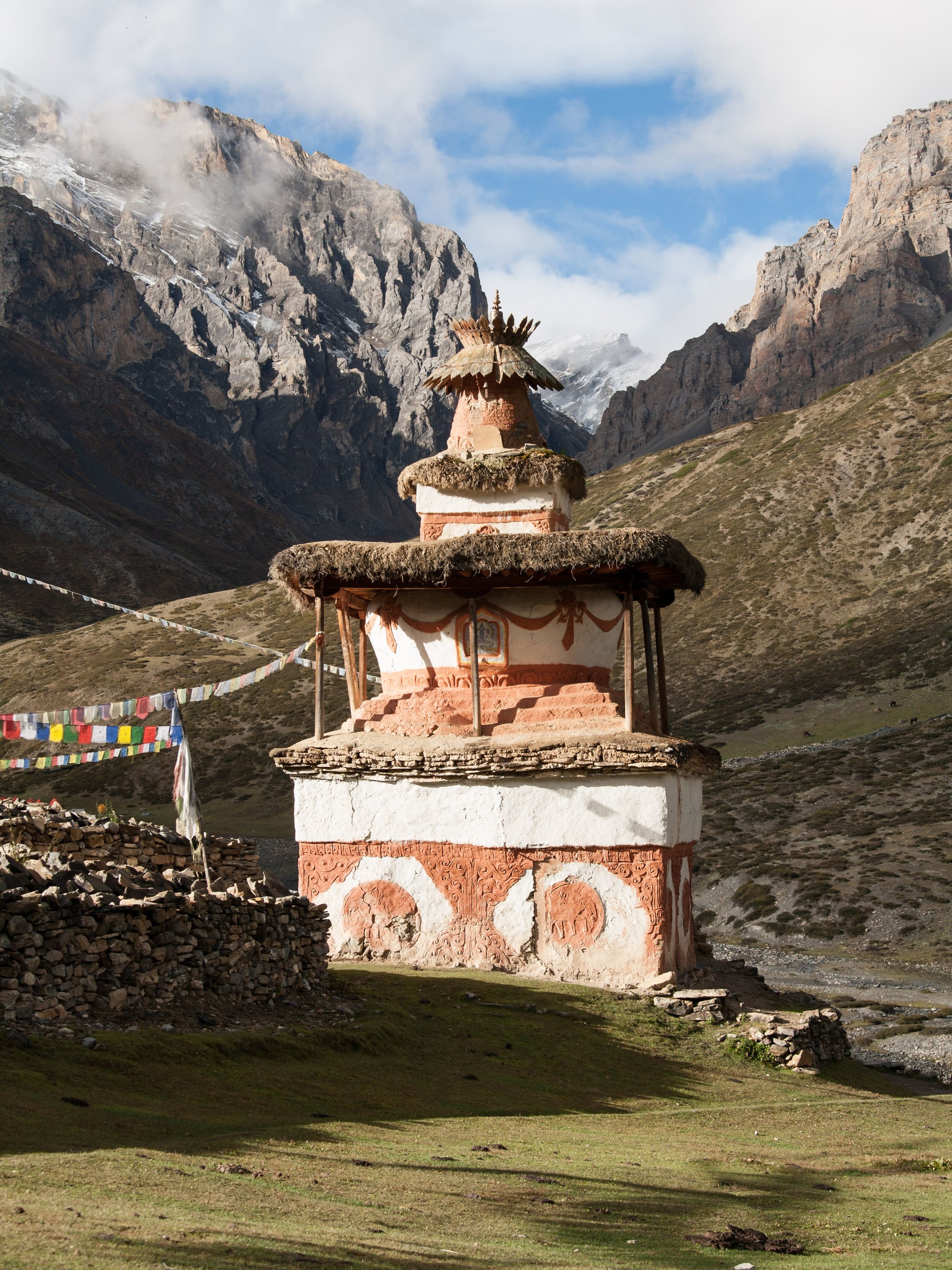
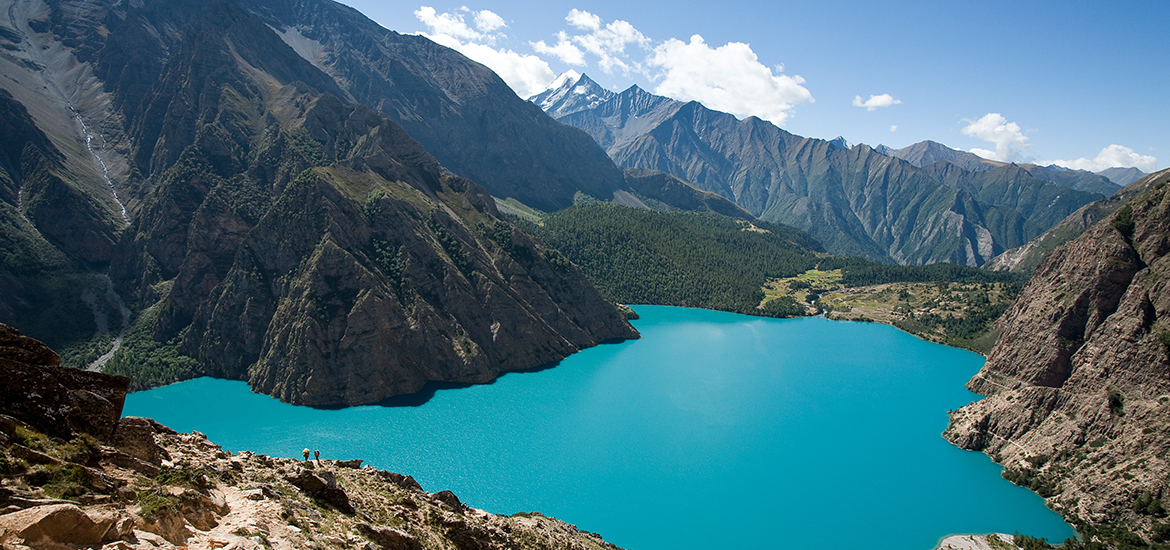
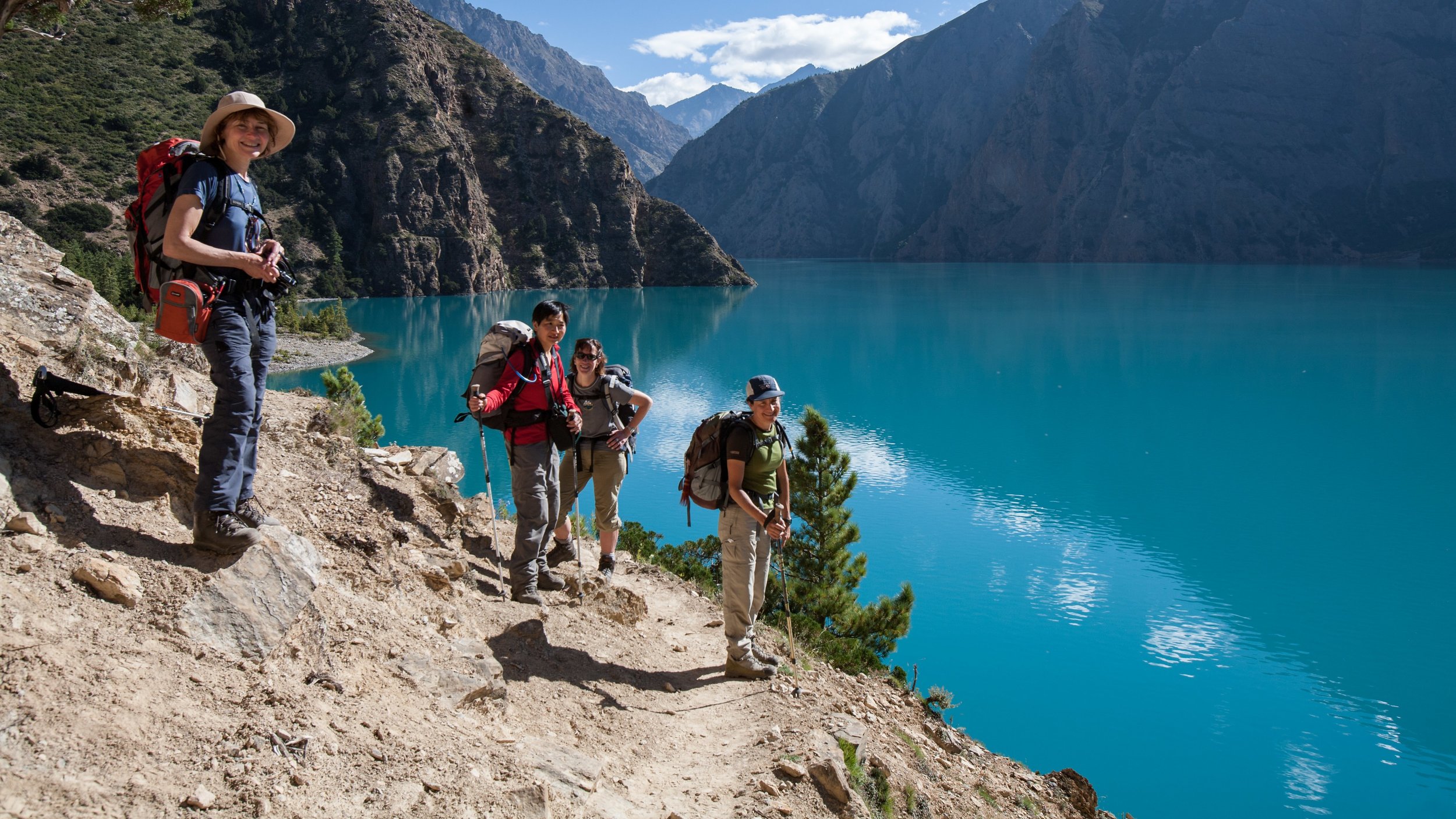
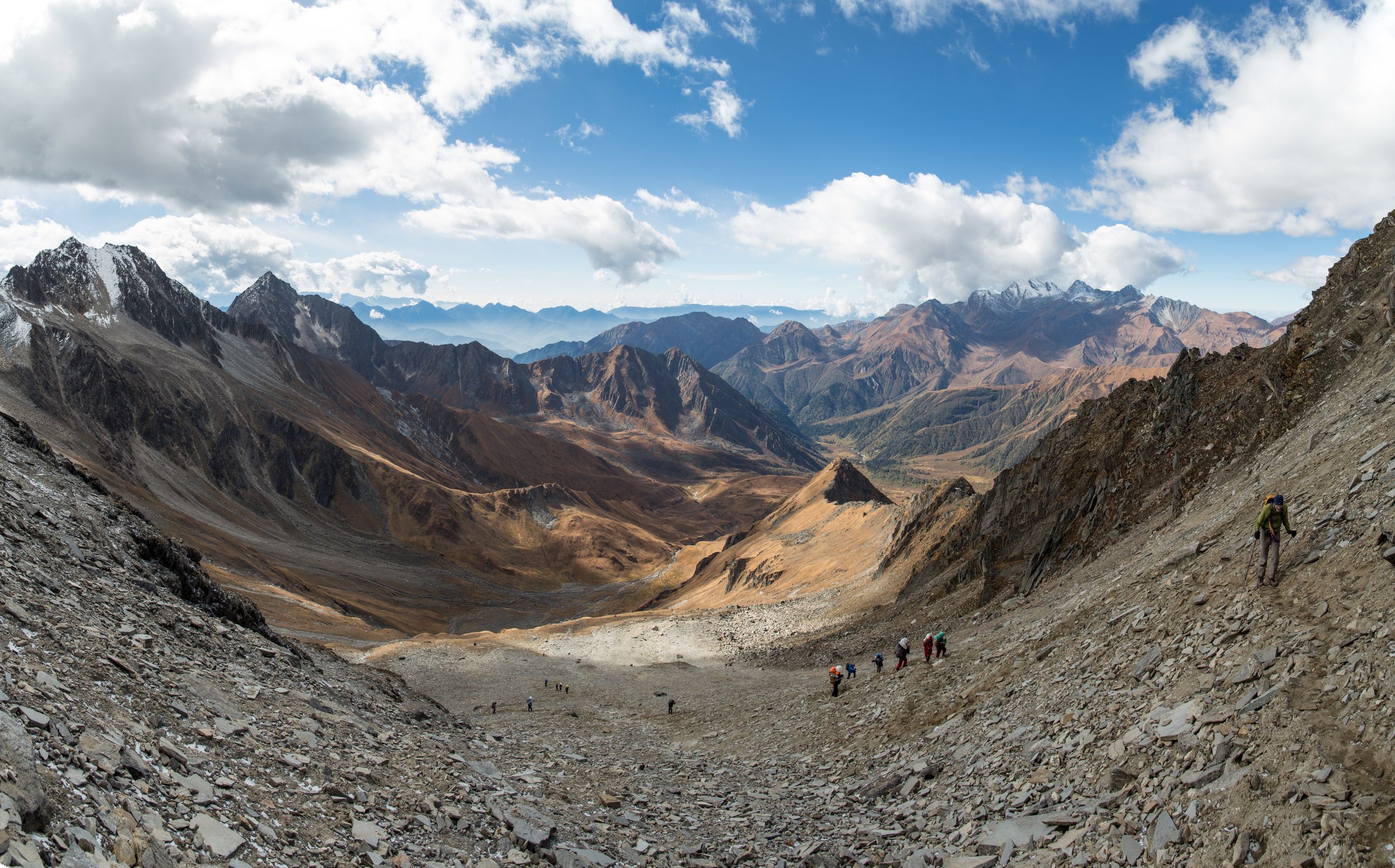
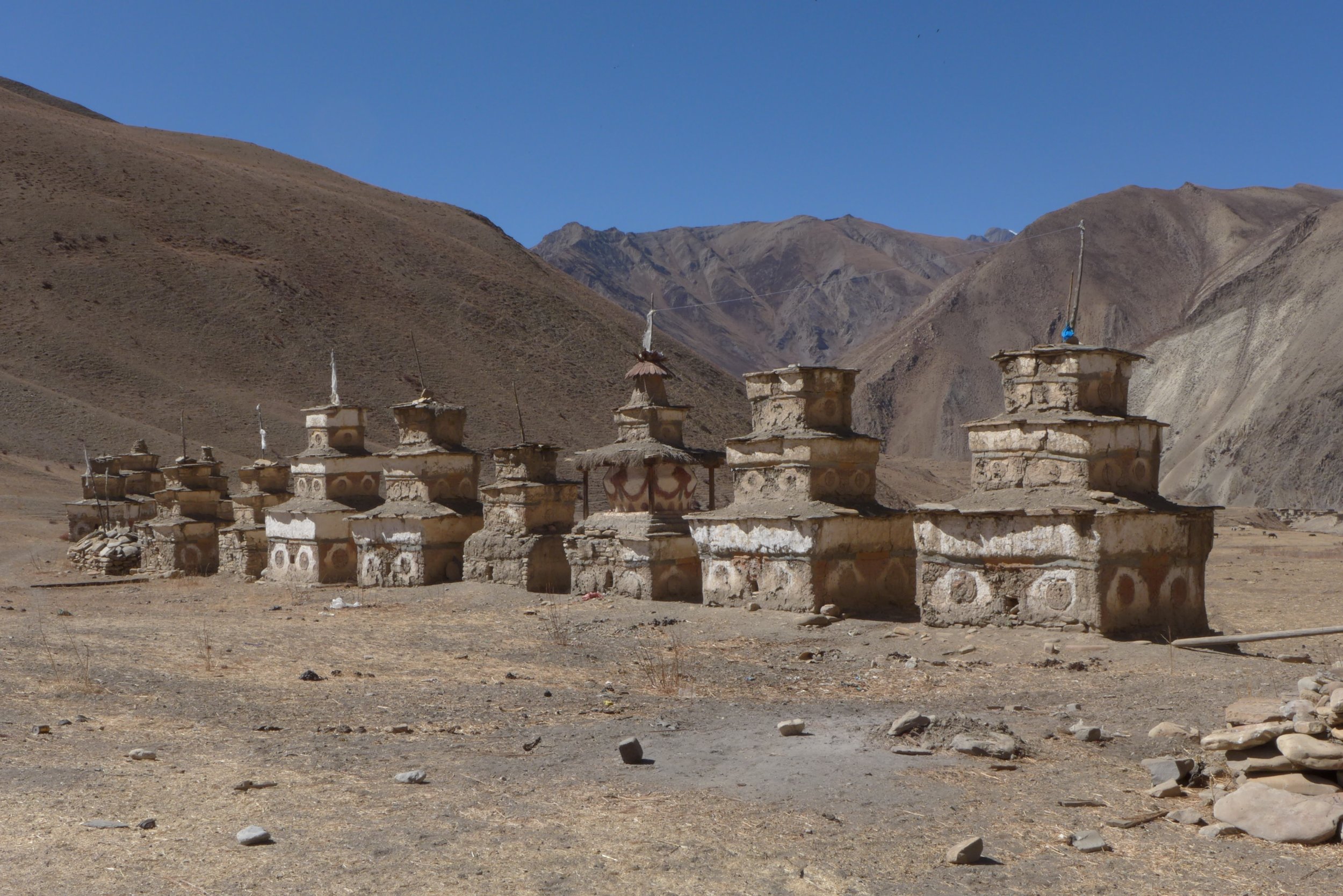
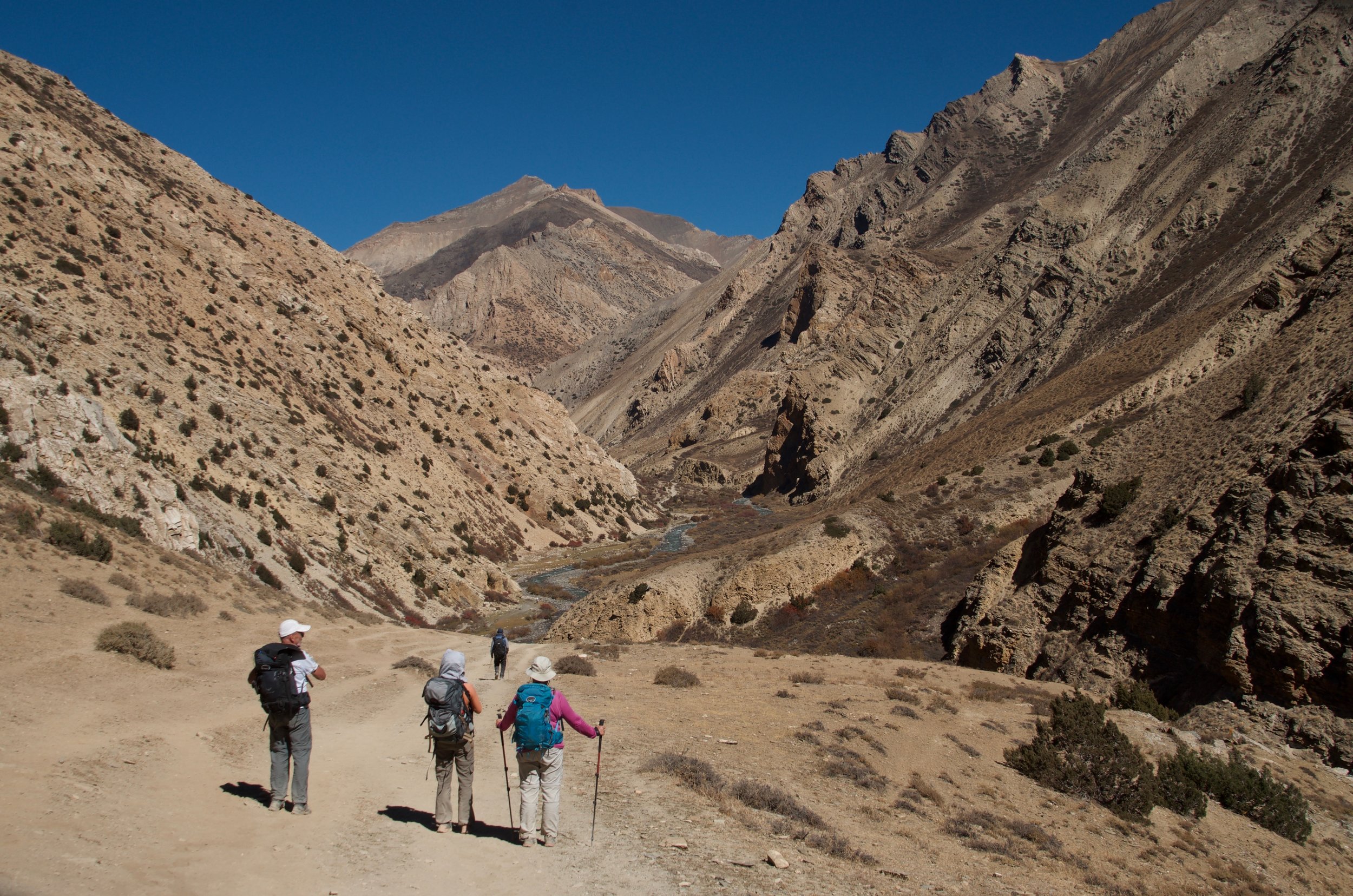
Soft Adventures ( Culture and tours )
Kathmandu is open for tourism throughout the year. If you are looking for short relaxed local guided tours with spells of cultural activities in your travel plans then tours like temple run ( click here ) and visiting monasteries, UNESCO heritage durbar squares, museums are recommended.
Also, tours around outskirt villages of Kathmandu are possible. Paddy plantation festival falls around mid-July every year and this can be experienced around this time of the year. This is one of the activities that is unique and has been drawing attention for authentic travel experience.
To plan your adventure, please email us at namas@namasadventure.com for travel advise and other expert advice on adventure travel recommendations.
Written by - Bisesh Gurung / Founder
Credits:
Pictures by
Dolpo - Jamie McGuinness (https://www.flickr.com/photos/jamie8848/albums)
Dolpo - Mayriam Kaba
Upper Mustang - Jamie McGuinness (https://www.flickr.com/photos/jamie8848/albums)
Annapurna circuit: Huey yoong (https://www.flickr.com/photos/bluryee/)
World's Most adventurous airport. LUKLA
Ever since I have voiced my want to trek Everest, everyone has been asking me one question. Is the airport and plane ride safe? I think the tag “World's most extreme and dangerous airport” (The History Channel, 2010), has given Lukla Airport a negative connotation that there are accidents every day or every month. This is not the case at all, but one can see why the calamitous perception.
On paper, Lukla airport is the perfect recipe for what could be a knuckle-biting near disaster. Only certified carriers (STOL) and pilots can take this 40-minute long flight, during which you will find yourself dodging mountains and flying through thick, white smothering of the surrounding clouds. With the unpredictable weather and no navigation aids, pilots must use their visual flying skills, which as I mentioned are at times blurred, and their empirical knowledge of the area’s terrain.
Reaching the end, you are faced with a beautiful view of the small, colourful town of Lukla at an altitude of 9,500ft, perfectly ready to have your trekking boots on the ground. But here what you see may not be the best for your blood pressure. Here, it’s time to find another reasoning behind the infamous name, that is, the relatively tiny runway. Sitting at only 1,729-foot long, a very tiny strip in comparison to Heathrow’s 12,802-ft, this timorously tiny runway is coupled with the fact at one end of the runway is a steep cliff with a 2,000-foot drop and at the other is a solid, stone wall. The plane either lands, or falls off the cliff or hits the wall.
However, as apprehensive as what I have described above may make one feel, the reality is quite anticlimactic. Given good weather, most flight activity happens between six and nine a.m., and during peak season there can be up-to 30-50 flights a day. While the airport only handles 4 planes at a time, it’s a quick switch over to take the waiting trekkers back to Kathmandu and before you know it the planes are flying back already in the next 10-15 min. Furthermore, given Nepal depends heavily on tourism, especially in the Everest and Annapurna region, and flight safety is given the utmost importance. It is carefully followed at both regional and governmental levels and I can say by experience that they don't take the flights lightly for Lukla flights. The bummer tends to come in the only one other form, an externality which I advise all travellers to be aware of. The biggest problem is often the temperamental weather.
Sitting at such high an altitude and in such vigorous terrain, the sky which looked clear a few minutes ago, can suddenly change with winds blowing swathes of fog and clouds obscuring visibility. At such moments, for safety all flights will be stopped, and should the weather persist, ending in cancellations. This is why, although flights are scheduled to run from 6am to 5pm, I say most flight activity takes place between 6-9am. I encourage all Everest trekkers to have a contingency plan in case weather turns bad and there is cancellation of flights. We recommend an extra 2-4 days to allow for flight cancellations and re-bookings or extending your budget to include helicopter expenses.
Downhill runway
If you decide to charter a private helicopter, then it will be $1500-2500 for 5 - 6 people (the higher margin to get from Kathmandu to Lukla). When flights are cancelled, as is so often the case with later flights, there is also a good chance of unused seats in the helicopter flights and you can ask your tour company or helicopter companies to query whether there would be space for a smaller party (1-3 seats) to join ad hoc. It saves costs, lessens wasteful use of time and resources for all parties involved and we recommend speaking with your tour provider to see if and how they can help you in such a situation. In the case of cancelled airplane flights, you are entitled to the refund so be sure to query this with your tour company, or the airlines if you didn’t use one.
Third-party tour operators are imperatively valuable in such situations as their network allows them to get up-to-date information from both airports involved and search for the contingency flights. A recent case caused much confusion when, although the weather be sunny and clear in Lukla, the airport closed. It turned out the route from Kathmandu to Lukla was turbulent and unsafe to fly, but at Lukla one couldn’t see that far into the distance. A wide lens is needed when dealing with this route.
While one can after gaining experience trek the Everest route by themselves, the stress involved in getting to the starting and ending point of Lukla, arranging back-up flights, especially if you don’t speak the language, is exponential. Along with the aforementioned, perhaps “World’s most stressful…” is also a fair description. Tour operators and their teams are highly experienced to deal with unexpected situations, and the reason why it is still rare for people to make this trek on their own. At Namas, we have staff members who watch the route on both ends as well as partnerships with airlines and helicopter providers to ensure hassle-free flights. If you are planning to go to Everest base camp (click here), we have several dates announced for 2018. We take care of all your accommodations, flights, flight transfers, local Sherpa guide and porter service and meals during all trekking days.
Nevertheless, for those wilder ones, if you are planning a solo trip, here are some pro tips
Price one way: $160 - $175(one way) Kathmandu – Lukla and it is best to choose an early flight.
Speak to helicopter providers working in this area.
Return flights to Kathmandu - Confirm your ticket with your airlines a day before in Lukla. This is very important or else the operators assume that you won’t be taking that flight and will add other passengers to your seat. Speak to your hotels or tea houses staff in Lukla, most of them knows the airlines staff and will help you confirm your return tickets.
Peak season: April/May (Spring) is very busy with mountaineers and most of the tickets are booked for mountain climbers and big groups and October(Autumn) is another busy month. It can get very hard booking flights during these months, so plan early and reserve early (or you will have to count on your luck :D).
TIMS and Everest region permit is a must. (link)
If you hire a porter at the Lukla airport, please pay them $18-$20 a day. The real wage is much less as they will be using this daily rate to pay for housing and food along the route. (Be a responsible traveller)
Alternative routes to Everest region, 14 - 16 hours vehicle ride to Jiri from Kathmandu which adds extra 2 days to your Everest itinerary.
If you have any more questions regarding your trekking plans for Everest, please do let us know below in the comment box or in our email namas@namasadventure.com.
Happy Adventure.
Written by - Bisesh ( Founder / Namas Adventure )
Edited by : Shanti Rai ( Namas team member )
Momo: A nationwide favourite
MOMO
One cannot visit Nepal without enjoying several plates of Momo. No. One cannot, and one should not. Visiting Nepal without sampling Momo is like returning from the beach without dipping your feet, then your entire body, into the ocean. It is just not done.
Momo is arguably the most popular dish among the Nepalese folks. It is a dish that can make the entire nation literally salivate at its mere thought. Here are several reasons why:
First, it is simple to prepare. Momo is essentially a type of steamed bun. The doughy exterior is made by mixing flour and water together. The filling is usually a mixture of ground/minced meat, spices and vegetables. Put the two together and voila you have MOMO!
Second, Momo is a fairly experimental and practical dish. There are no fixed ingredients, which means people from all over the world can pick and mix accordingly to the local produce available to them. Consequently, ever since the Newar merchants brought the recipe and the name 'Momo' from Tibet, its native land, to Nepal and modified the type of meat and seasoning of the dish with local ingredients, a variety of Momos have been improvised to suit the taste buds of even the most pickiest of all eaters.
Some of the most popular types of Momo's are:
Steamed Momo
Kothey Momo: half steamed, half fried
C-Momo, otherwise known as Chilli Momo (the name should give away the modified ingredients):
Fried Momo (either deep fried, or steamed first then fried):
Jhol Momo (jhol meaning a thick soupy base, usually spicy):
Open Momo (perfect to mix and match your chutney/sauce/condiments by filling in each open pocket with something different)
Buckwheat Momo (for the health conscious)
Paneer/Cheese Momo (vegetarian option, or you can just make a vegetarian filling)
Green Momo (the dough is mixed with spinach - for those who prefer to be deceived whilst consuming their greens)
The choices are endless. Therefore, if you ever find yourself making Momo at home, feel free to personalize. If you want to add eggs into the mixture, add it! Hot banana ketchup or a Samphire, add it! The world of Momo does not discriminate.
But won't too much experimenting (adding Marmite for example) spoil the broth? Good question. And the answer is: it might, especially if you add Marmite (but you never know until you try). Nevertheless, the appeal of Momo is more than just its taste (which is just heavenly by the way). For many, especially Nepali people who have grown up alongside the dish, Momo is also a food of habit, of memory, and somewhat of a legacy passed down from one generation to another (like what Kimchi is to the South Koreans).
Correspondingly, the third reason Momo is a national favourite can be pinned down to its level of availability. Wander through the streets of any part of Nepal and you are bound to come across a little cafe, a restaurant, or a make-shift little stand selling Momo. Wander into the houses and one out of five houses will surely be either making Momo, or will have frozen Momo in their fridges. Momo in Nepal is as routine as brushing your teeth. Often ordering Momo at a cafe or a restaurant will be automatic; it is a food you order guided by your instinct rather than by thought.
Making Momo is also, although slightly lengthy, a family and friendship affair. Because the process is so simple, it is common for families and friendship groups to gather together and spend half the day catching up and reminiscing whilst making Momo.
It is the best comfort food, but it is also the best party food; the best food to have when it's raining; when the sun is out; when your mood is low; when you are craving but you don't know what for. Momo's rate of satisfaction is so high (the taste, the taste is just to die for) that even when you know what you're craving, if offered Momo, you will opt for Momo.
It is this versatile and accommodating element that makes Momo popular, and also the fourth and final reason in this attempt to explain why Momo is a national favorite. Momo is not just a food you eat. All the moments you spend in between, whether with your friends or your family, whether you are spending a whole day catching up or meeting for a quick bite, is a memory. All the conversations and the laughter make up the Momo experience. And if it's a good memory, which it usually is if Momo is involved, then it is only natural for us to want to replicate and re-live the memory again, and again, and again - individually and nationwide.
Do we live to eat, or eat to live? Why not try some Momo today and find out one of the many pleasures of being alive.
Written by Dina Rai.
Everest Base Camp (to one day the Summit!)
Reaching the summit of the highest mountain in the world is not an easy feat. But then again nothing ambitious and foolhardy ever is. If success came easy in life, then it would not be called success. Nor would it be worthwhile the attempt. To accomplish anything, one needs to be willing to give, a little more than usual, and the greater the ambition, the more you have to give.
But we are a tenacious bunch, hence why we have been able to put a man on the moon. With skill, courage, and determination we have traversed the world and conquered the sky, the earth, and the oceans. The invention of writing, the internet, and antibiotics have altered life as we know it, and on the 10th of December 1948, the Declaration of Human Rights was adopted by the UN General Assembly, which declared all men (and women) to be equal and free to pursue their own right to happiness.
It is in our nature to make possible the impossible. Therefore, despite the herculean strength and effort, alongside the time (70 days) and expenses ($30,000-$70,000), required to climb Mount Everest, around 800 plus individuals attempt to climb the summit annually. Many fail and some failures are fatal, but the hold Mount Everest continues to have on our dreams, our goals and our imagination persist. For mountaineers, Mount Everest is the ultimate goal.
However, you don’t have to be a mountaineer or necessarily climb the summit to enjoy Mount Everest. The Himalayan trek to the foot of the highest mountain on Earth, otherwise known as Everest Base Camp, is a slightly less demanding and more achievable alternative for amateur climbers and intrepid adventurers who wish to get close to the rooftop of our world.
The trek is considerably less in duration (2 weeks) and expenses ($1000-$2500) but the experience is still as rich and rewarding. The route will first take you through the heart of the Khumbu region where you will be able to acclimatize and appreciate the local culture, before taking you further up past smaller villages until you reach the base camp. Alongside the local Nepali culture, you will also have plenty of opportunities to experience the unique Sherpa culture by visiting monasteries and museums along the way. You will share your journey with fellow like-minded trekkers, porters and plenty of yak and cattle herders, while every step of the way the most breath-taking and grandest views on Earth will serenade you in all its beauty.
Nevertheless, the trek, although not as difficult as the climb to the summit, is not a walk in the park. To put this into perspective: Everest summit is 8,850 m, while Everest Base Camp is 5,340 m high and in any book 5,340 m is still steep! Furthermore, the length of the trek is around 40 miles, therefore, to arrive at the base in lieu with the schedule, trekkers will be required to walk three to six hours every day at high altitude (it is recommended that all trekkers prepare by doing some form of cardiovascular training several times a week two to six months before their expedition).
But the trek is not a competition, therefore the pace will not be brisk. Rather, the route to Everest Base Camp is a route especially created for personal enjoyment. If you enjoy walking, then your days will be filled with walking for the sheer pleasure of it. If it’s adventure that you seek, then the climb through stunning forests, rivers and swaying suspension bridges should more than satisfy your fearless soul. Whether you live to accumulate unique experiences, or live to accomplish personal achievements, the fact that the trek to Everest Base Camp takes you to the base of the highest mountain in the world should surely be worth the attempt. And who knows, once you get there you might even decide to attempt for the summit!
Everest seen from Everest Base Camp
The world is your oyster. Work hard, dream big and succeed.
If you do have any more questions, please ask us below in the comment section or you can email us at bookings@namasadventure.com and our team will get back to you as soon as they can.
Stay well. Challenge yourself. Dare great things and live your story.
Written by Dina Rai.








